
My paternal grandfather was born on a farm located on Brugnano Road, San Martino di Finita. Today the road is replete with olive groves and farms, perhaps just as it had been when Vincenzo was born.
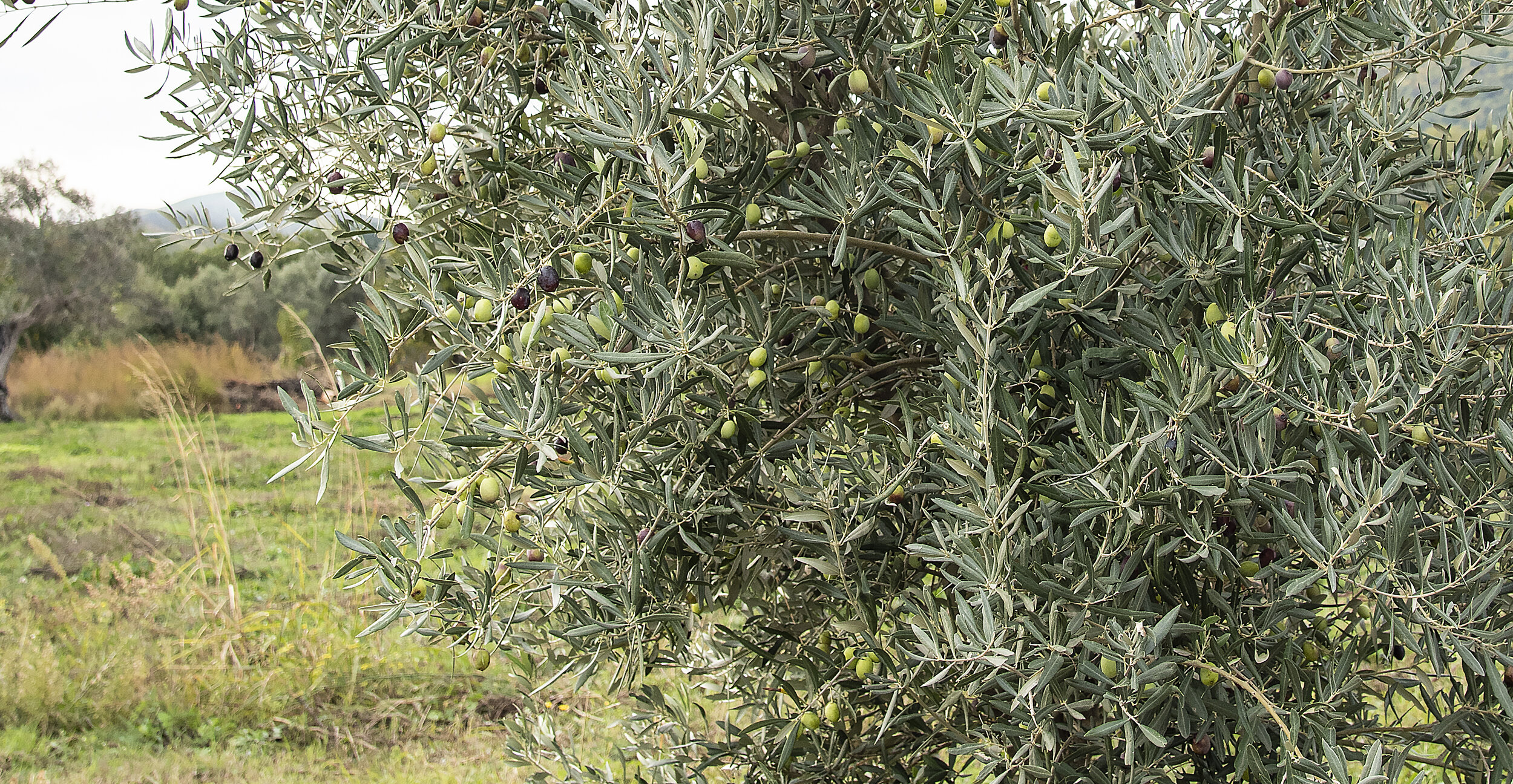
Olives have been grown in this region since the 8th century B.C. Today, roughly 10 million tons of olives are produced in Calabria, 99% of which is used to make olive oil.
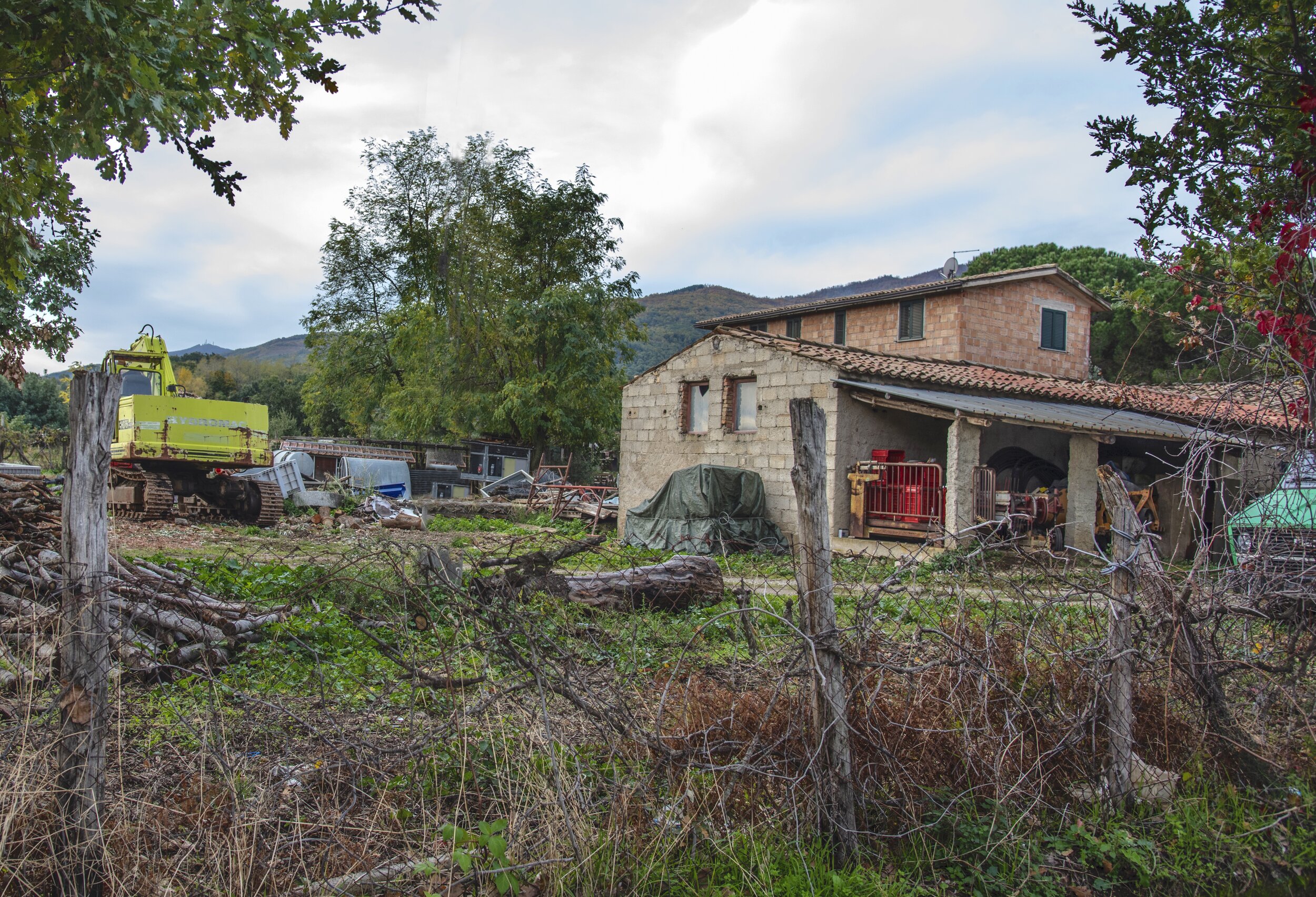
Farm on Brugnano Road.
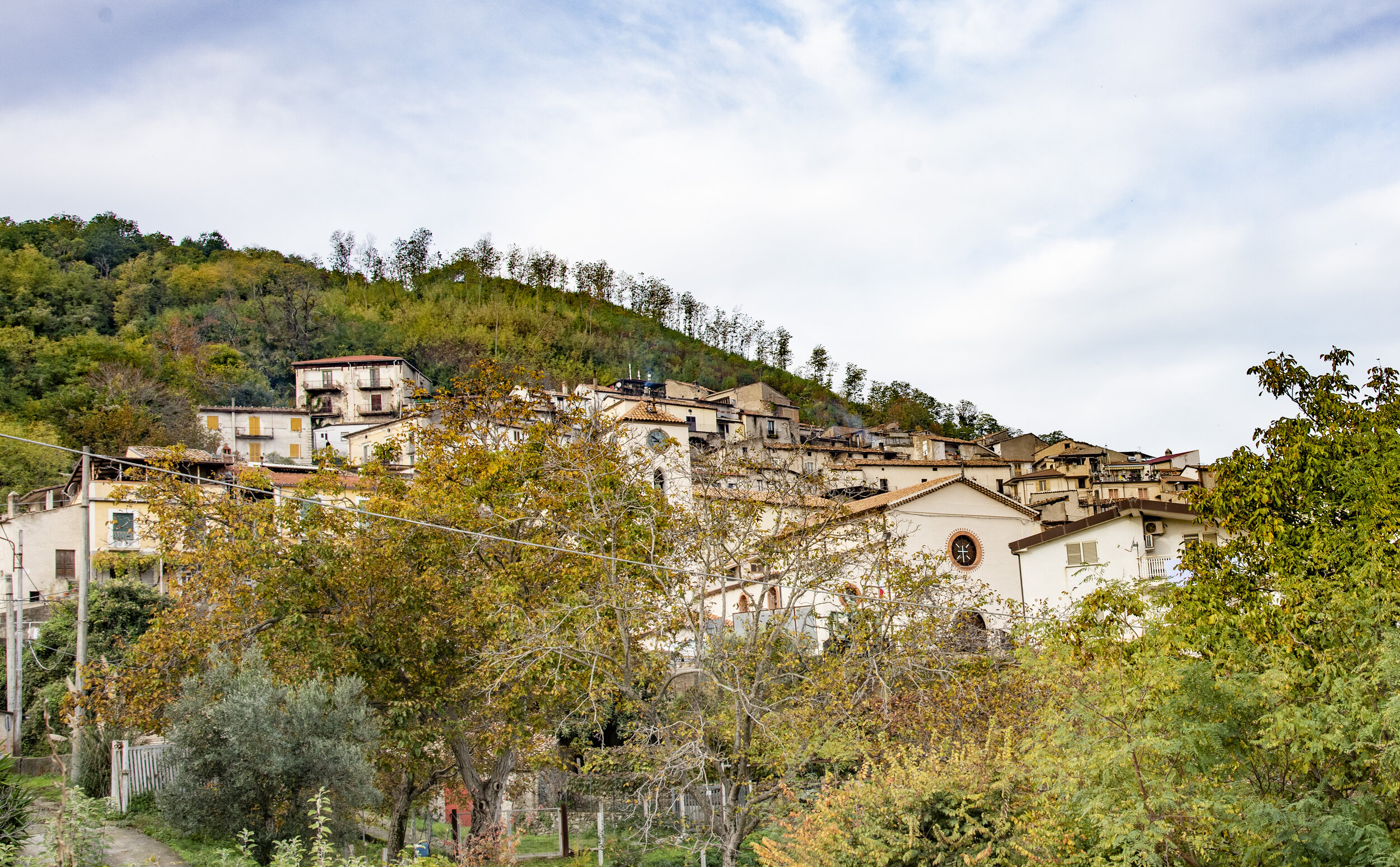
Approach to San Martina di Finita.
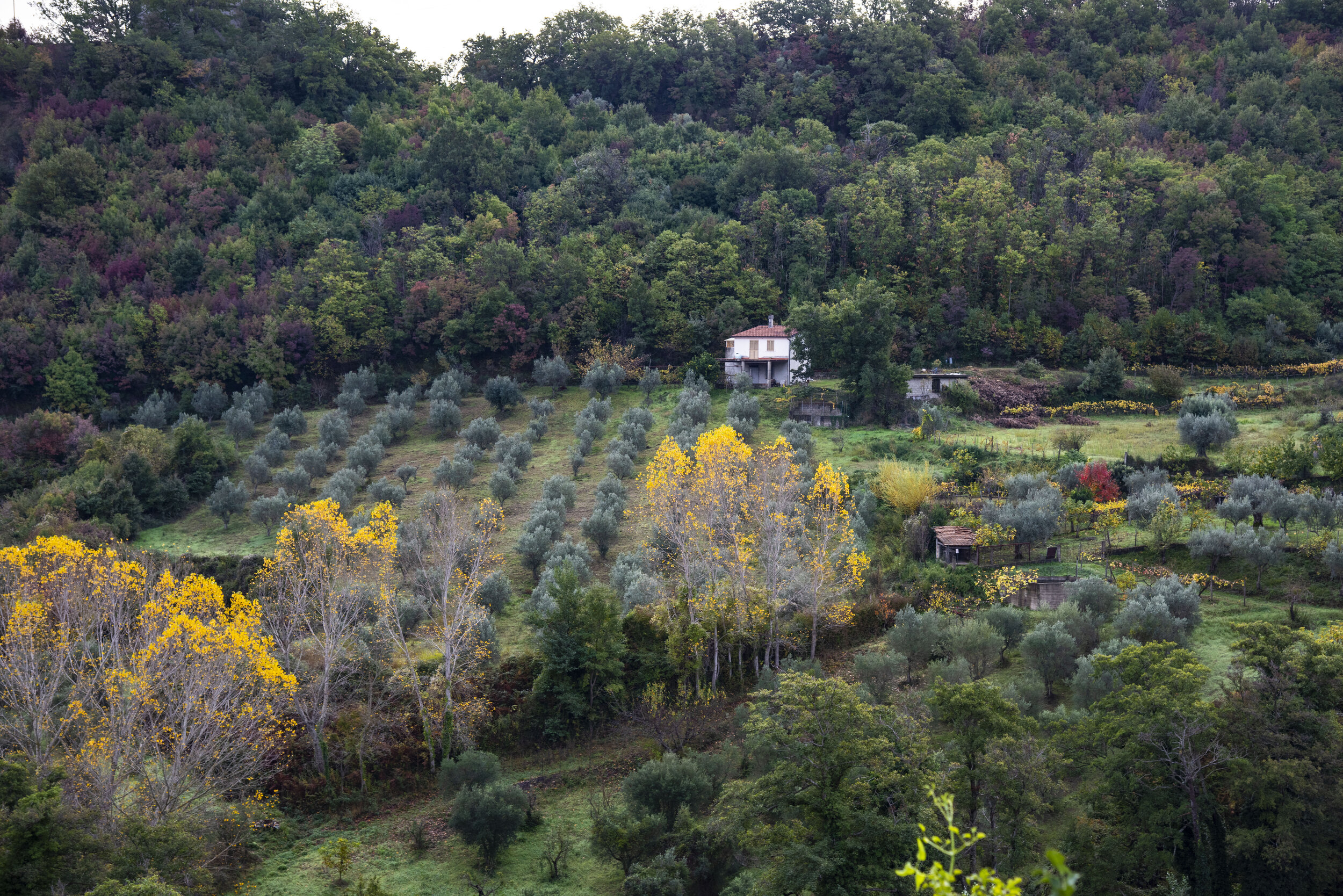
Carolea is the oldest and most representative regional variety of olive in Calabria, producing the Calabrian olive oil which is referred to as "green gold" due to its deep color.
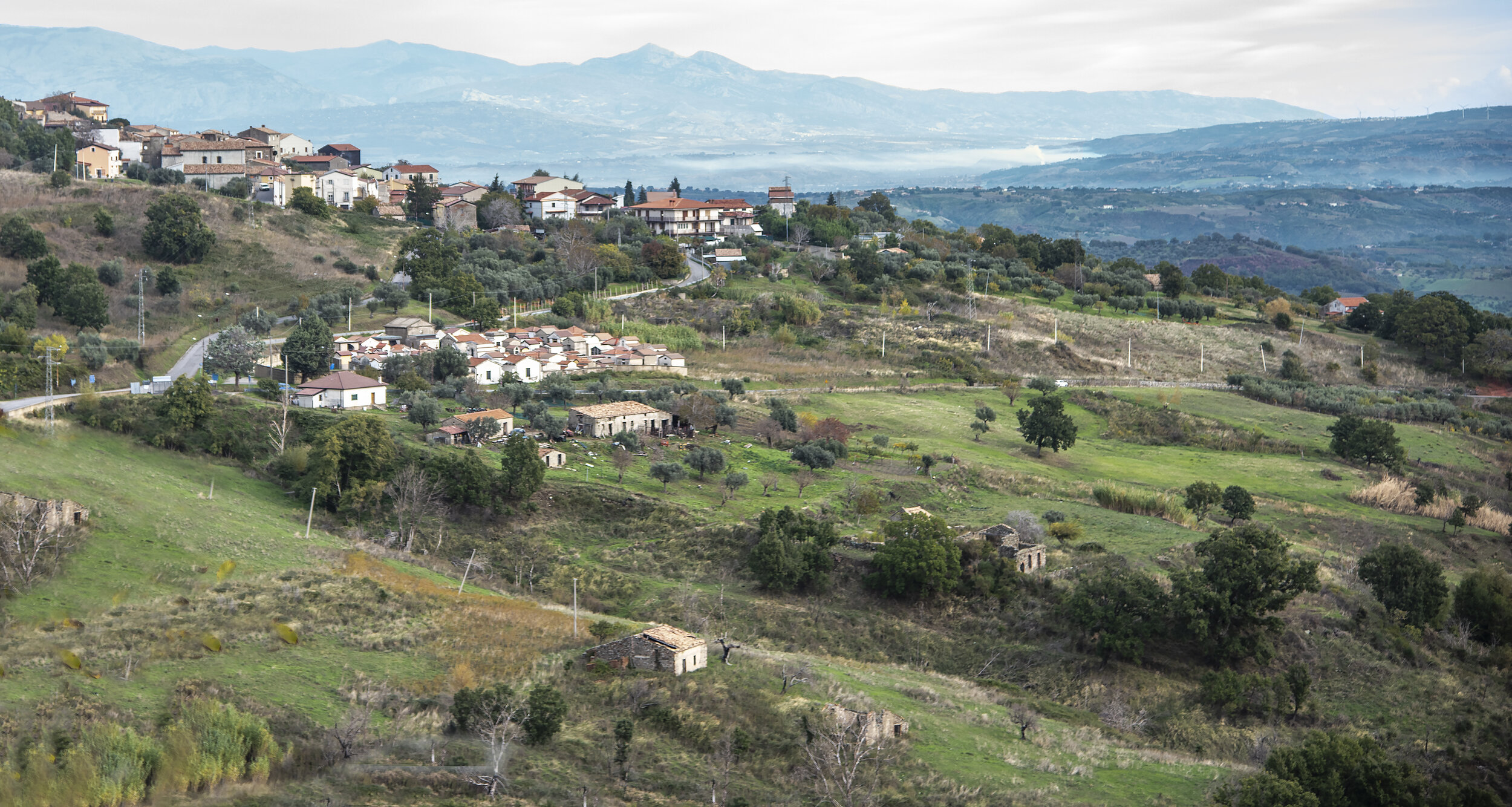
View of plain below San Martino di Finita.

Brugnano Road view of valley below San Martino di Finita.
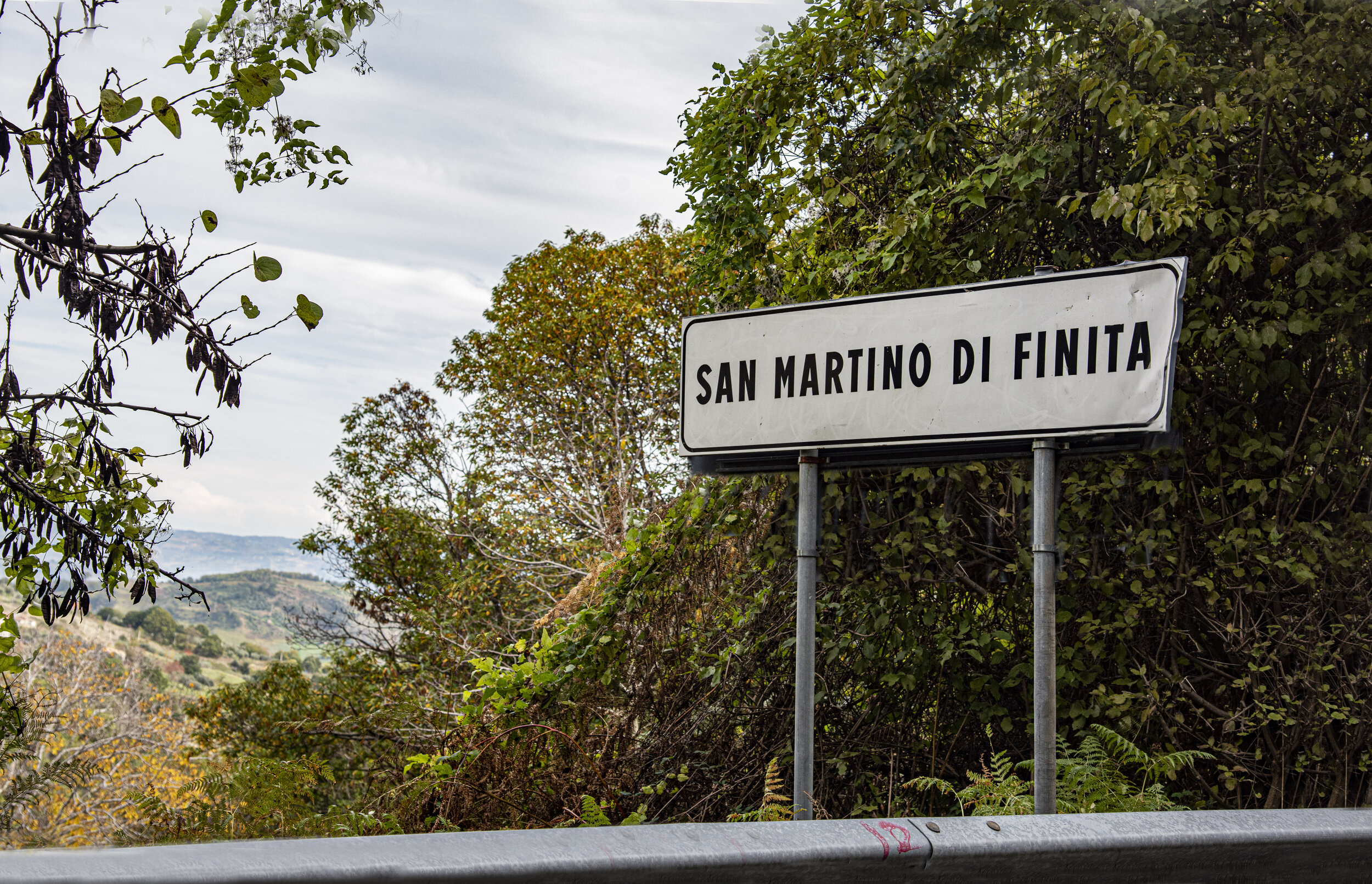
Entrance to San Finita di Martino from Brugnano Road.
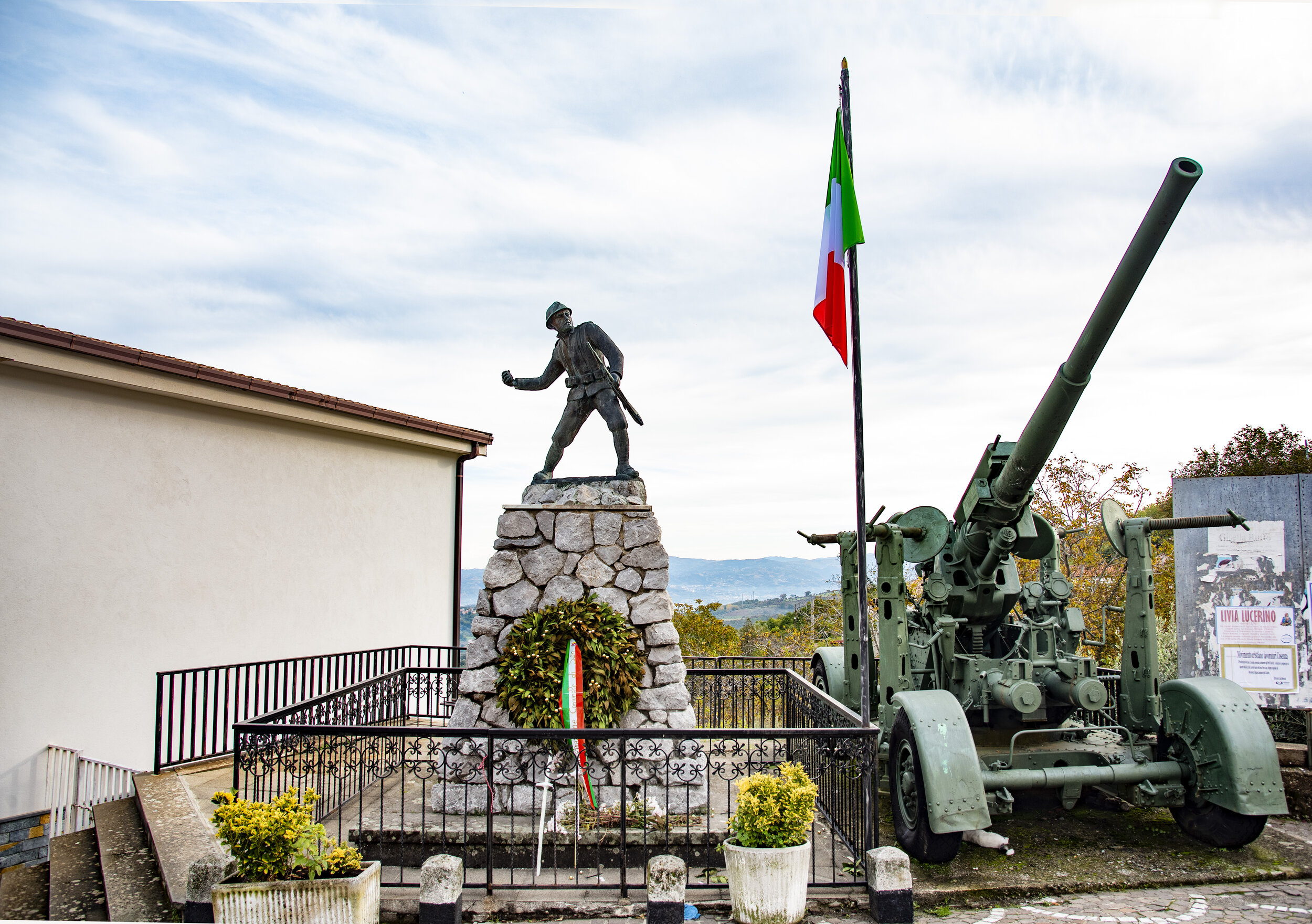
The first thing we saw entering the town was its war memorial next to a cafe. We parked the car to get some coffee but first wanted a look at the memorial.
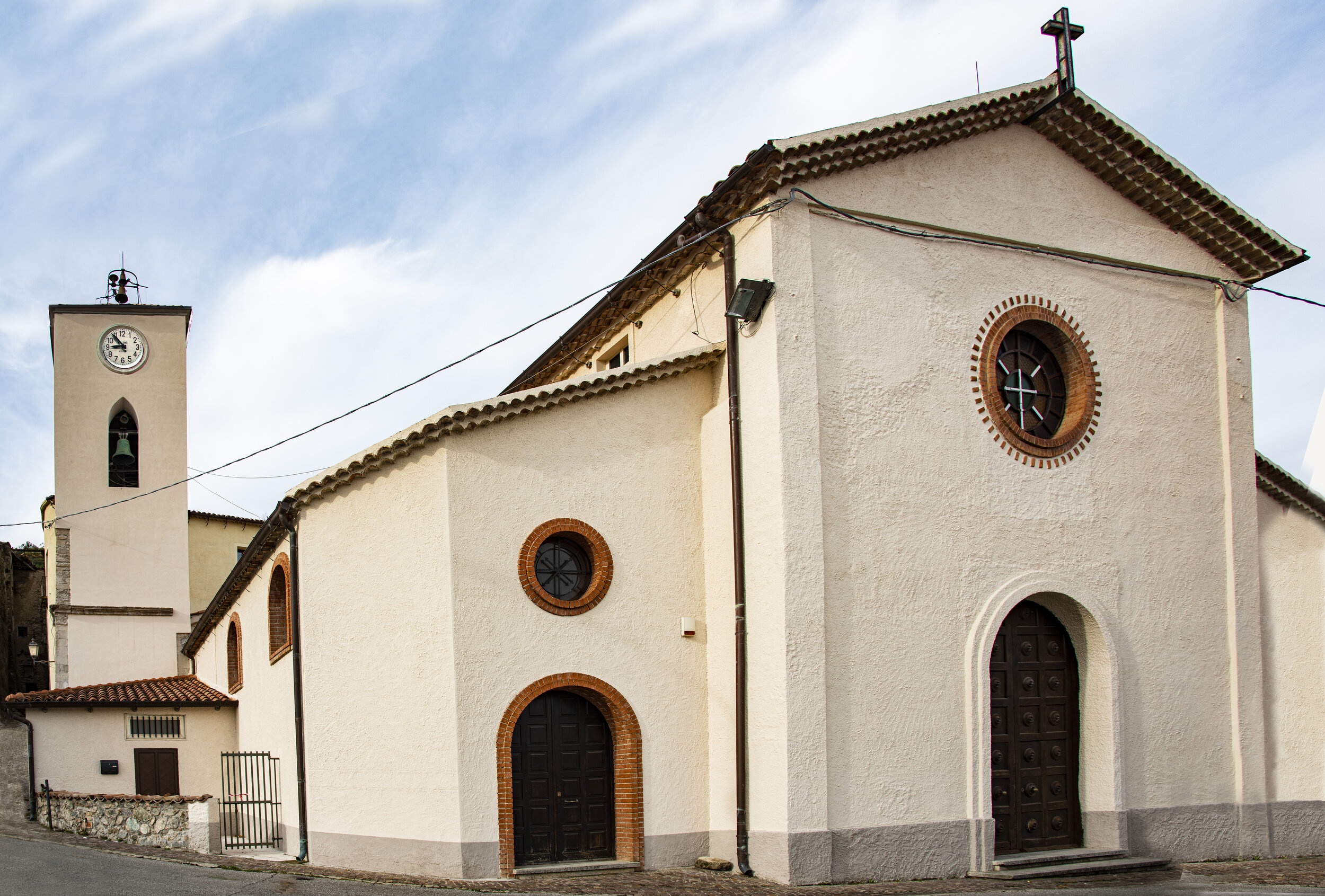
Chiesa of San Martino Vescosvo (Saint Martin of the Bishop) is across the street from the San Martino di Finita War Memorial.
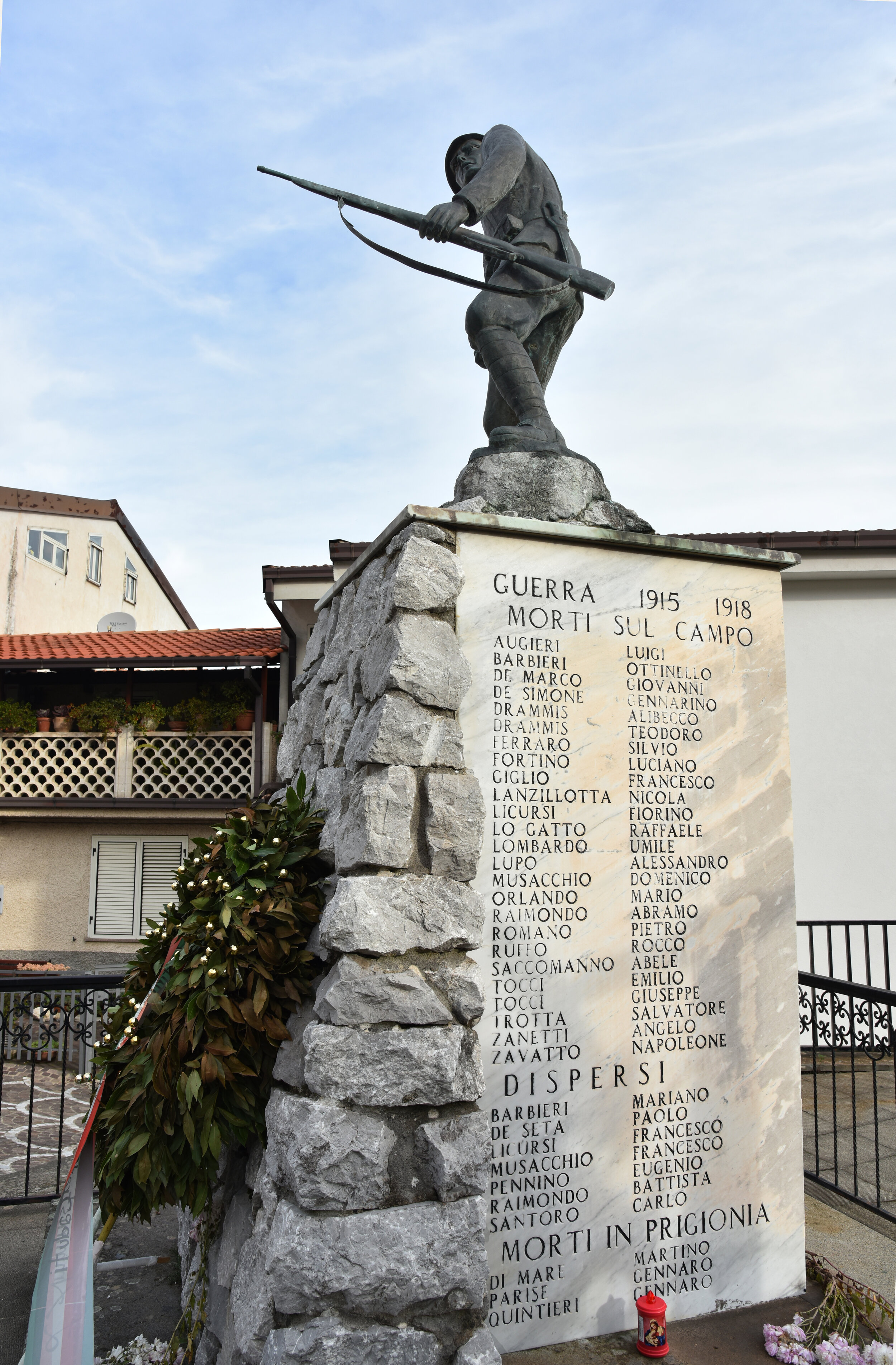
I was pleasantly surprised and honored to see among the names of the dead from World War I listed was Nicola Lanzillotta.
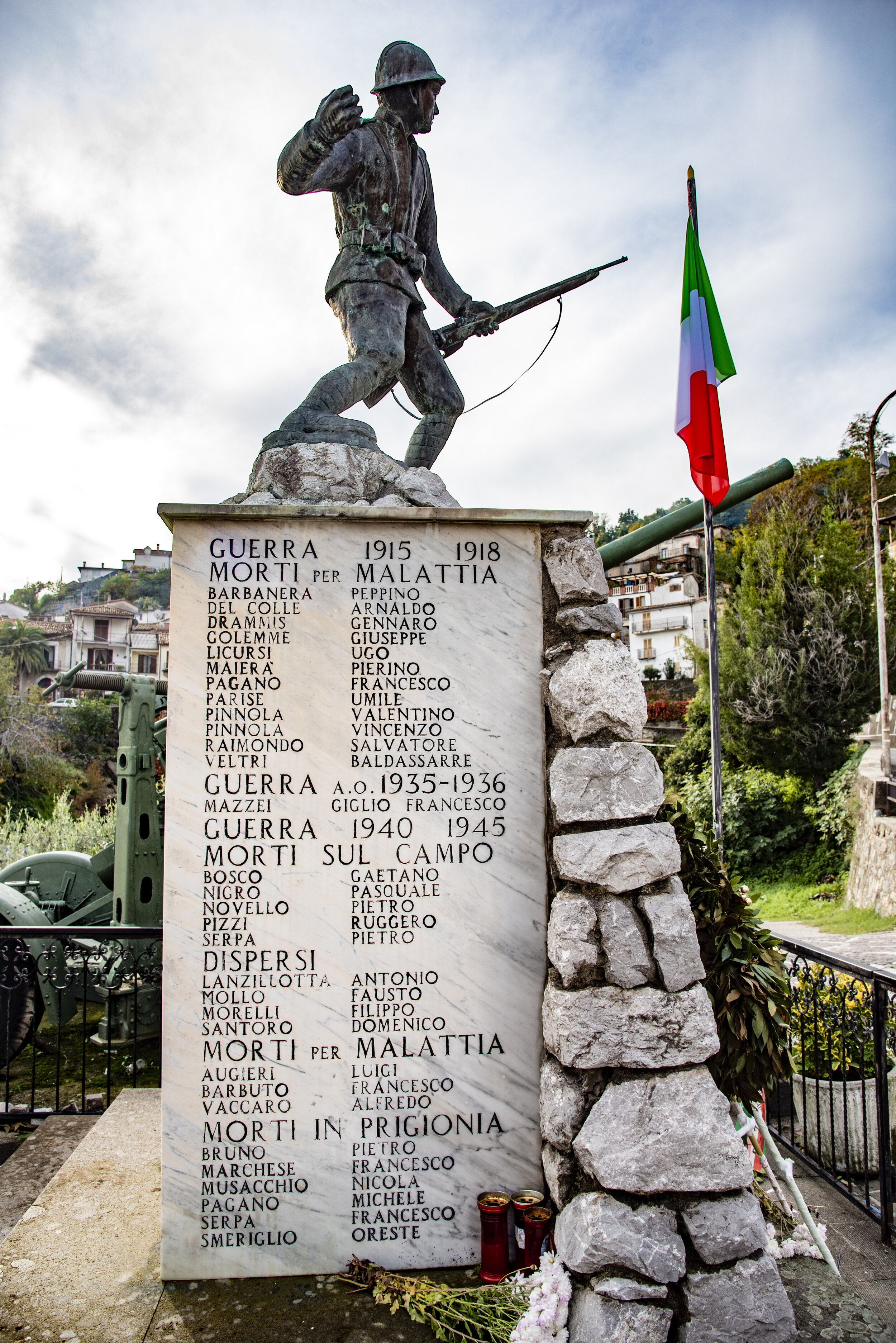
The other side of the Memorial listed Antonio Lanzillotta as missing in action,
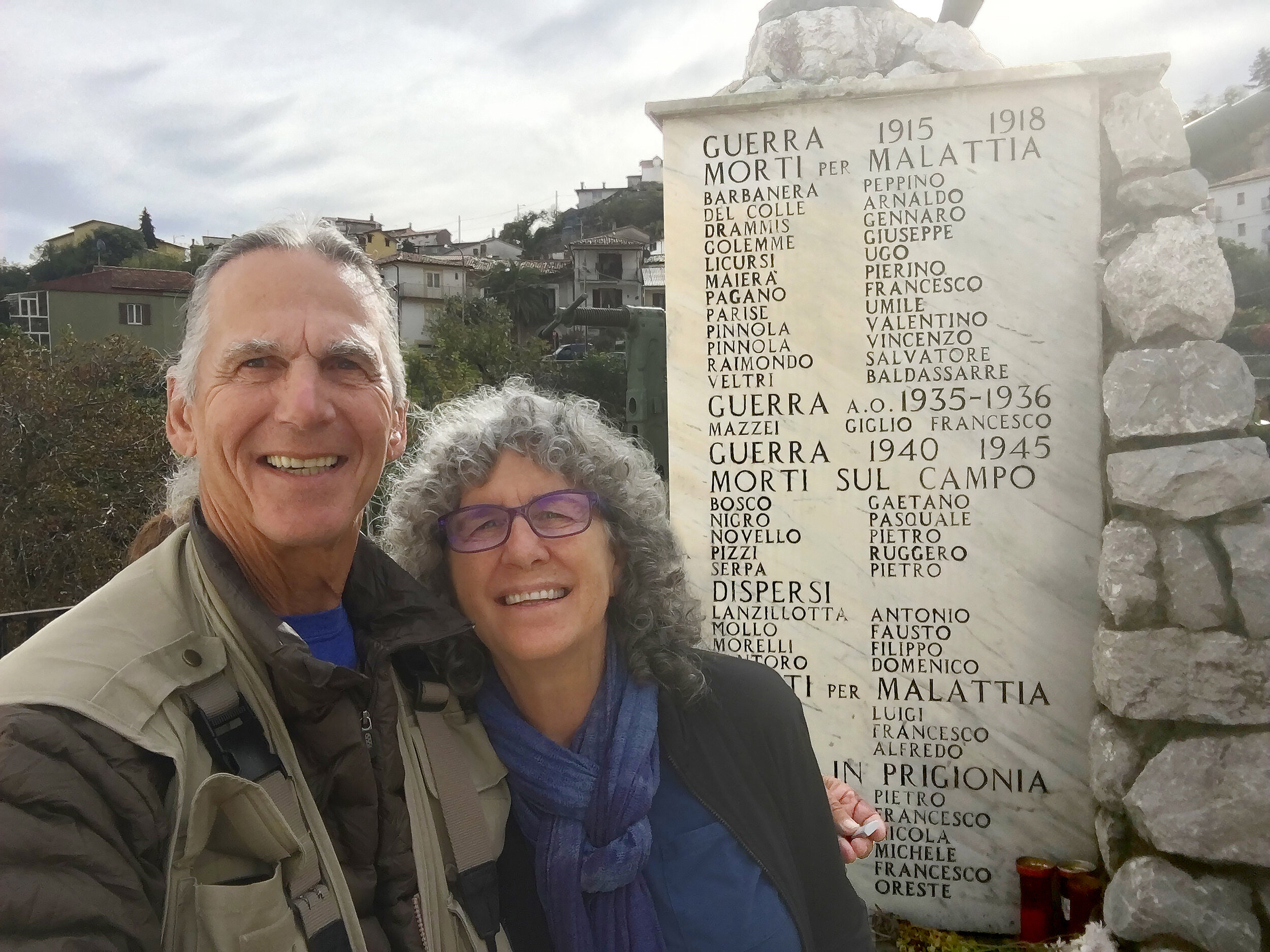
With the discovery of names related to my paternal grandfather on the town's war memorial I felt a sense of belonging.
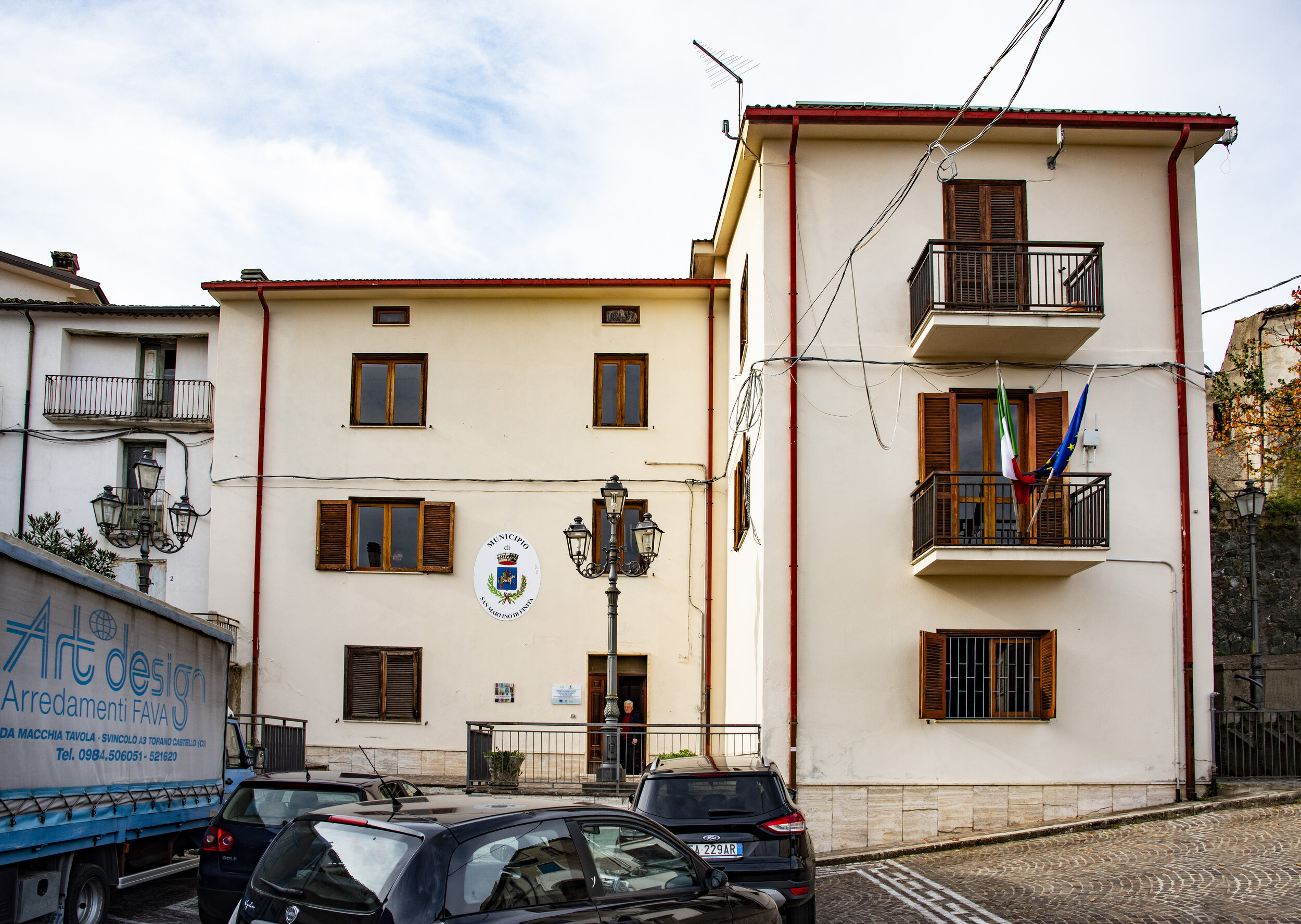
Building housing the offices of the Municipal of San Martino di Finita.
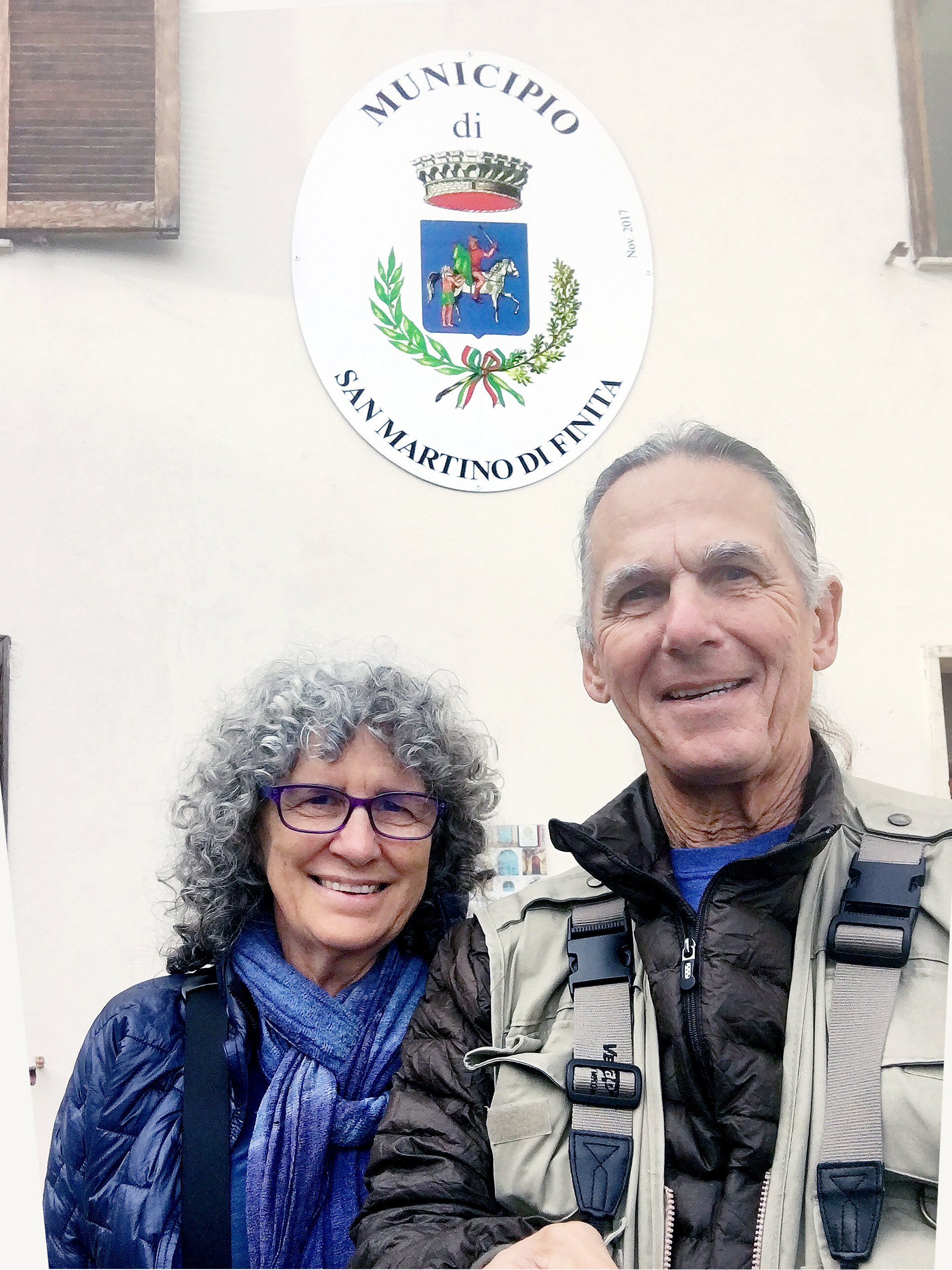
Louise and I were anxious to get inside the Municipal Building of the San Martino di Finita but first a picture of the official coat of arms.
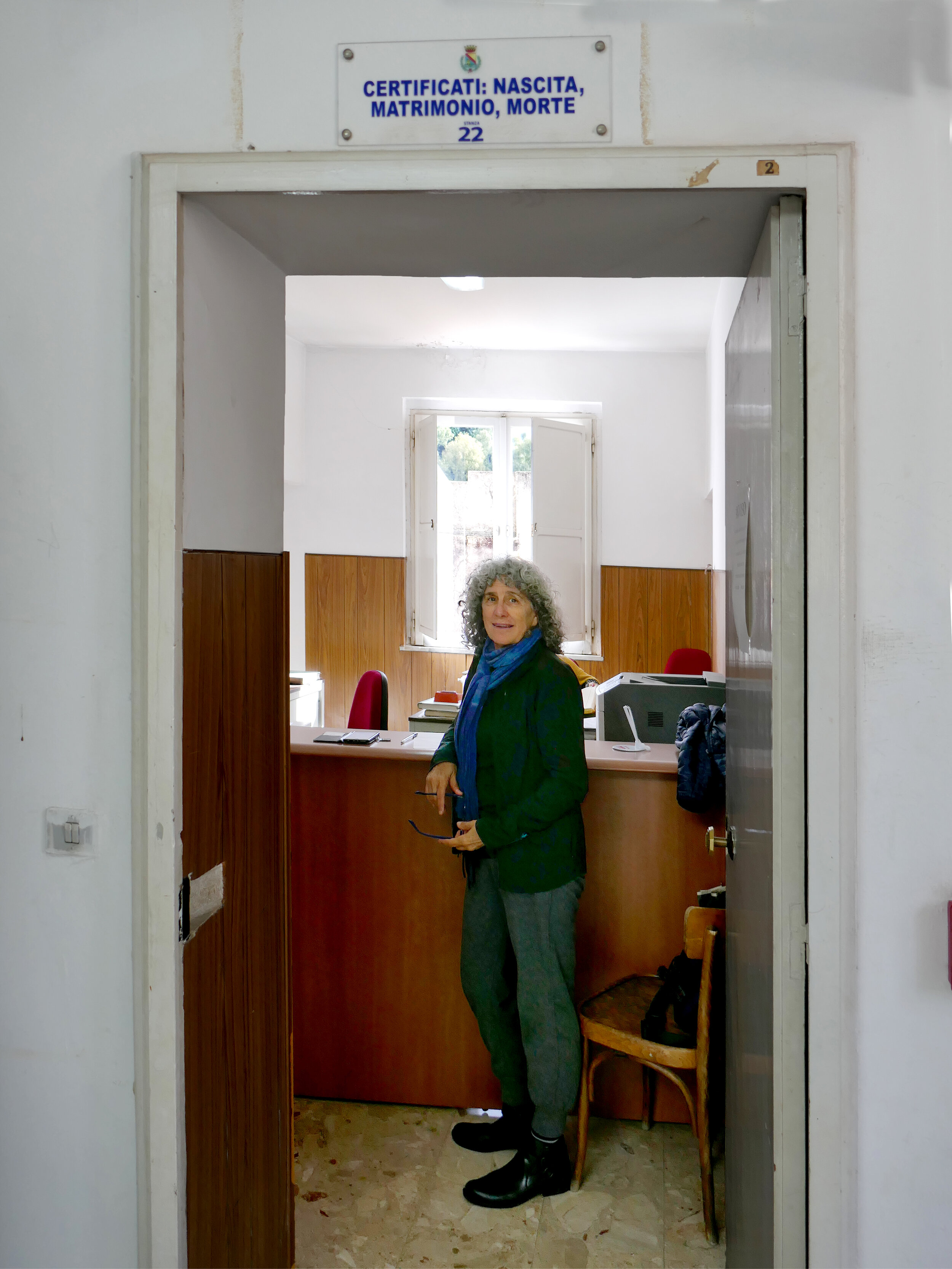
Louise waiting at the counter in the office of Certificates for Birth, Matrimony, and Death. As we were waiting a young man came in to register the birth of a child with his grandfather as witness.
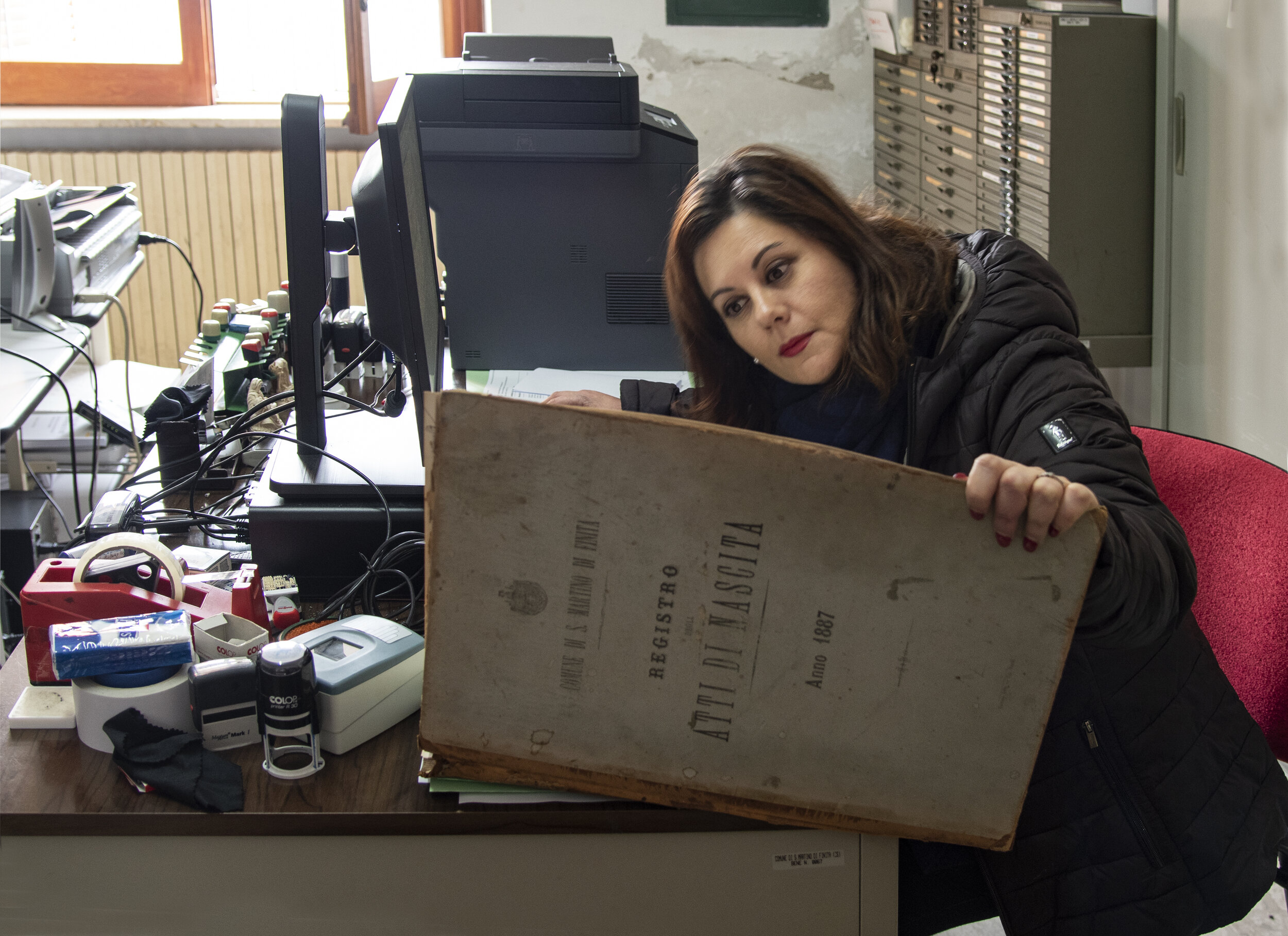
Gaetana Pinnola arrived the same time we did and began pulling records. Here she is looking in the 1887 book of recorded births.
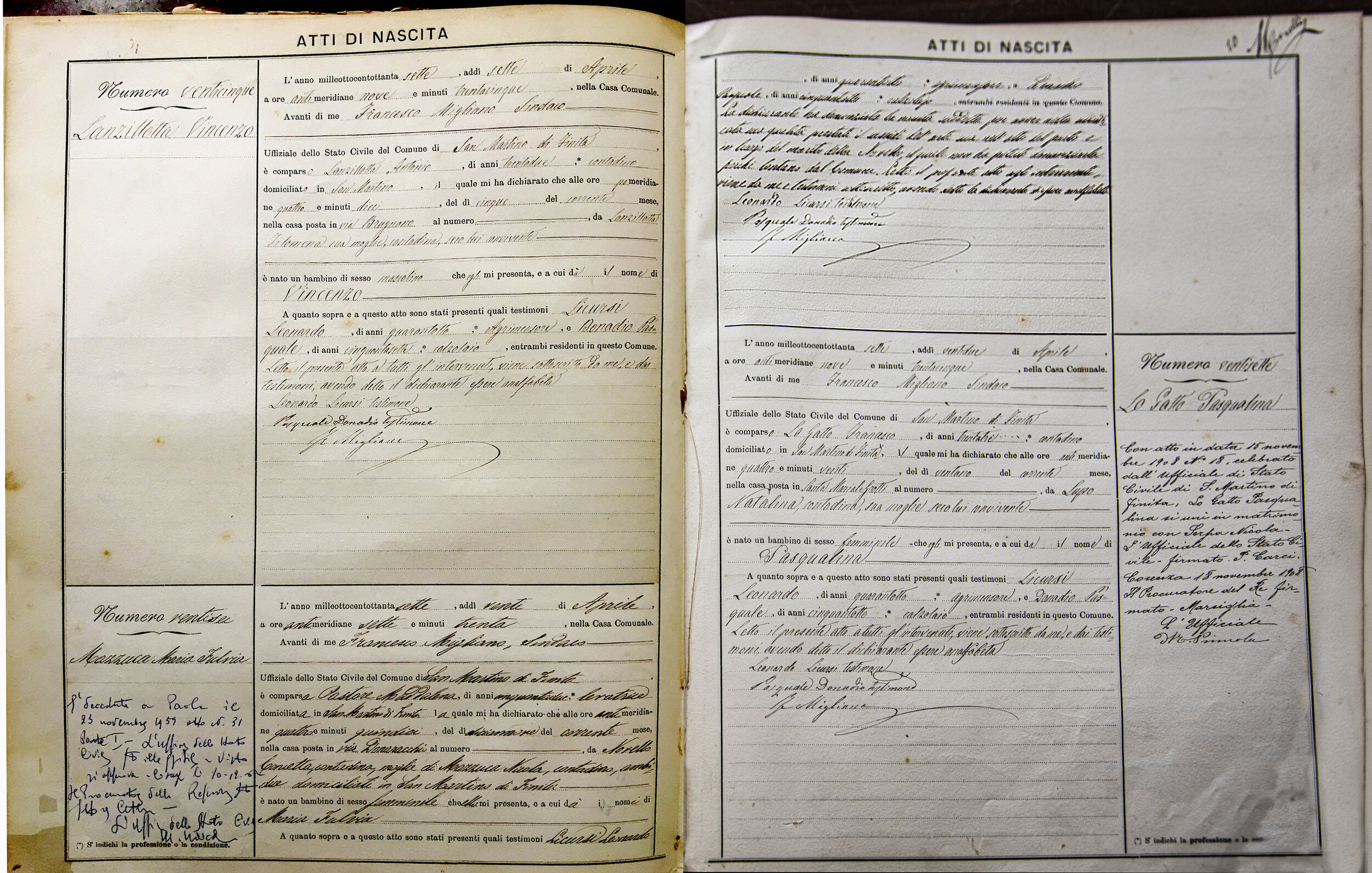
Gaetana found the record of my paternal grandfather's birth as it was recorded in 1887.
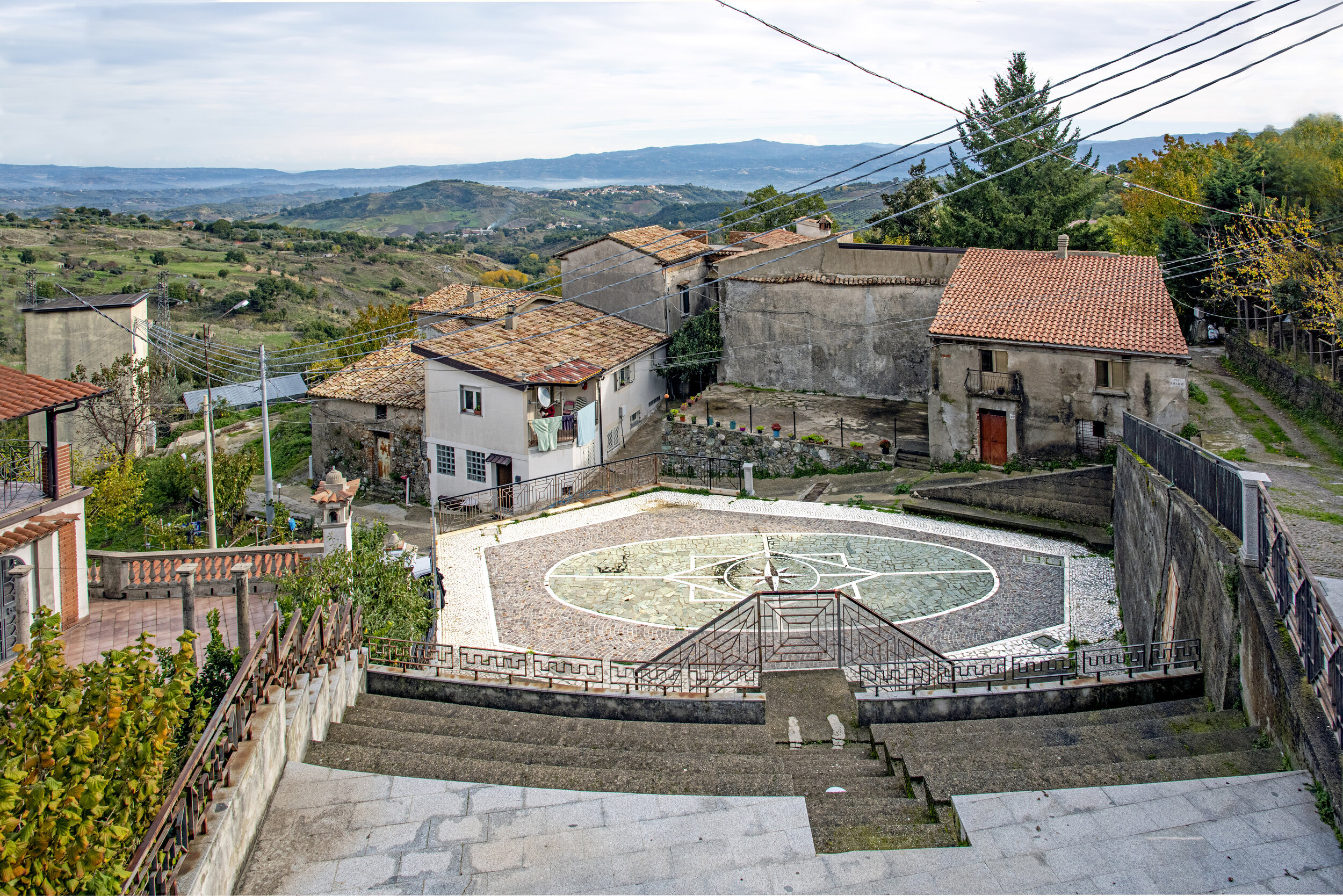
Amphitheater across from San Martino di Finita City Hall.
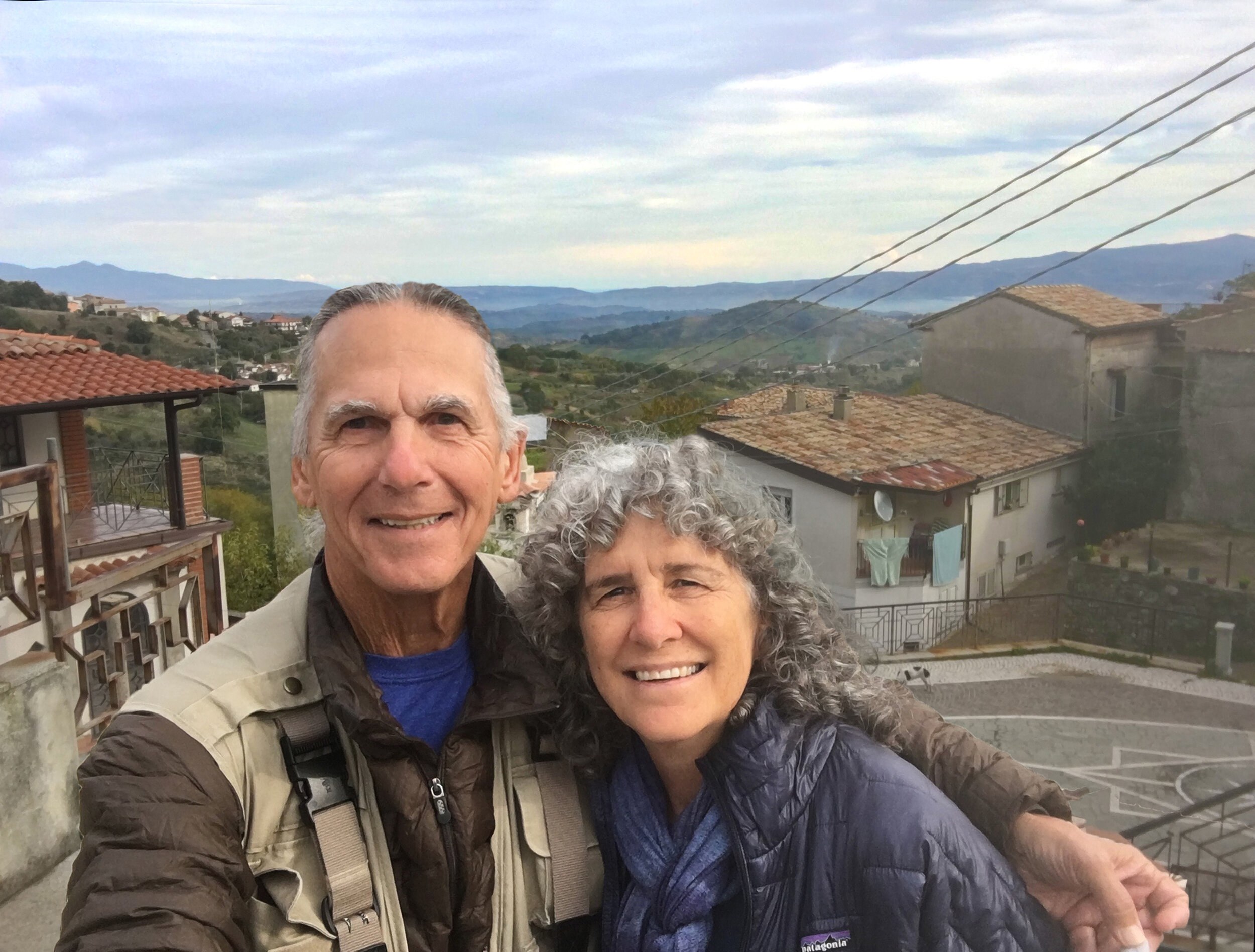
The San Martino di Finita Amphitheater and countryside behind us and we are excited to have found the information about Vincenzo on our first try, only possible due to my cousin Michele's research.
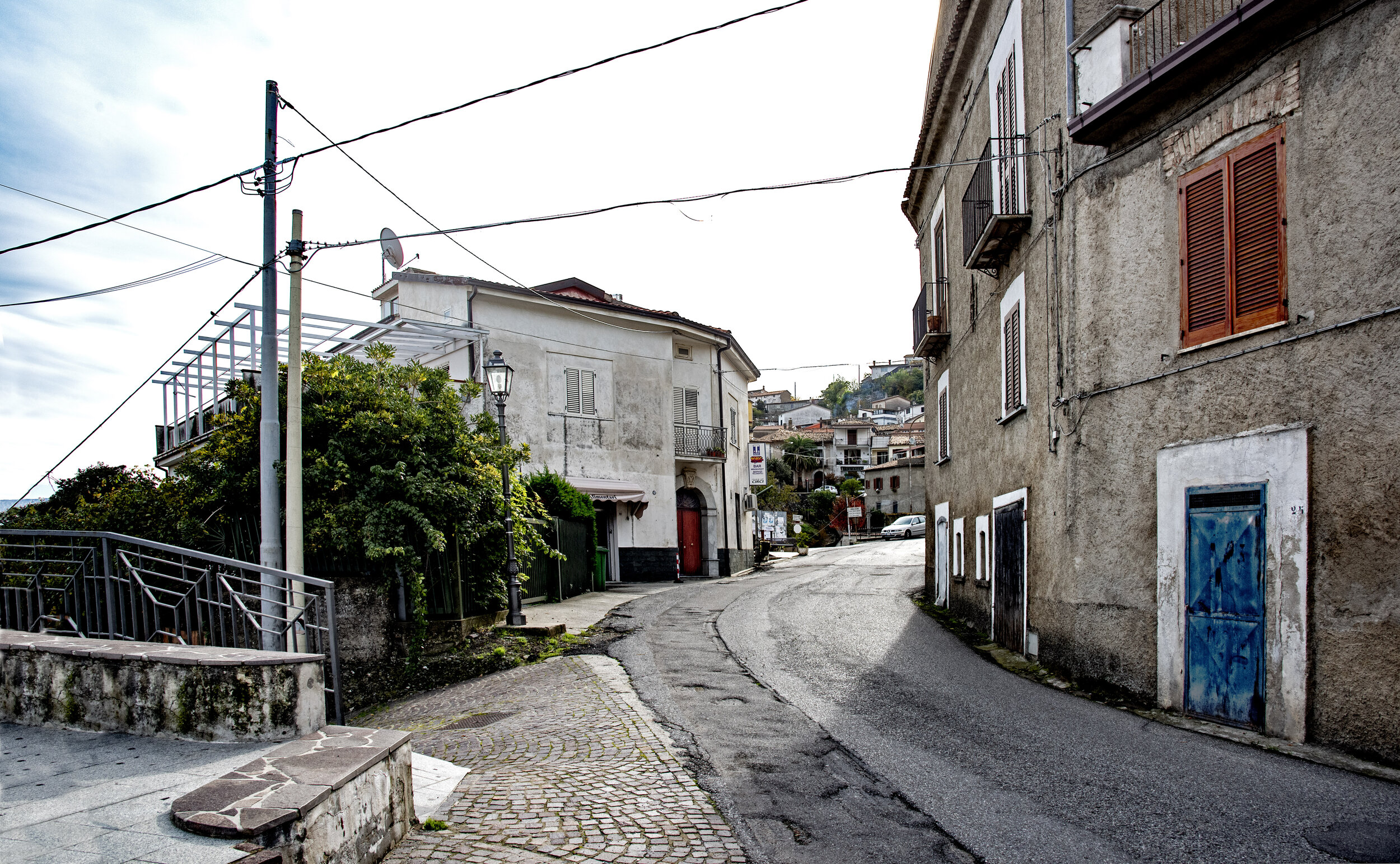
Road to San Martino di Finita cemetery.
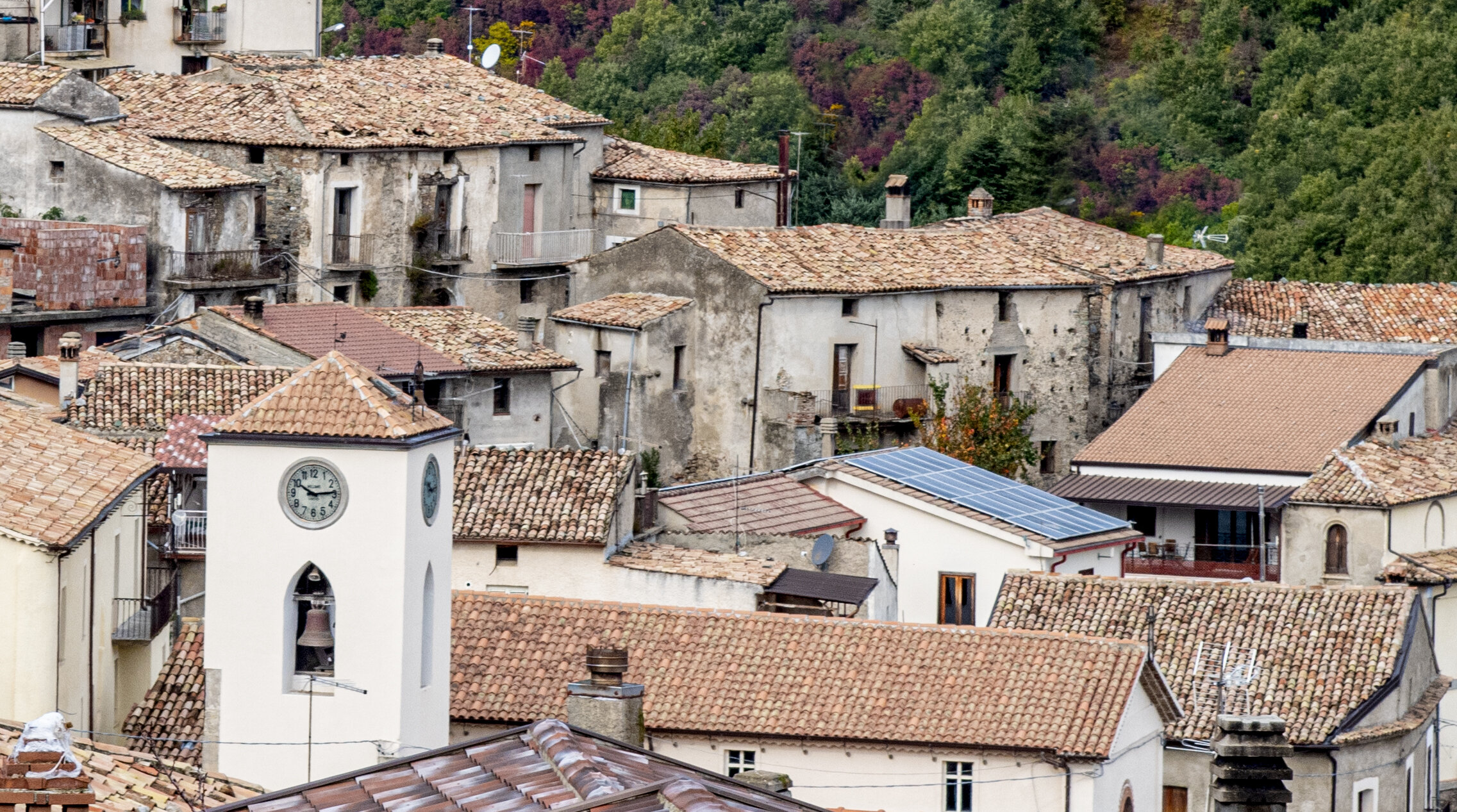
Church steeple and tiled rooftops are staples of the hilltop towns in southern Italy.
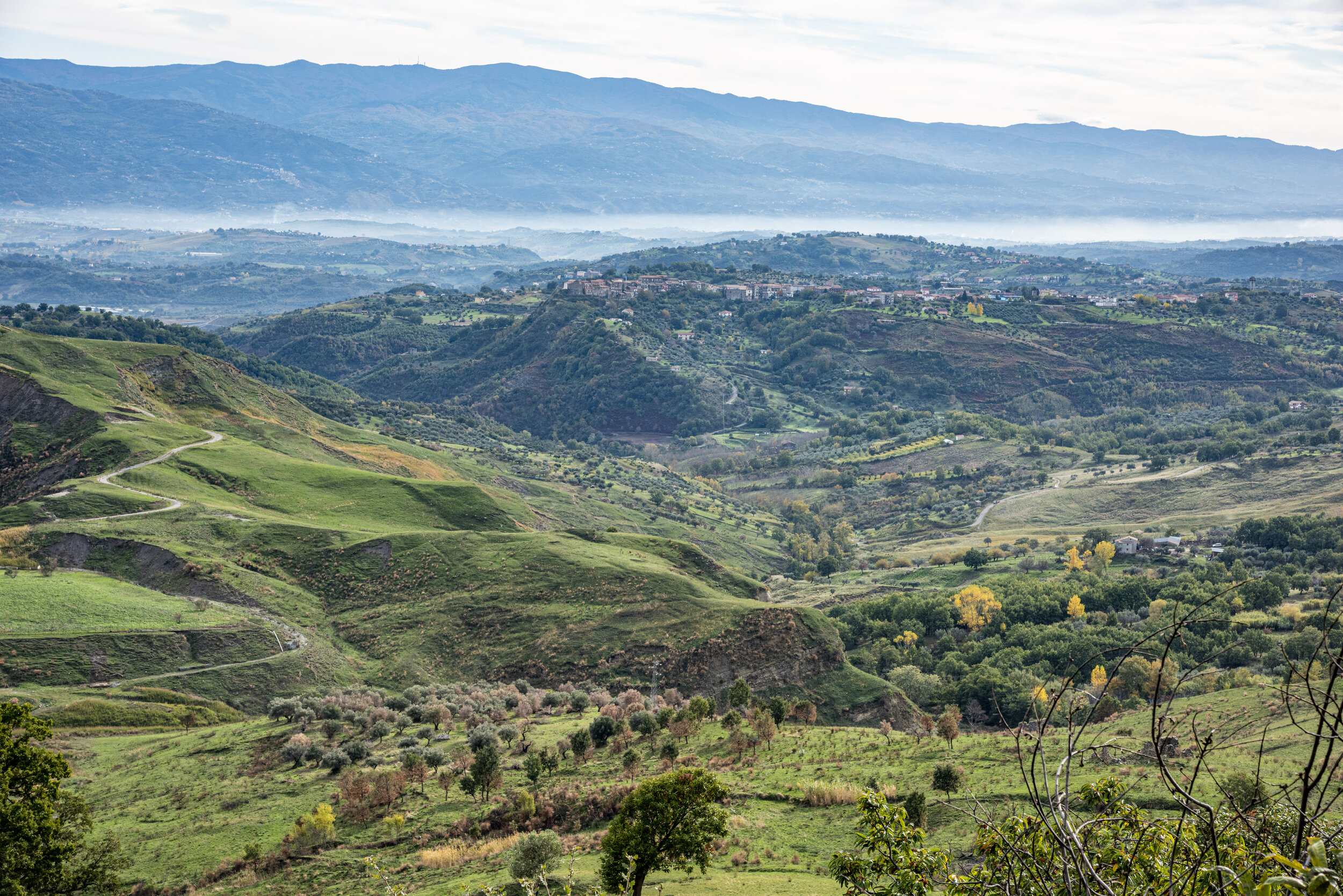
Looking out over the Calabrian countryside I realized how difficult it must have been for my grandfather to adapt to 1905 Philadelphia and why he loved working in his garden even at 96 years of age.
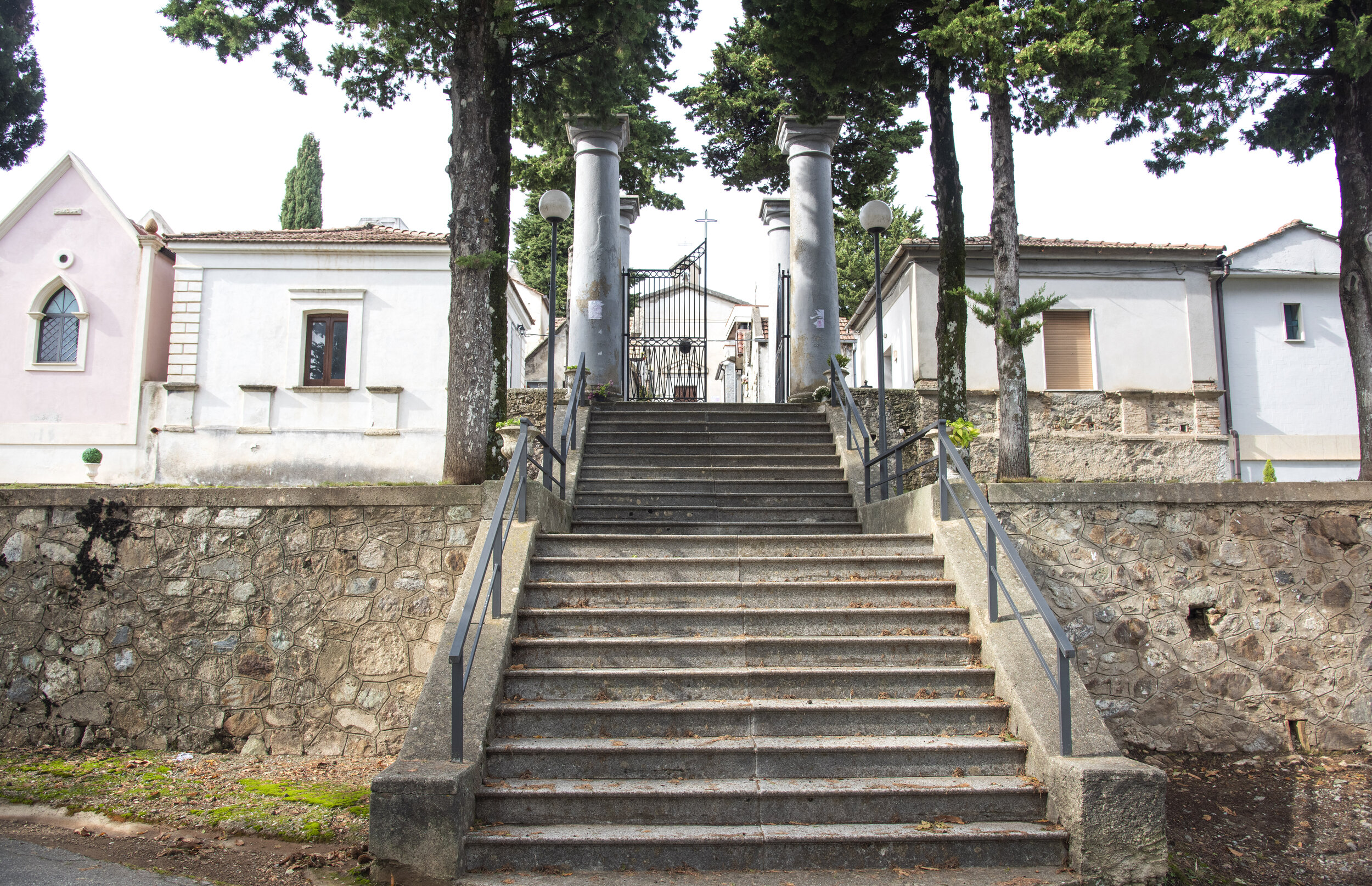
We decided to go to the San Martino di Finita cemetery to see if there were Lanzillottas buried there and therefore have an indication that I might still have distant relatives in the area..
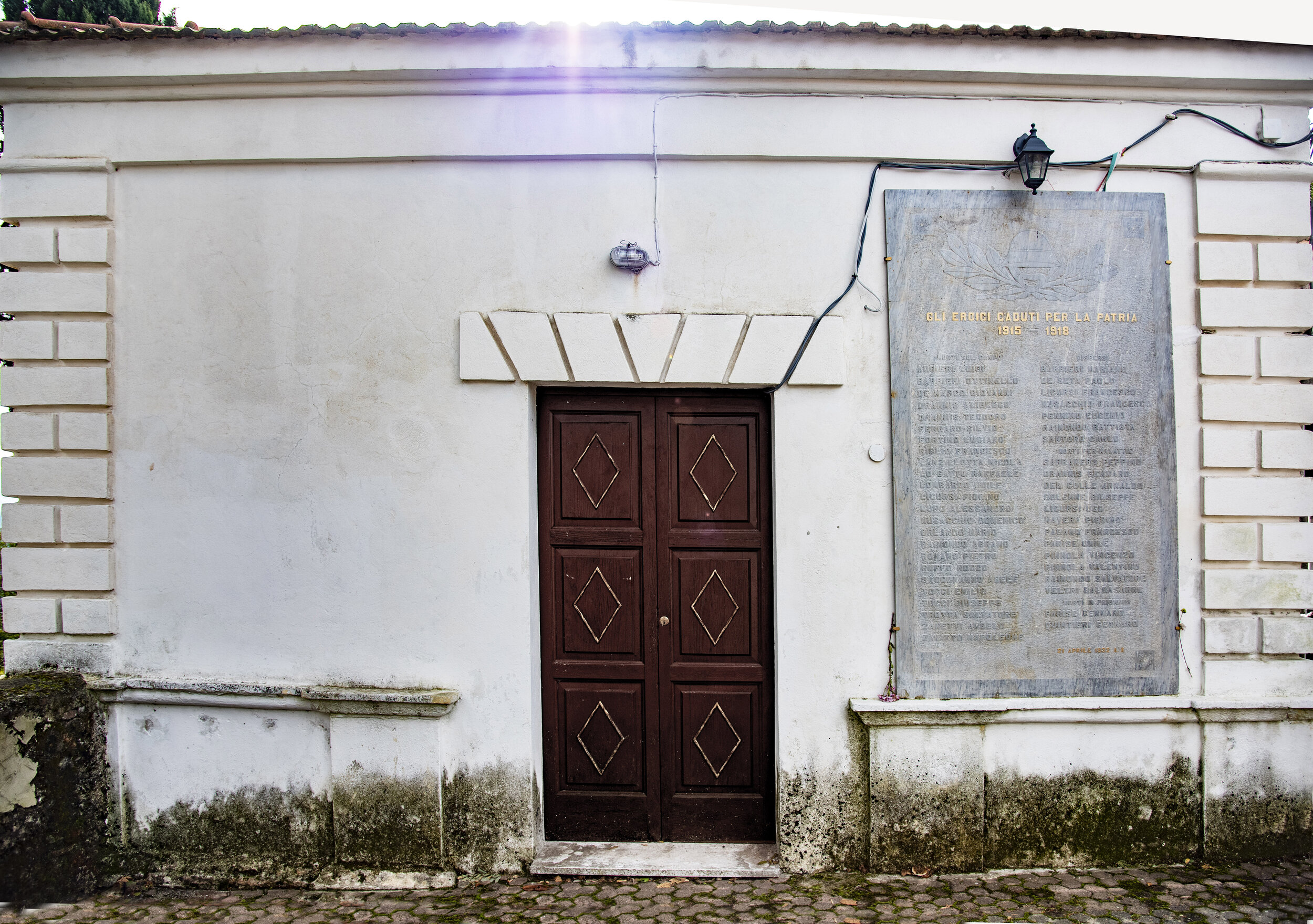
In the center of the cemetery was a crypt for soldiers who had "Fallen for their country" in World War I. On the right of the crypt was listed the name of the honored dead on a marble slab.
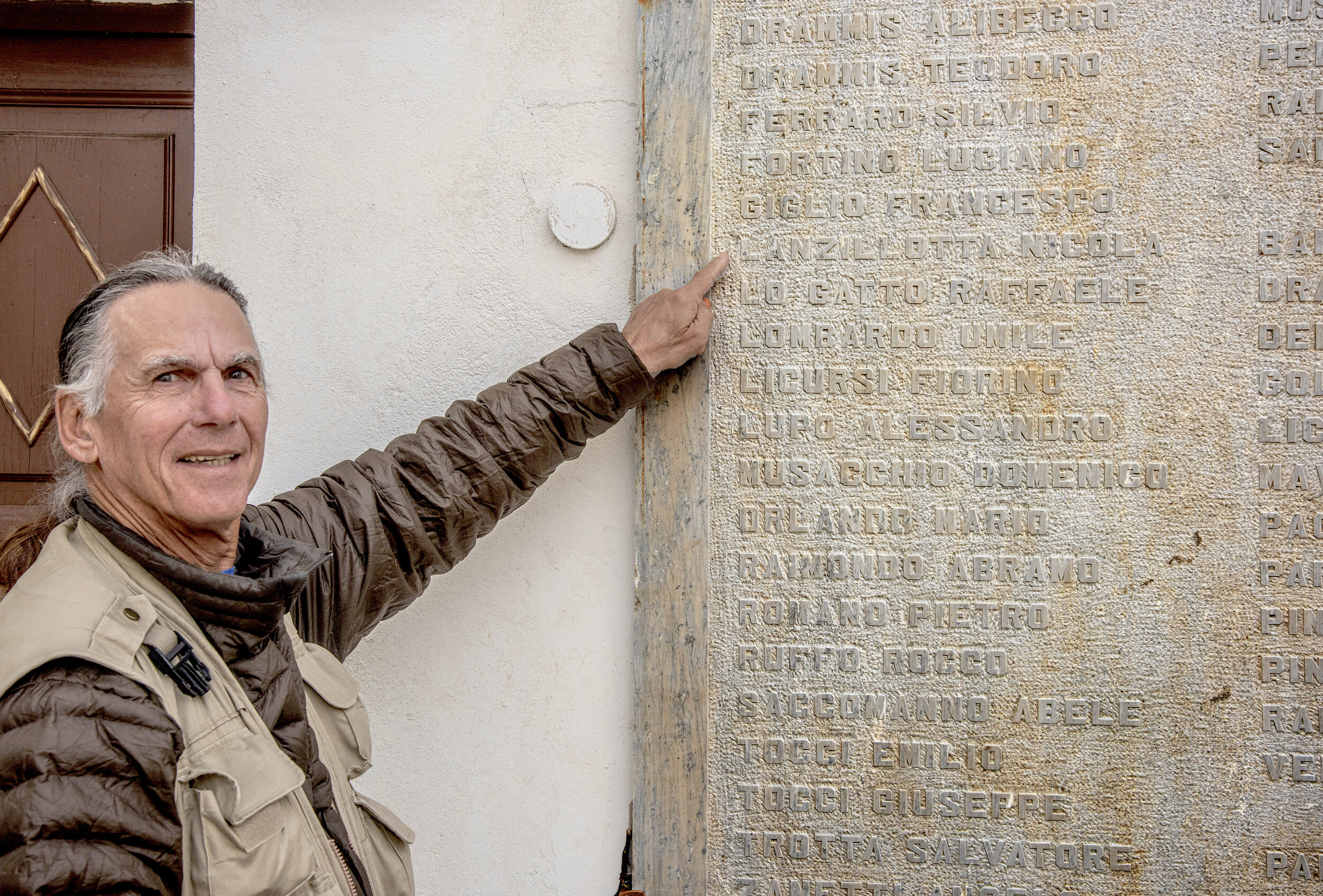
I found Nicola Lanzillotta listed on the crypt. He was of the same generation as my grandfather, possibly a brother or cousin.
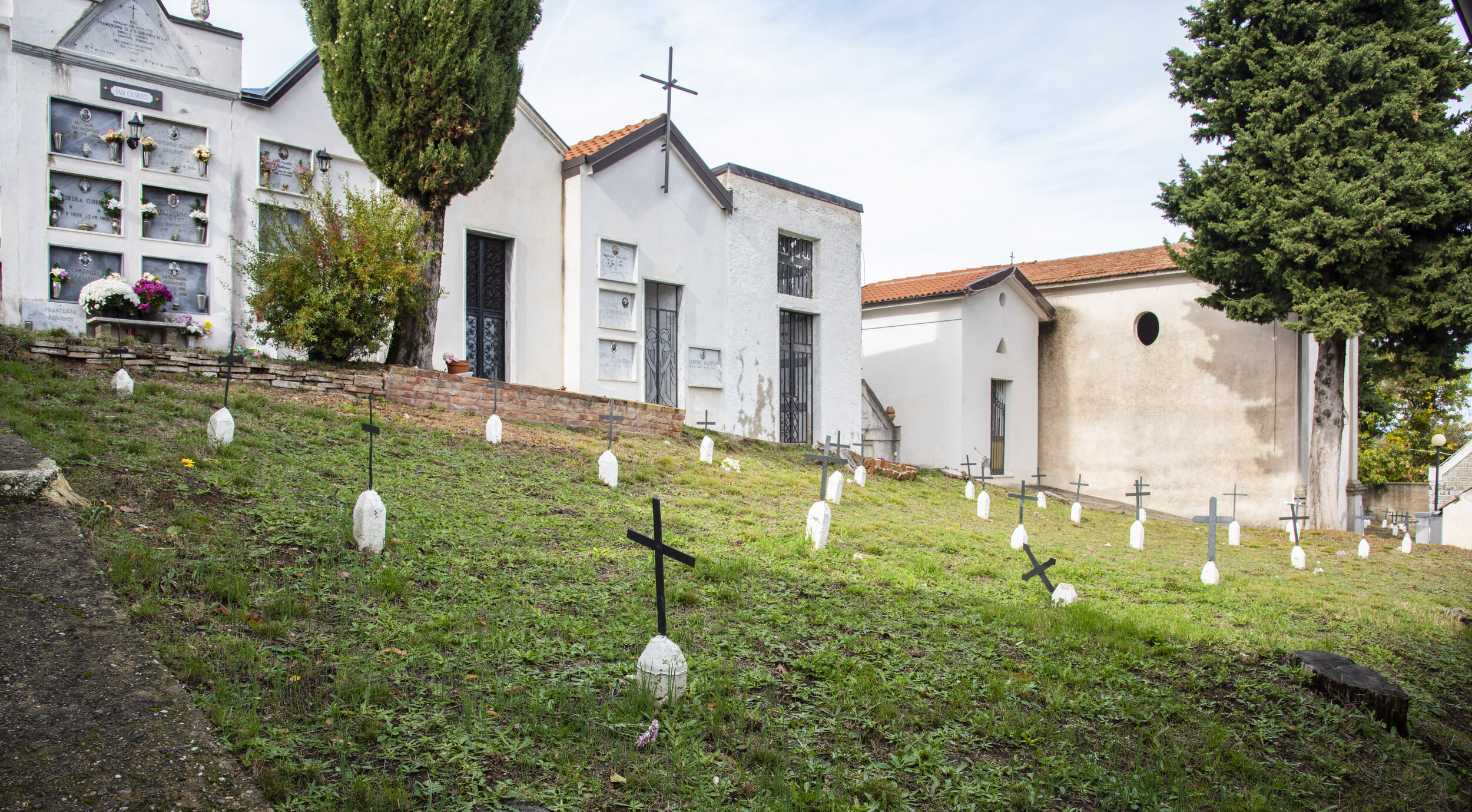
In addition to these individual graves, as we walked up the cemetery lane we saw that there were general crypts and family crypts. We went to investigate.
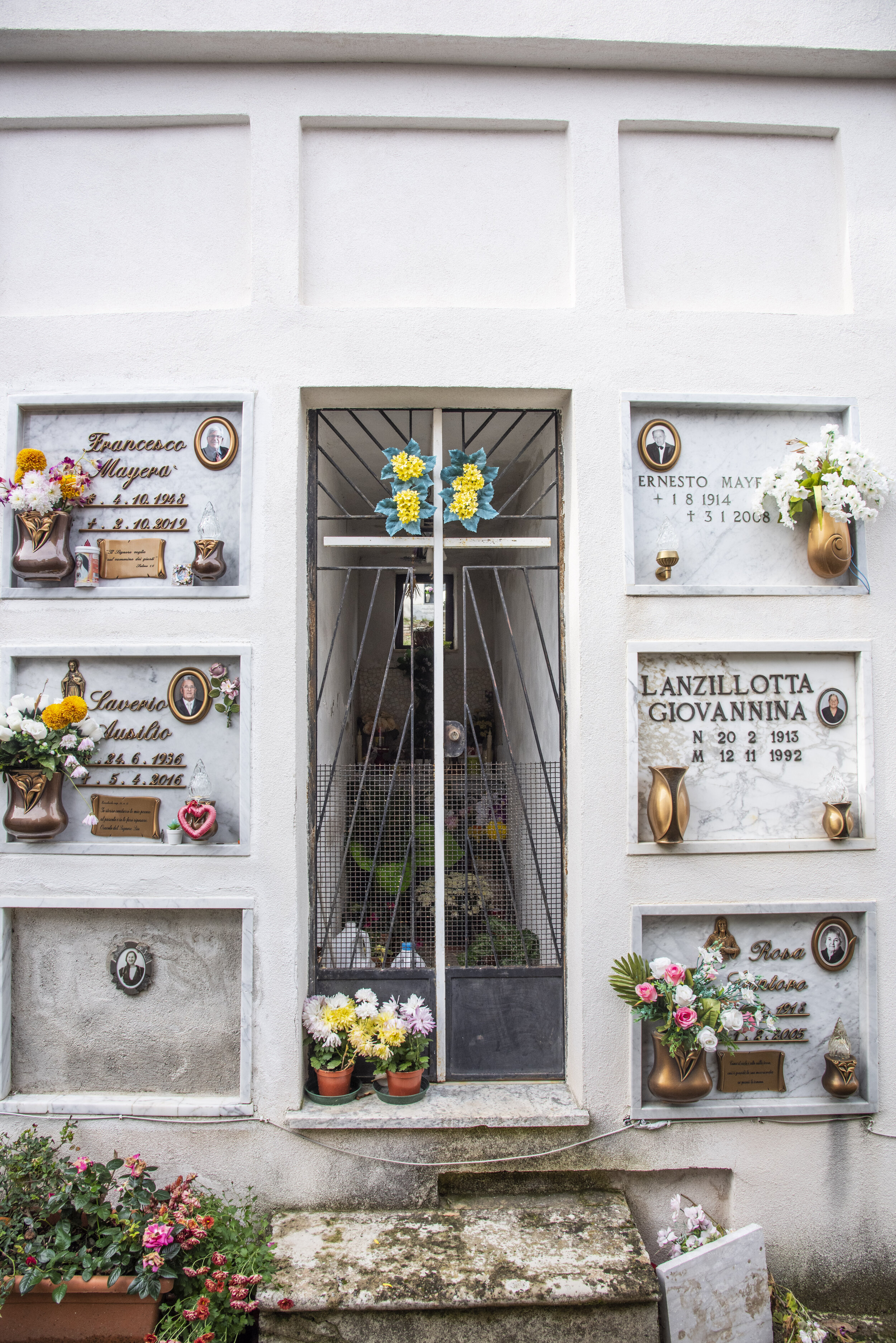
Louise found a crypt that contained the remains of Giovaninna Lanzillotta who had died in 1992. She was of contemporary of my parents.
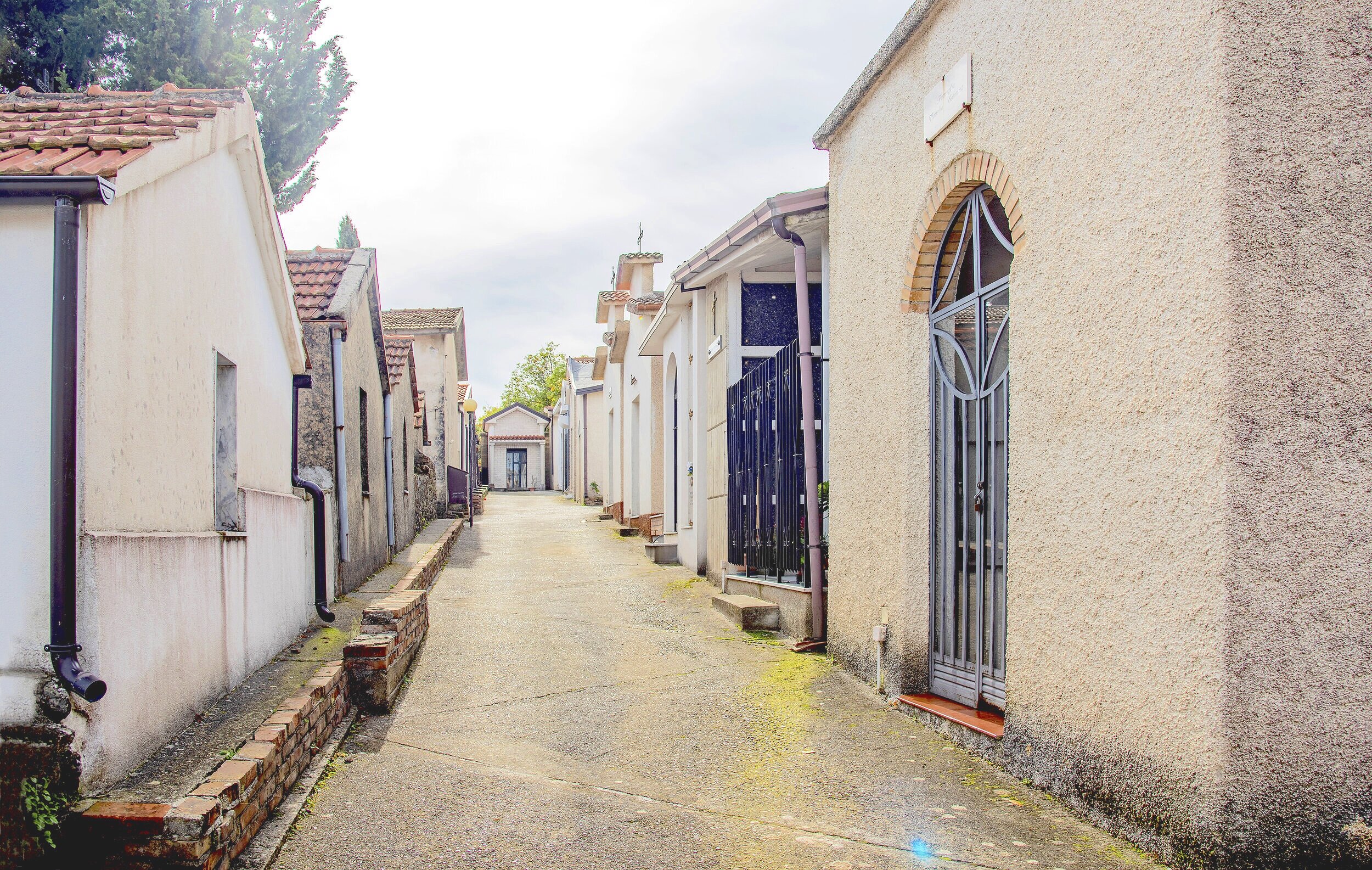
We began walking up and down the isles of the cemetery looking for Lanzillottas.
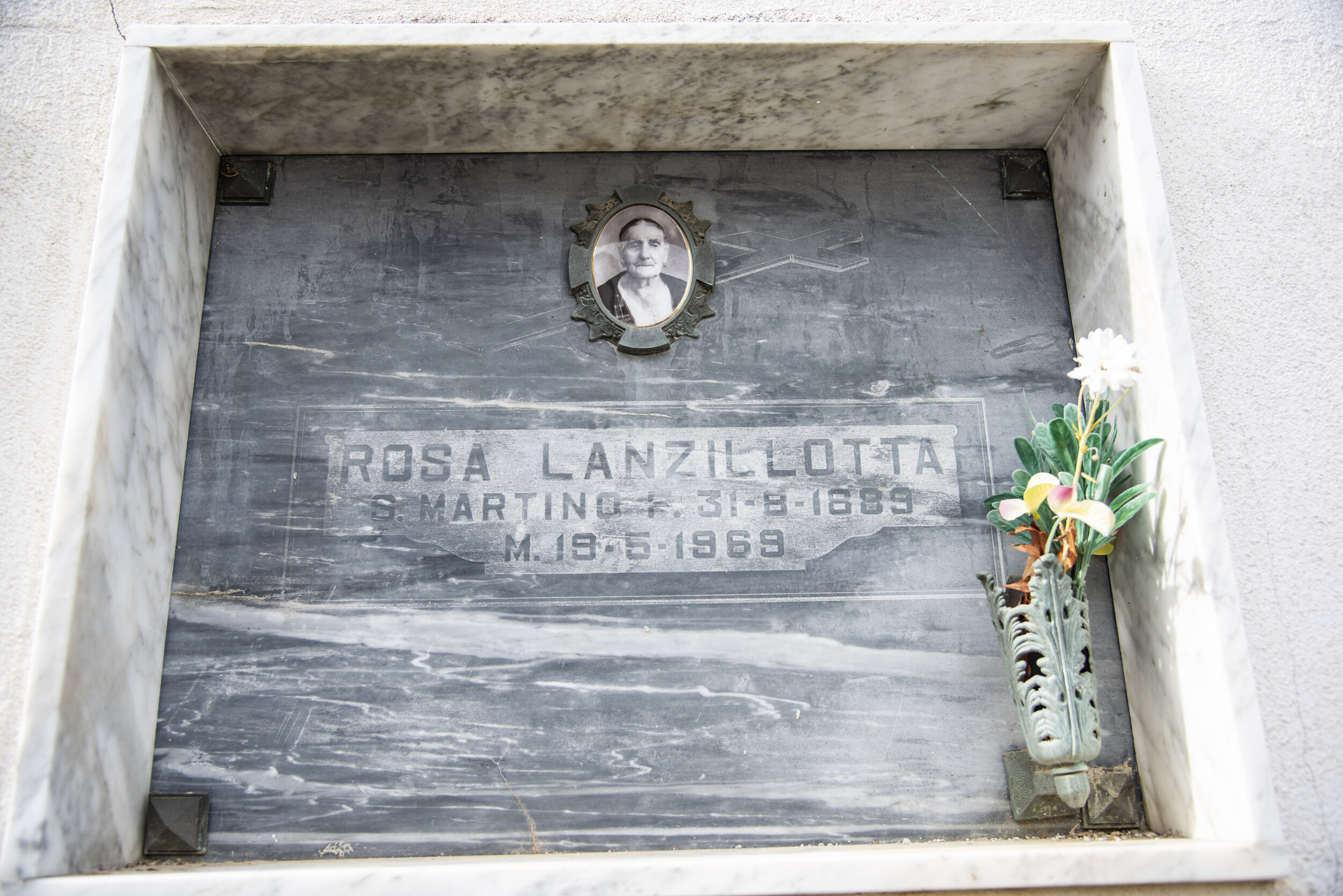
We found many Lanzillottas, e.g., Rosa, who was born in 1889 and therefore a contemporary of my grandfather, possibly a cousin.
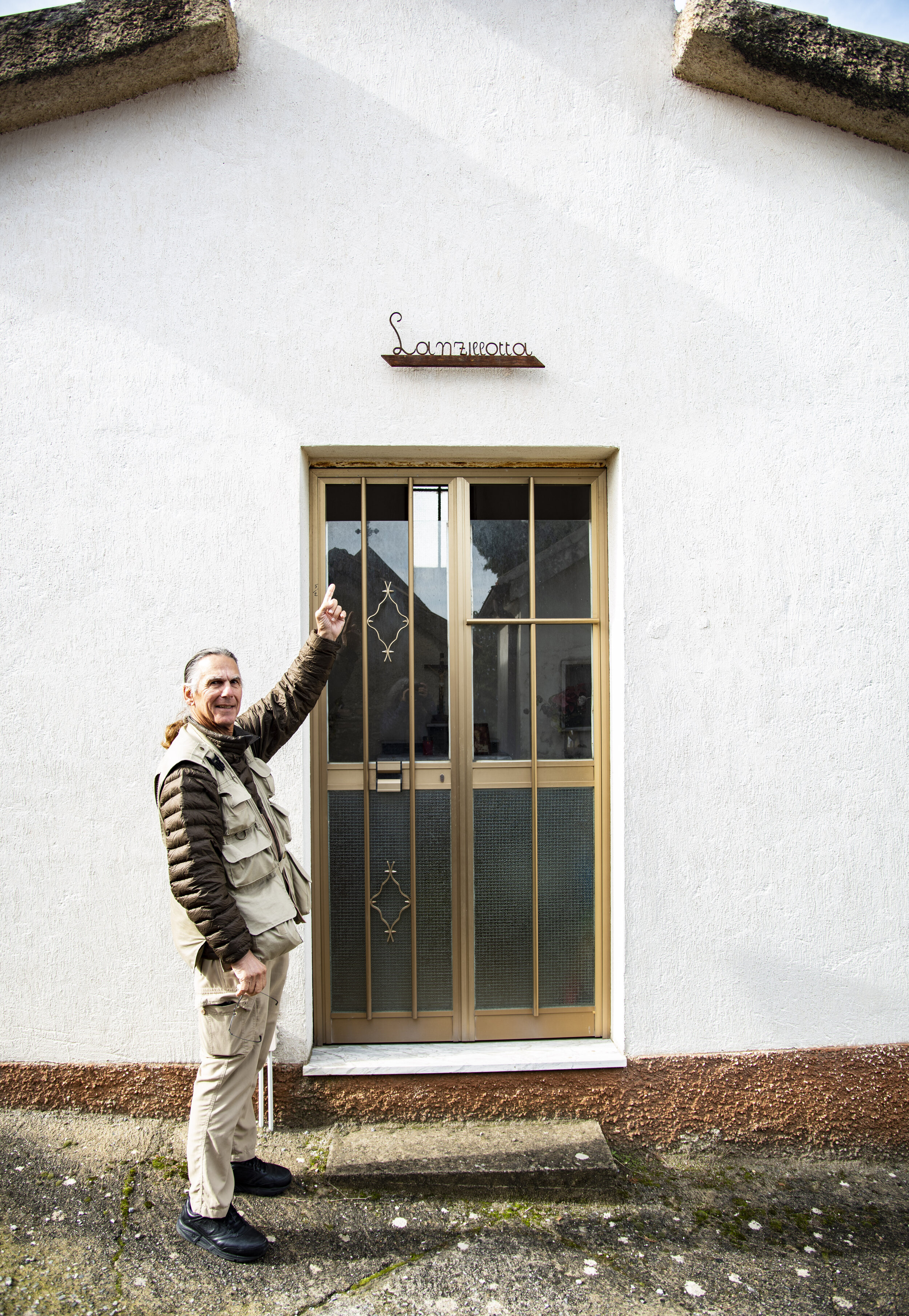
And then VOILA! We found a "LANZILLOTTA" crypt!
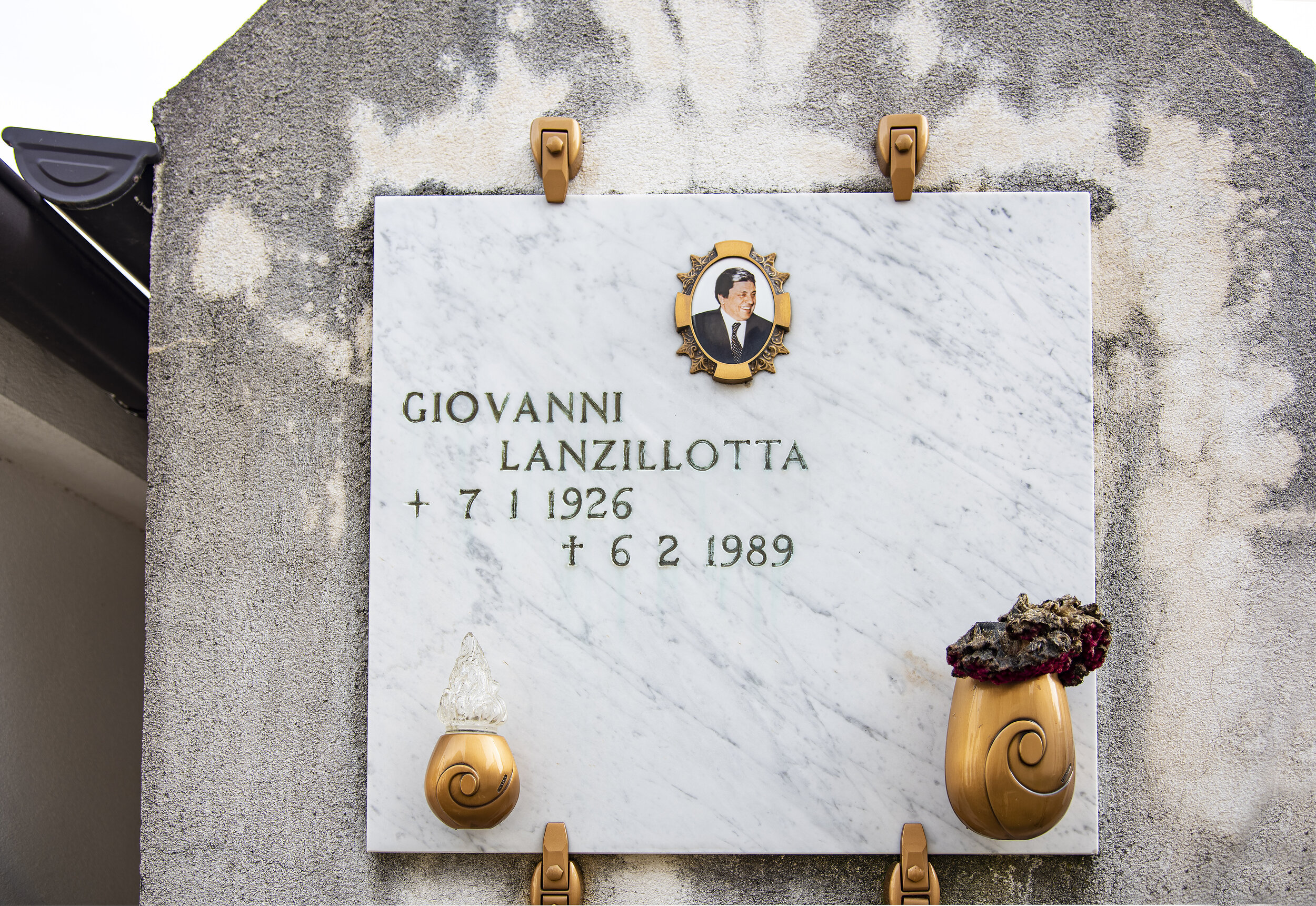
We continued our search and found many possible relatives buried in the cemetery, such as Giovanni, a contemporary of my father and his siblings.
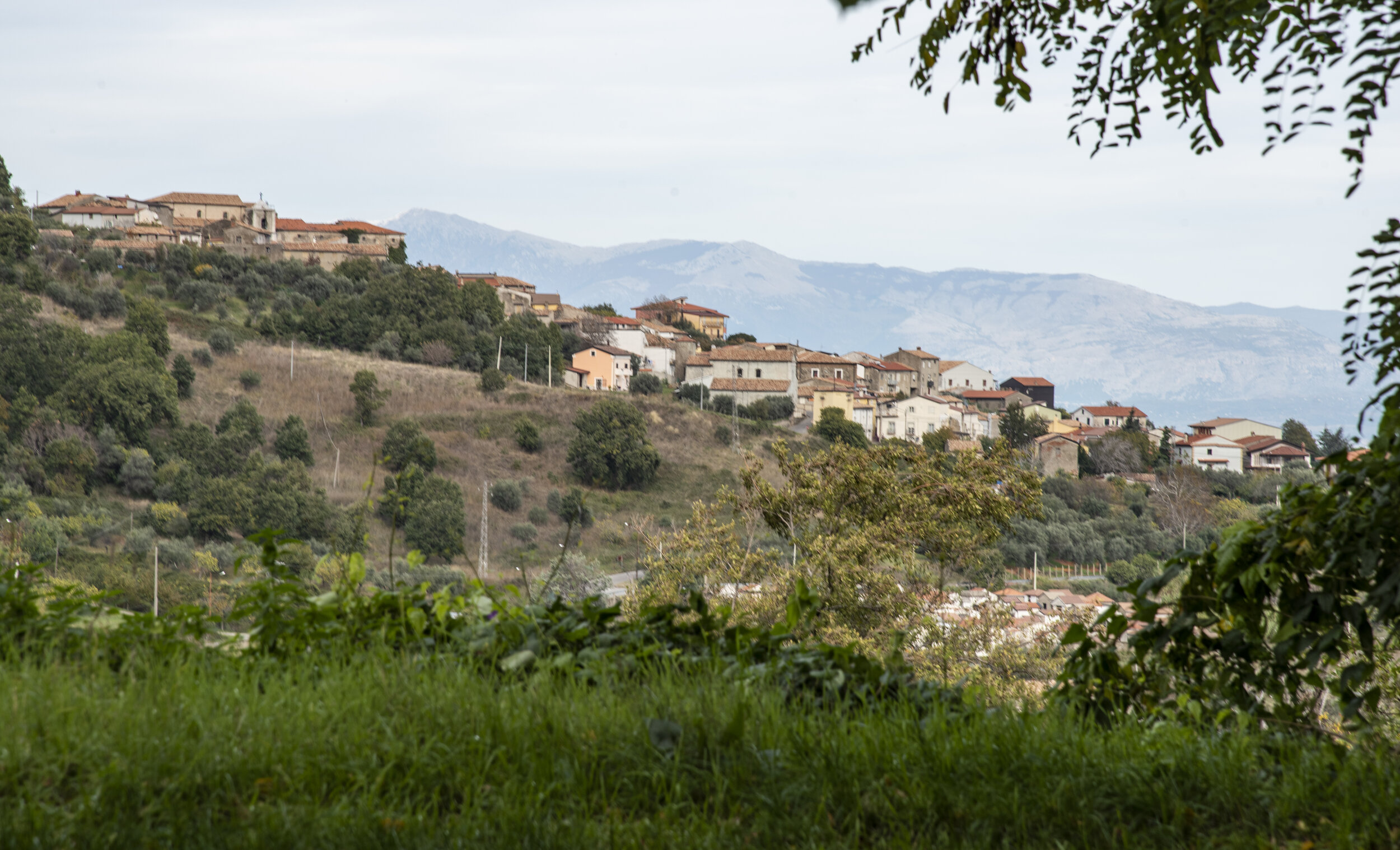
Leaving San Martino di Finita I was elated that I had been able to find information relating to my paternal grandfather and that there are probably many relatives living in the area.
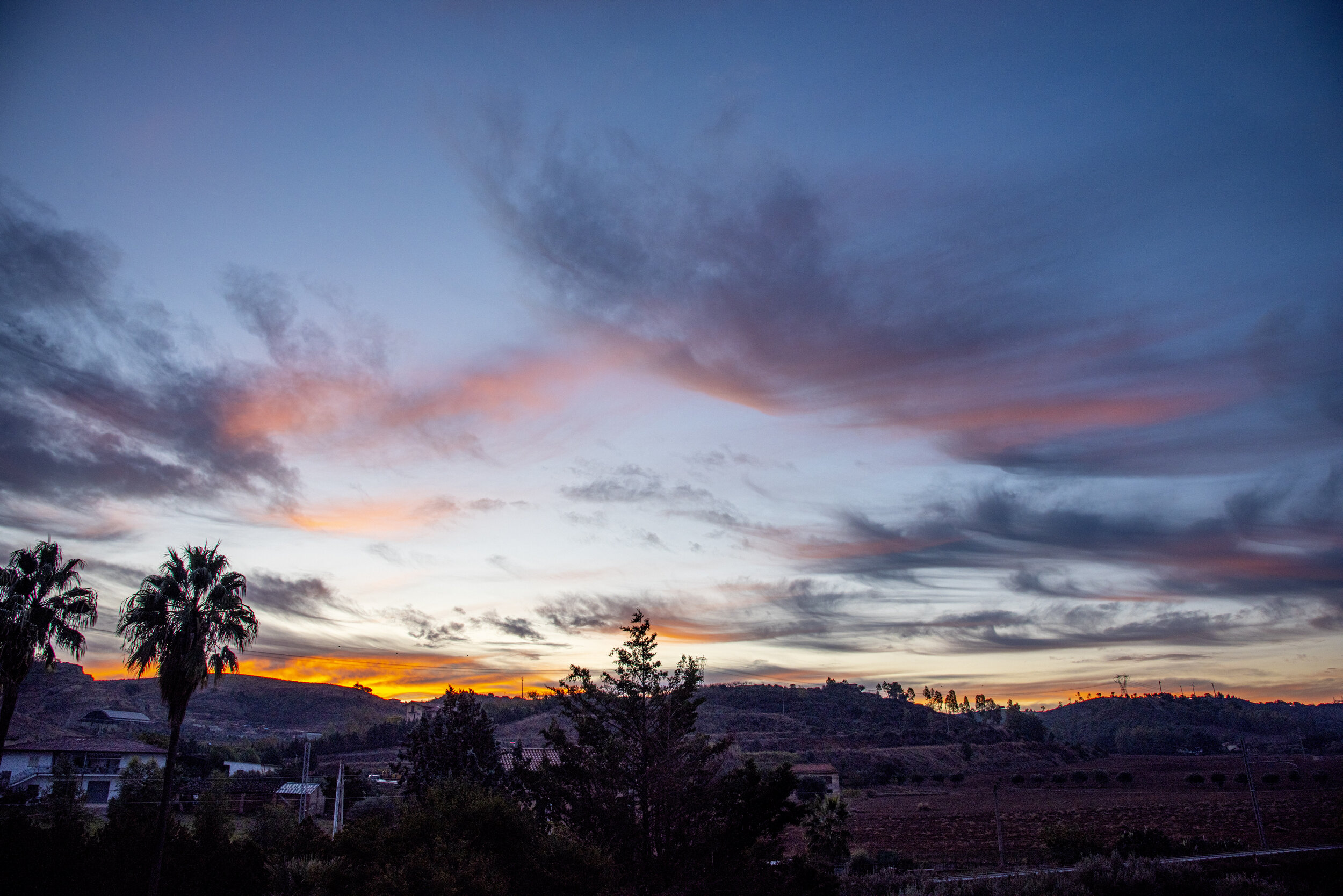
Calabria sundown.
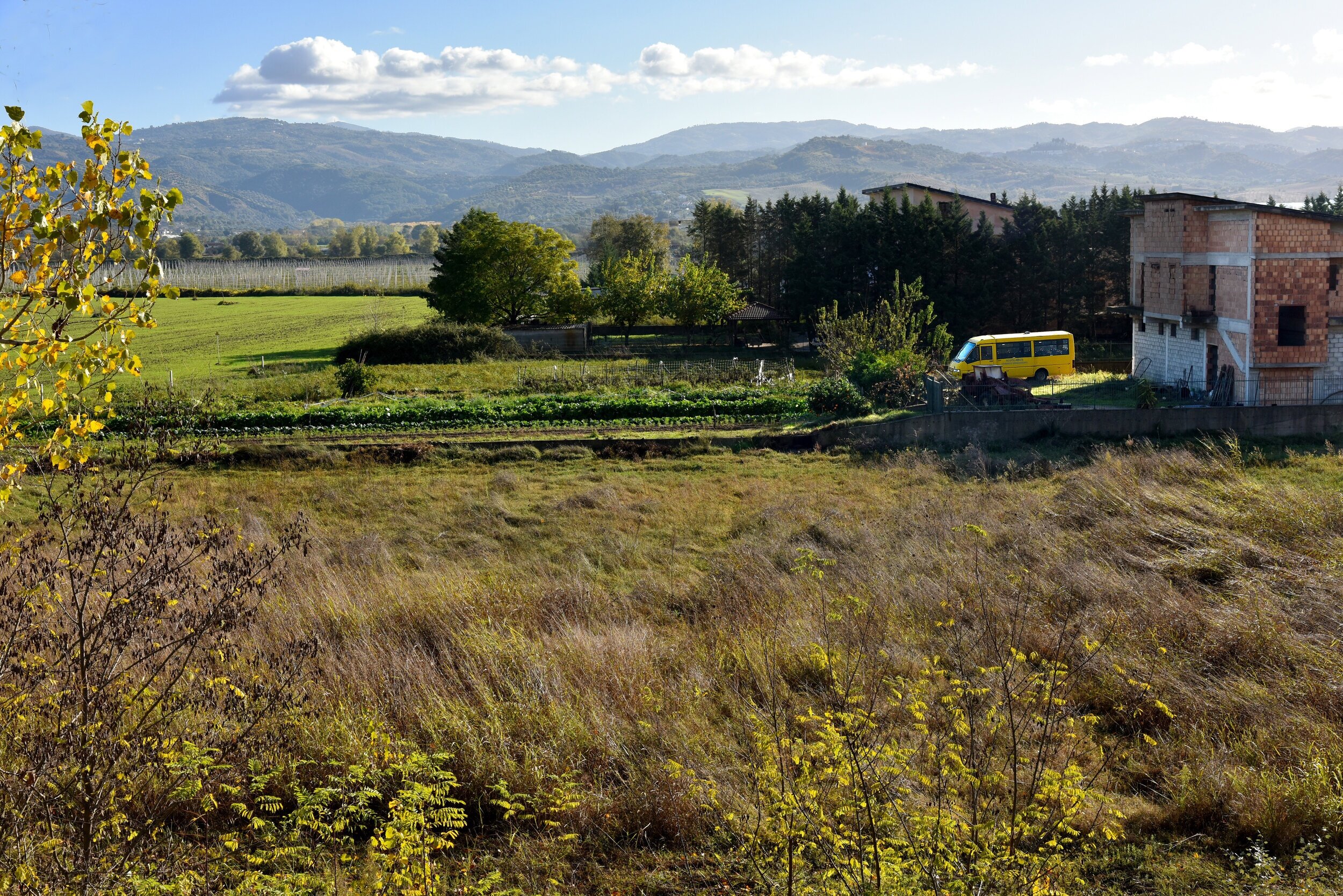
Next we drove through the Povince of Cosenza to the birthplace of my paternal grandmother, Terranova da Sibari.

Our first view of the hilltop town of Terranova Da Sibari.
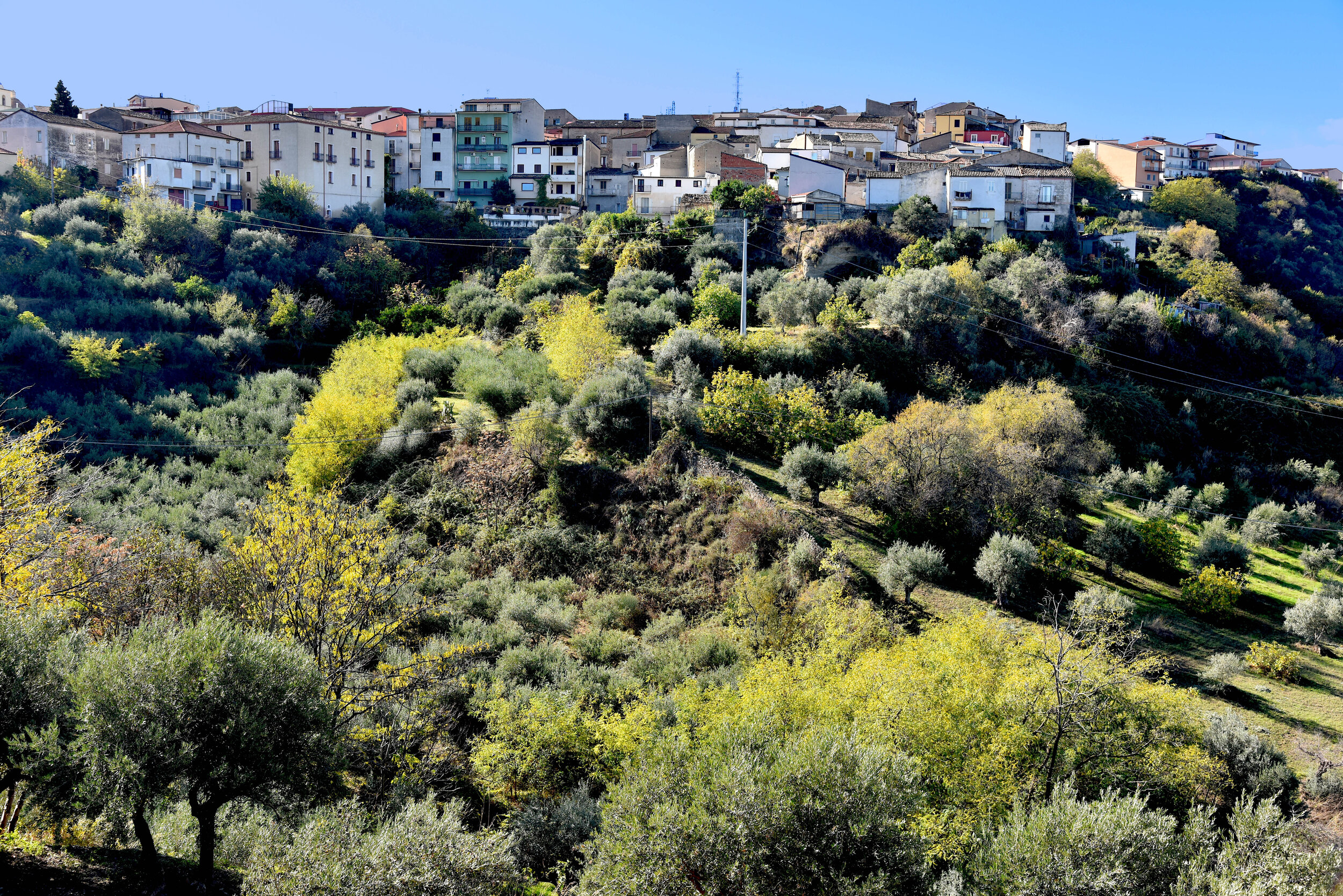
Approach to Terranova da Sibari with a hint of an olive grove on the side of the hill.
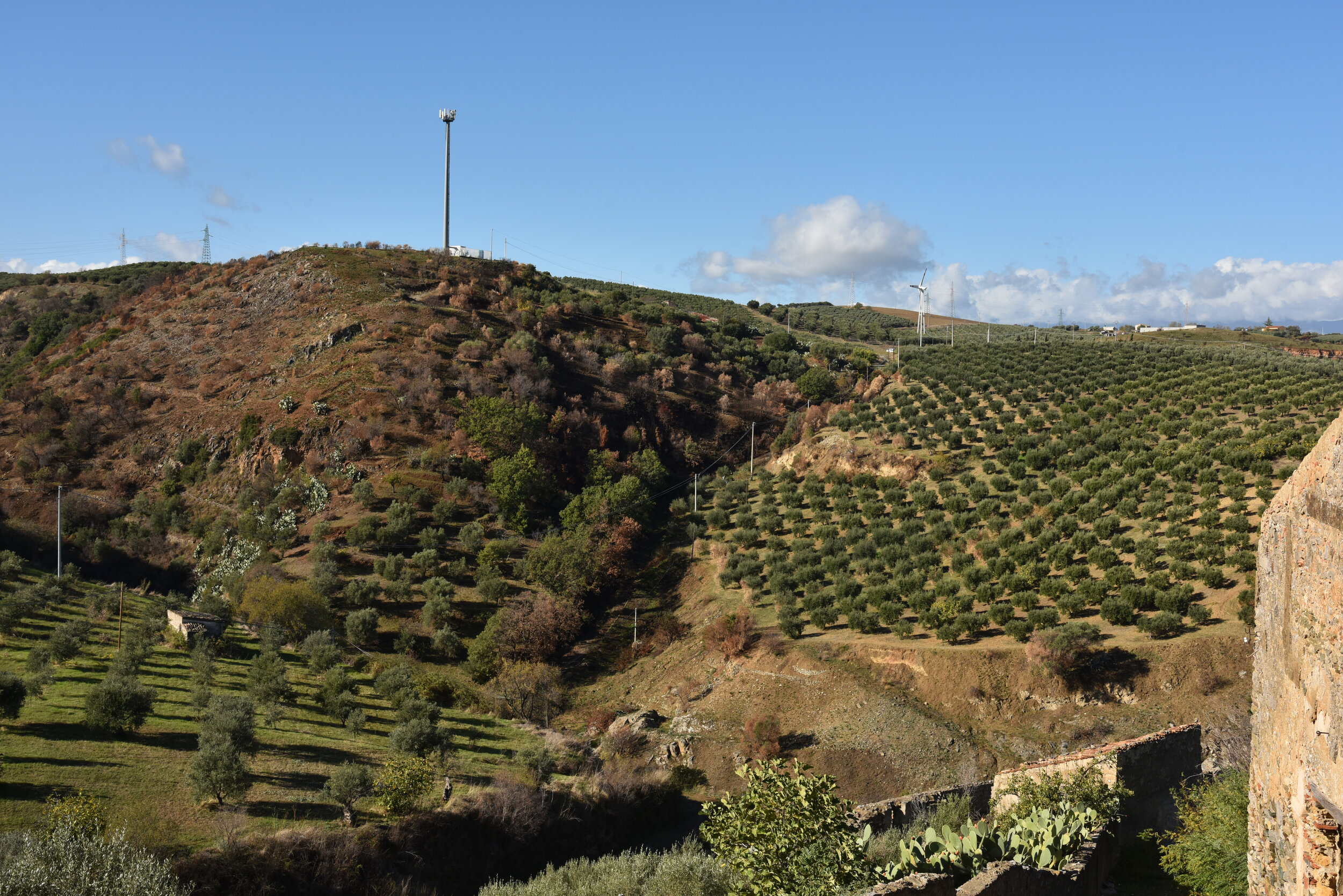
Olive groves abound throughout Calabria. Its olives rank second of all Italian olive-oil producing regions and it has a unique olive-growing portfolio in the world, comprising 33 olive cultivars.
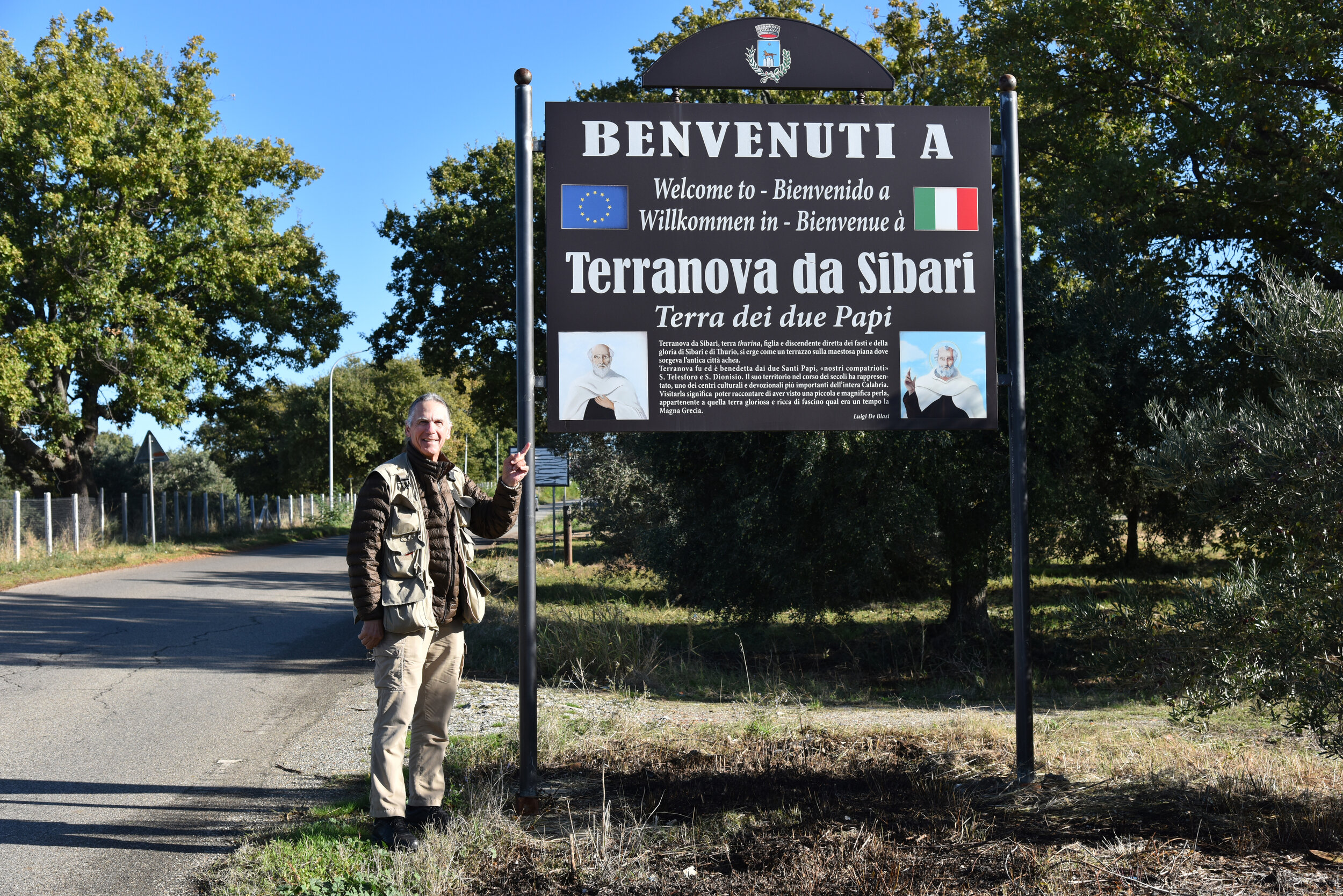
Welcome to Terranova da Sibari, the Land of Two Popes! Refugees from the ancient city of Thurii founded Terranova after the destruction of their city in the war against Croton.
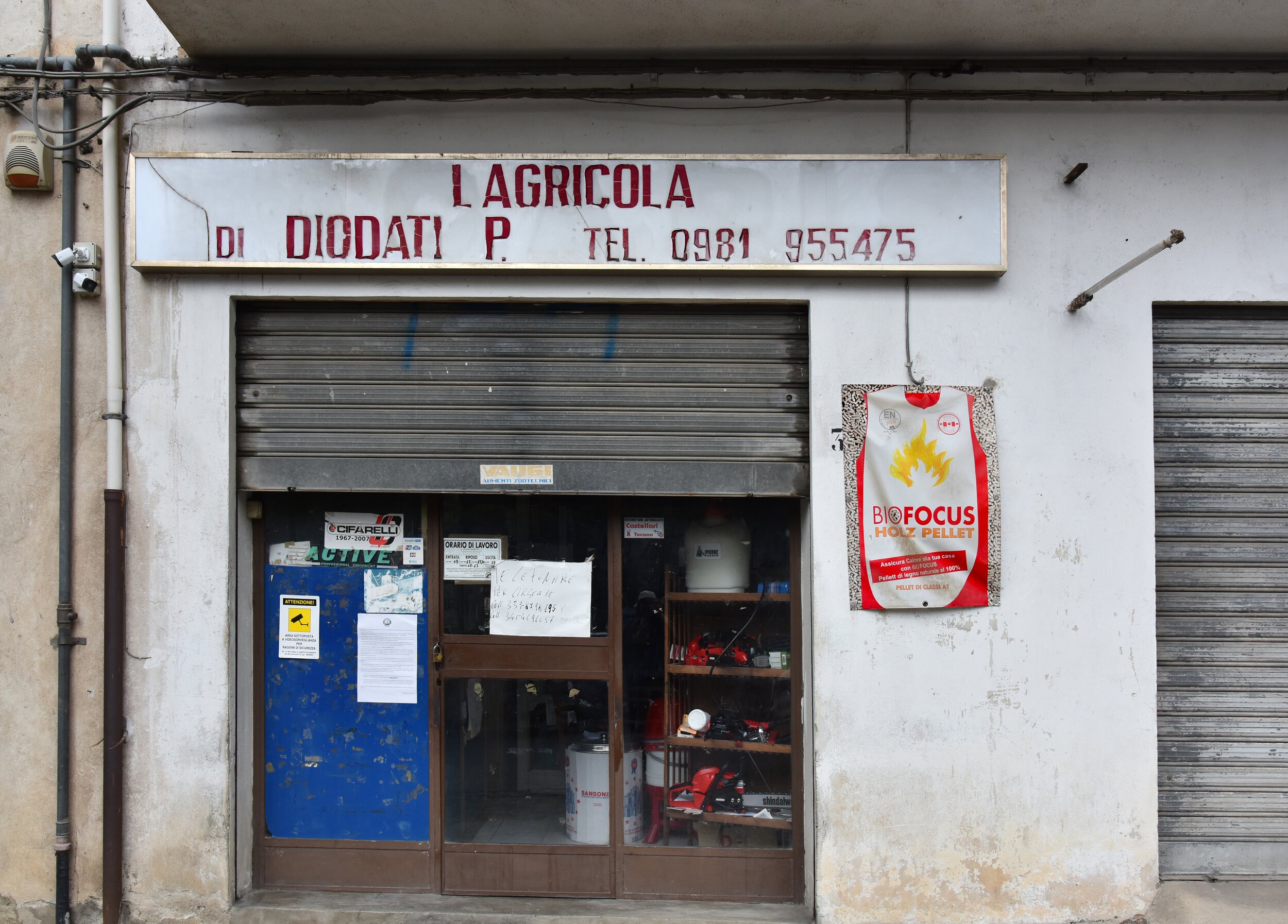
We had driven into town the day before, a Sunday, and had seen this store with the Diodati name. Thus, I thought we would be able to find the information we sought about my paternal grandmother.
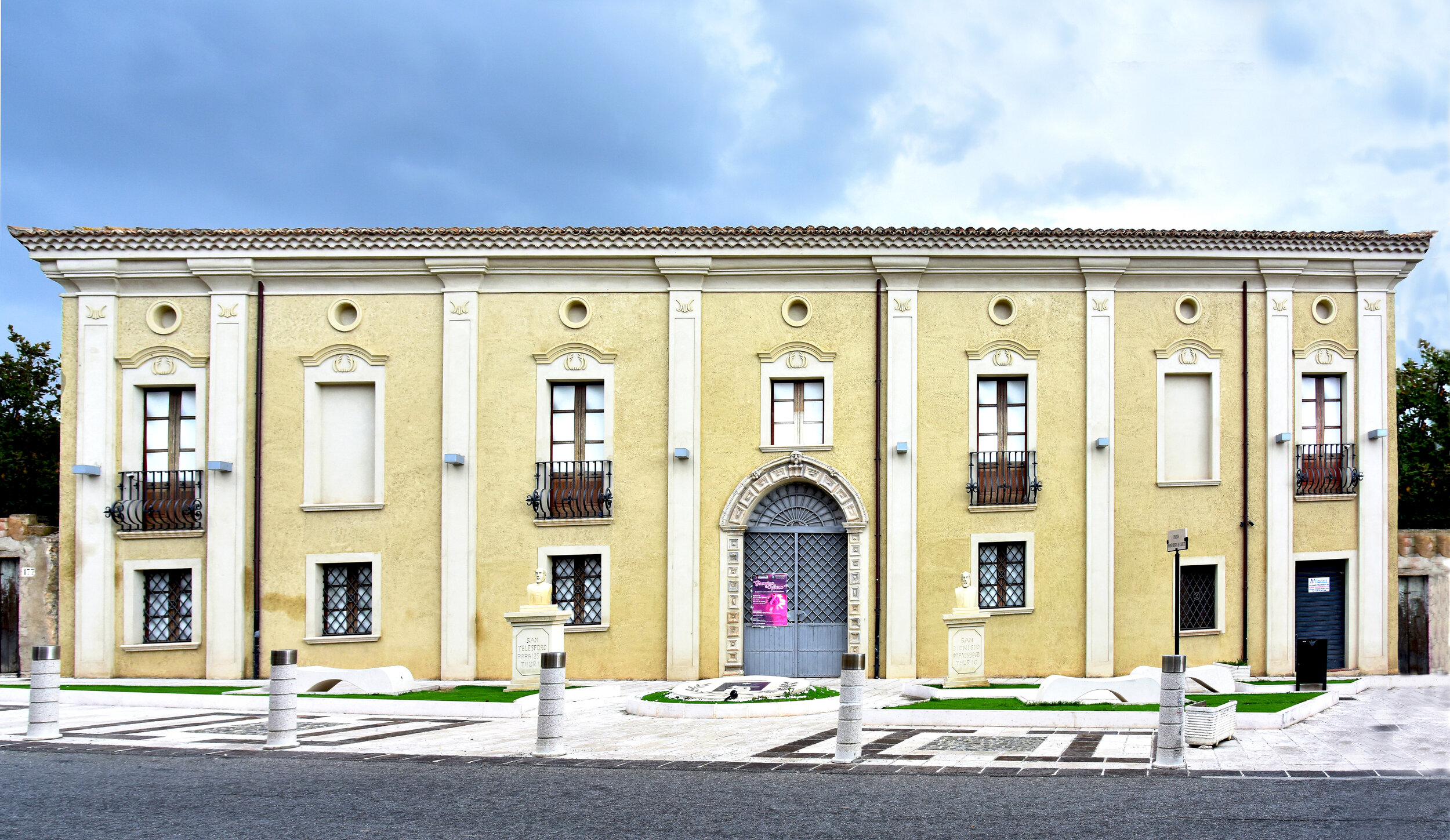
A museum in Terranova da Sibari with busts of the two popes who came from the town.

San Dionisio was Pope, 259 to 268 A,.D, He reorganized the Roman church after the persecutions of the Emperor Valerian I and the edict of toleration by his successor, Emperor Gallienus, after 260 A.D.

San Telesforo, the 8th Bishop (Pope) of Rome of the Catholic Church from 126 A.D. to his death 137 A.D. He was of Greek ancestry and born in Terranova da Sibari.
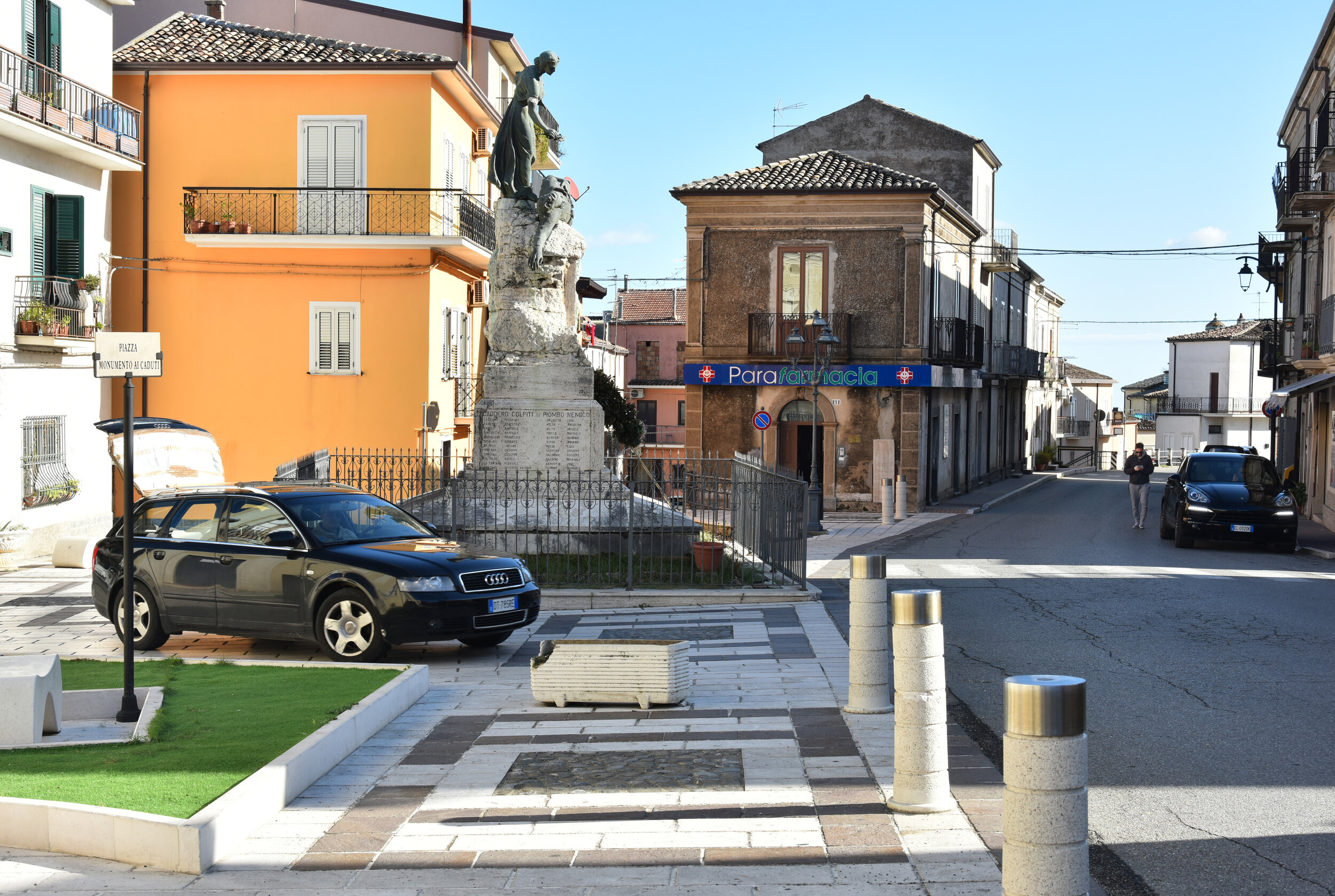
Piazza Monumentoai Caduta (Plaza of the Memorial to the Fallen), Terranova da Sibari.
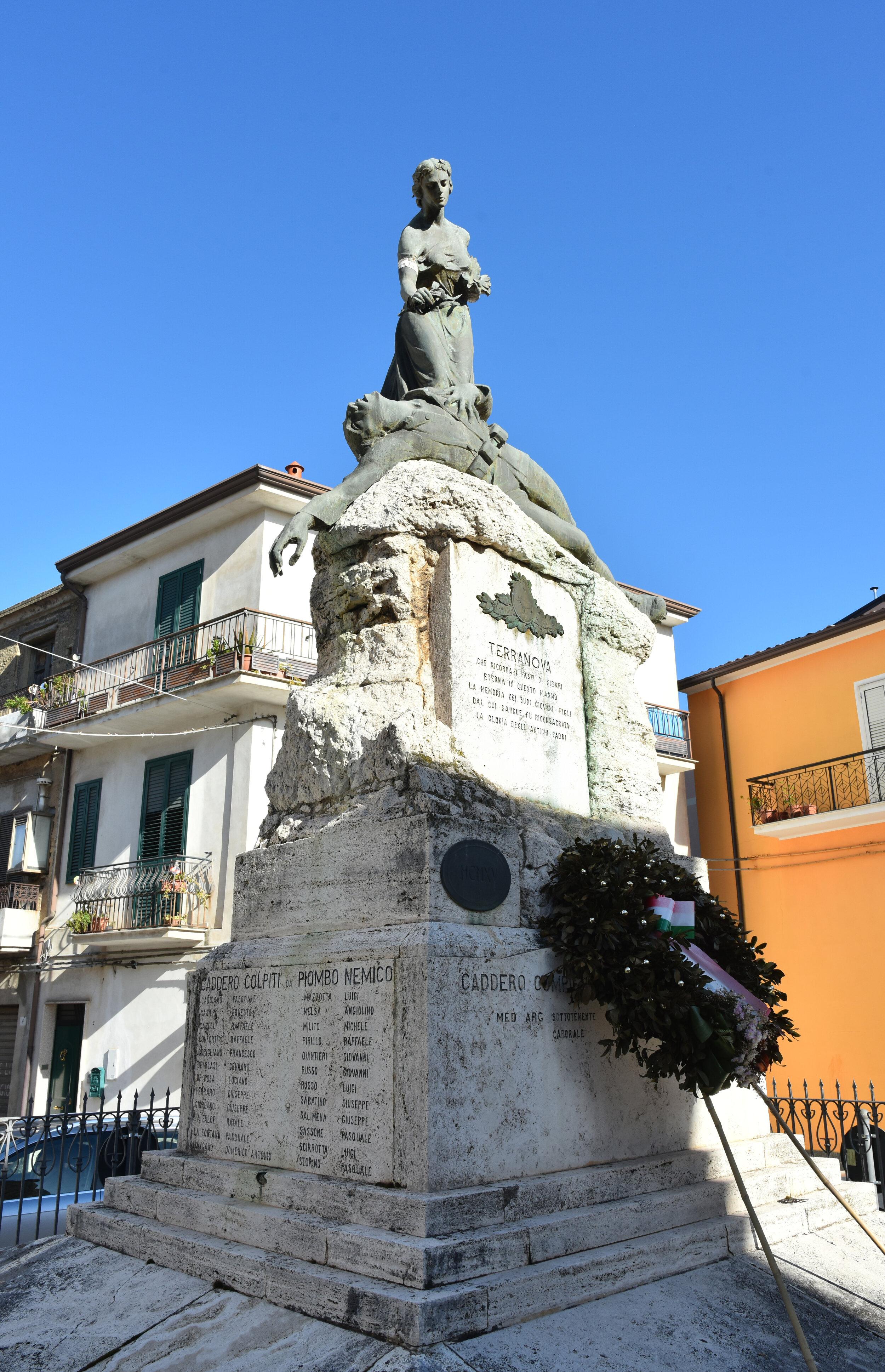
The Terranova da Sibari memorial to its fallen soldiers.
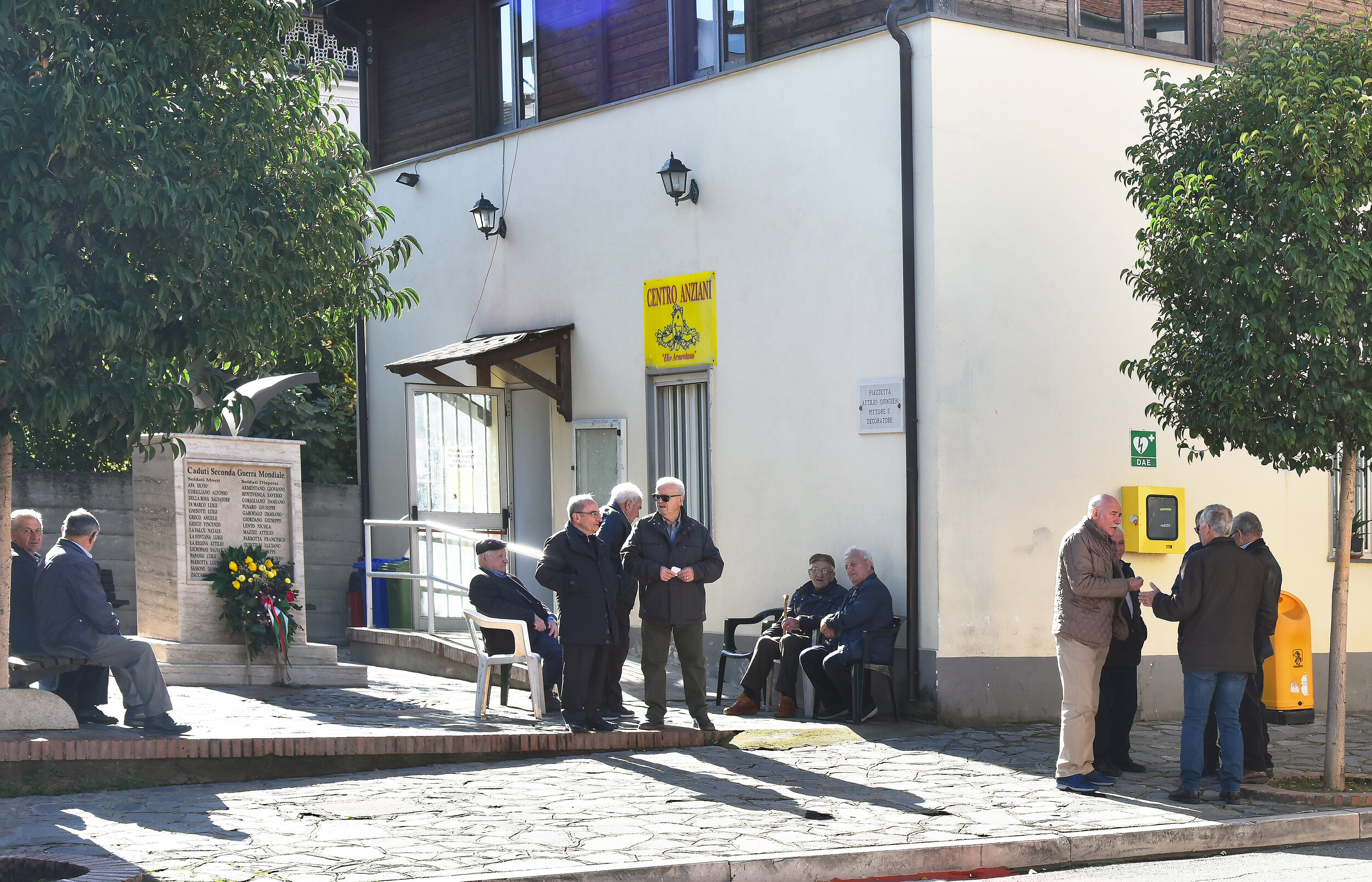
Across from the Memorial of the Fallen was the town's Centro Anziani (Senior Center). One of the men saw me photographing and came to inquire who we were/what we were doing, etc.

Small park across from the Senior Center replete with a water fountain and elders resting under shade trees.
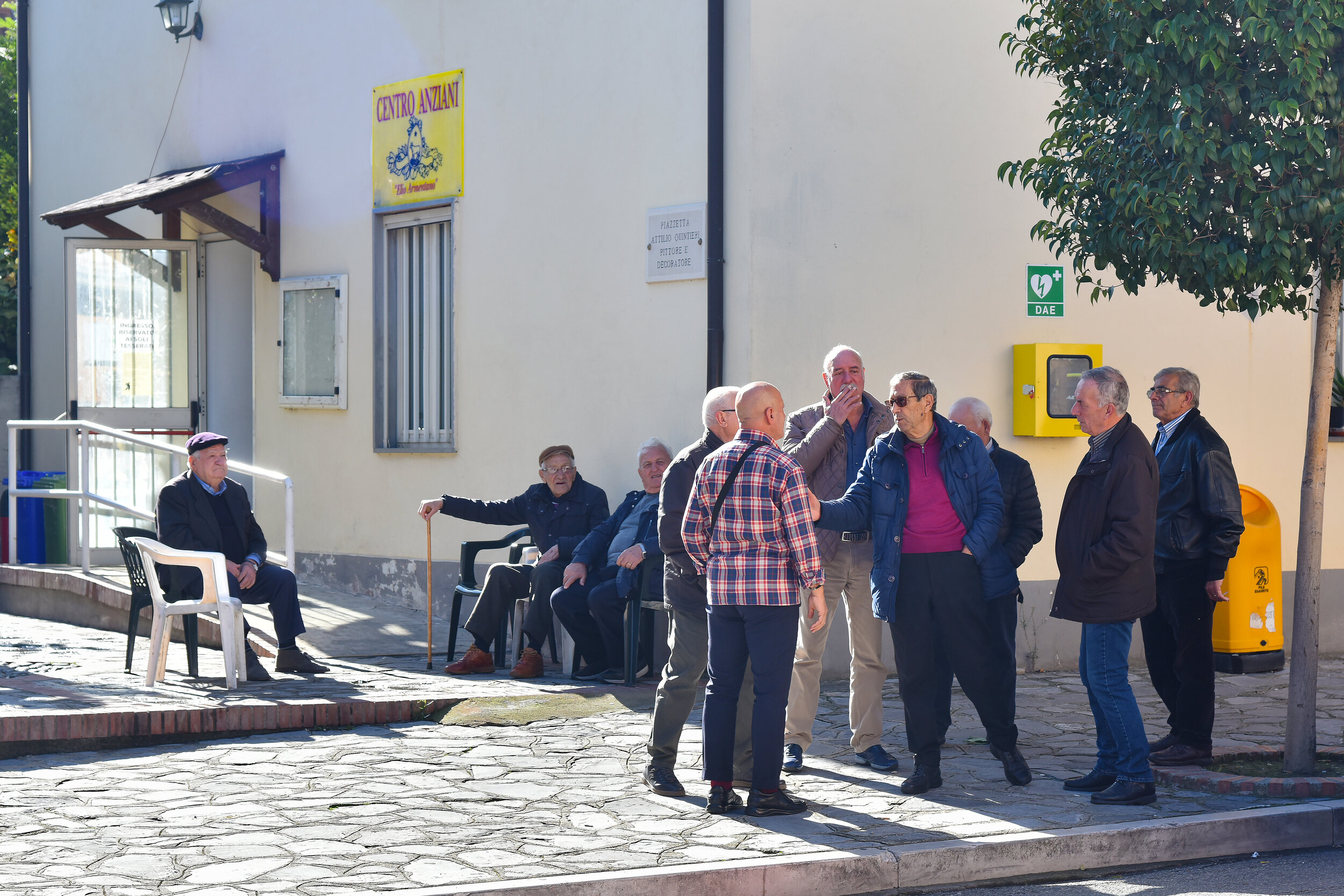
Francesco, in the checkered shirt, after conversing with his friends, came across the street, talked to us and then decided he needed to take us to the City Hall so that we could find information.
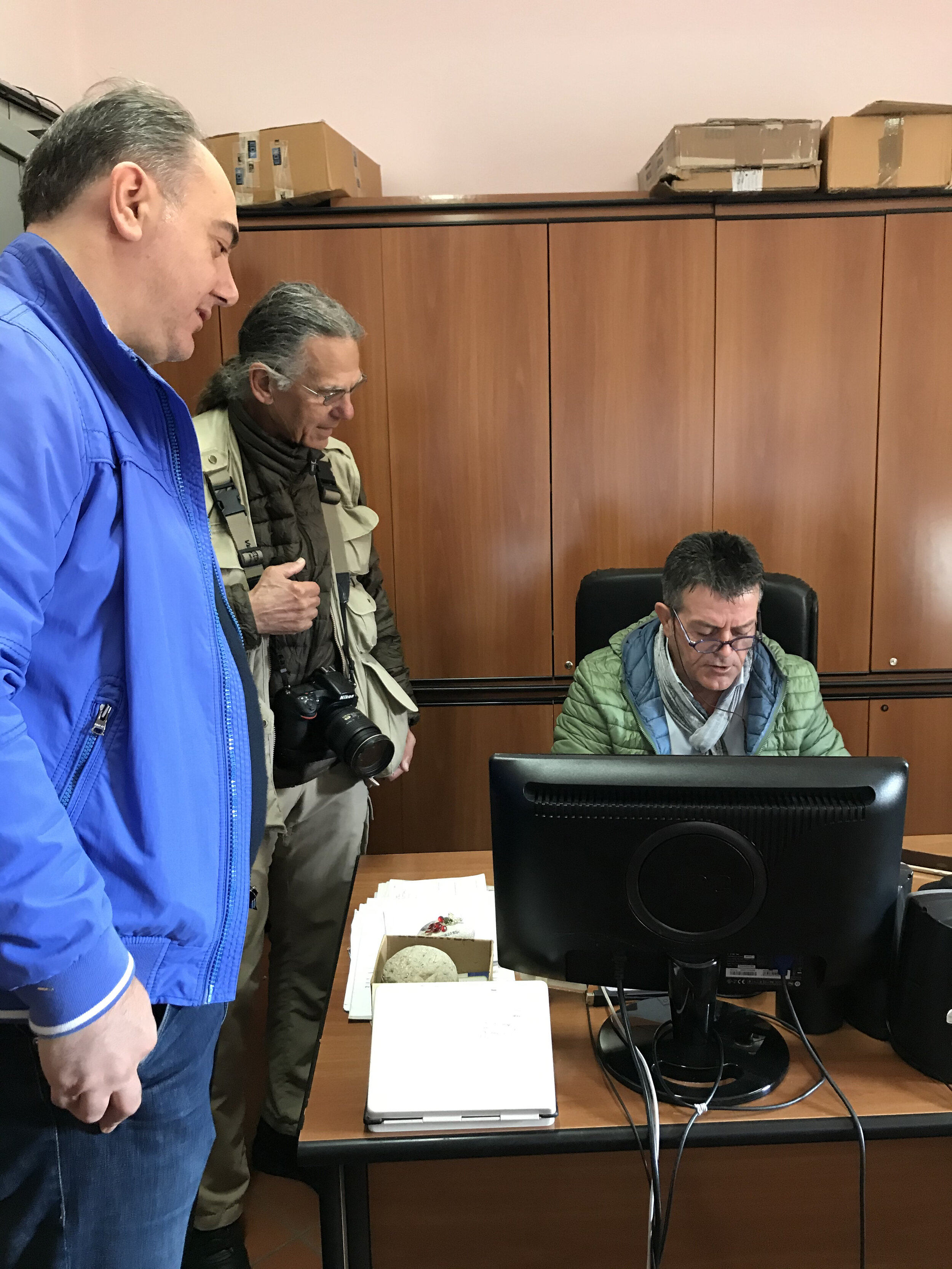
Francesco brought us to the City Hall and introduced us to everyone there, including the person in charge of records and to the Deputy Mayor, Massimiliano Esposito (on my right).
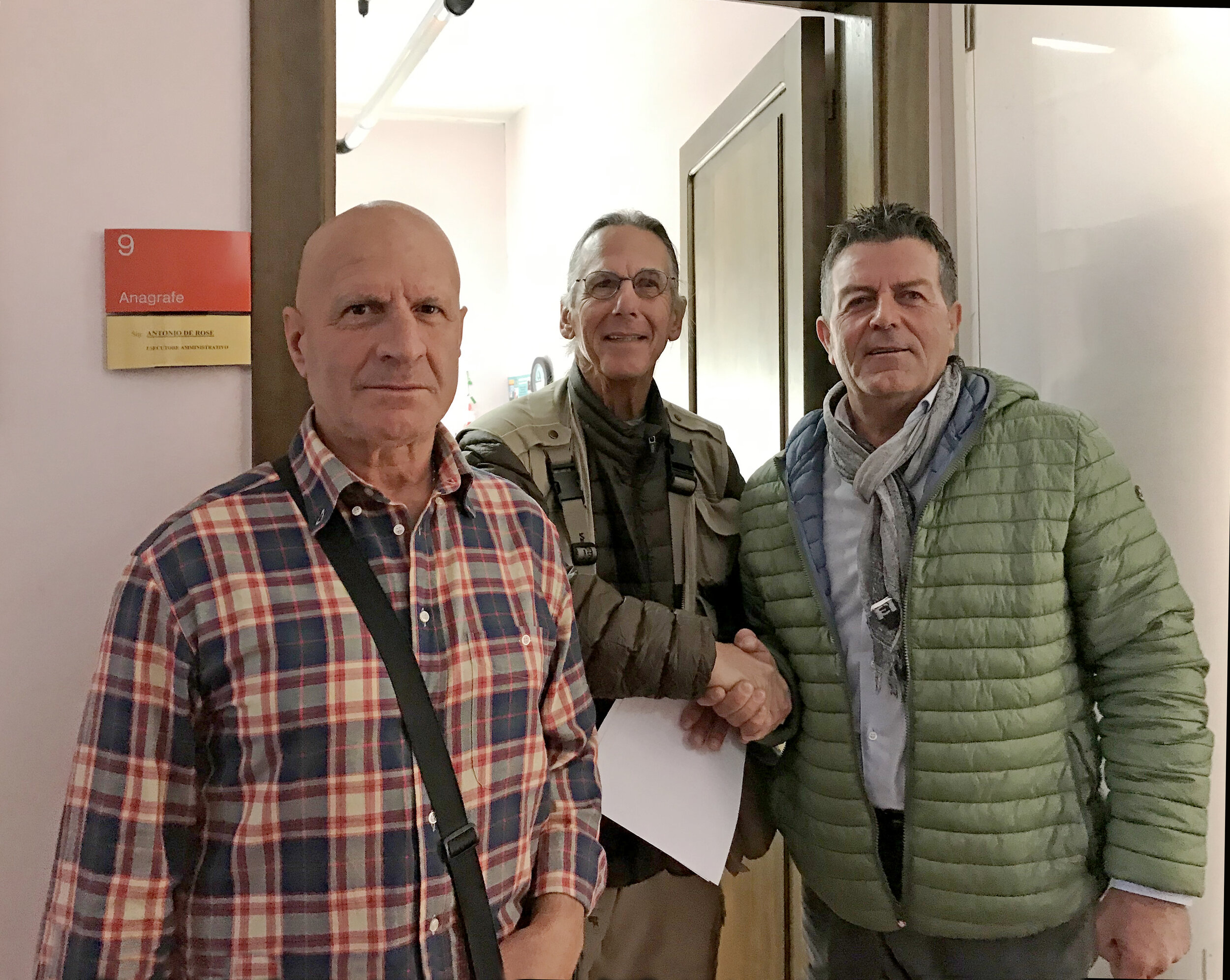
The Registrar found the birth record of my paternal grandmother, born in 1885. Francesco was happy to have been of service and everyone had been so helpful.

Record of the birth of Rosina Diodati from the original book, 1885.

Massomiliano, the Deputy Mayor, was intrigued so he read the record and decided to take us to via del Popolo, the street on which Rosina was born.
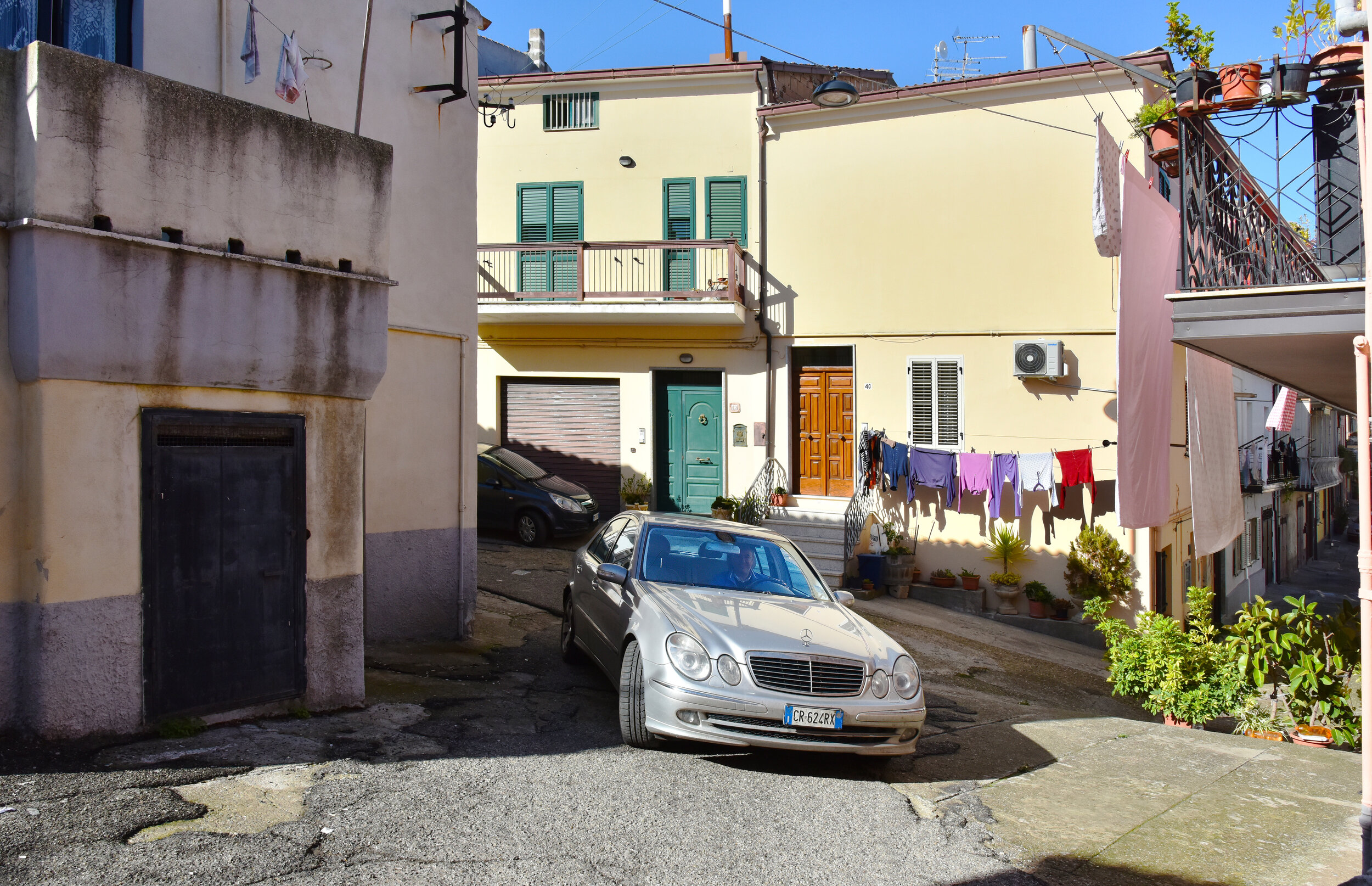
We piled into Massimiliano's car and soon turned into via del Popolo.

As in every Italian neighborhood in Philadelphia, a neighbor was watching.

After talking to different people on the block Francesco and a neighbor took us to a house she remembered as belonging to a Diodati but the occupant told them that she was not related.
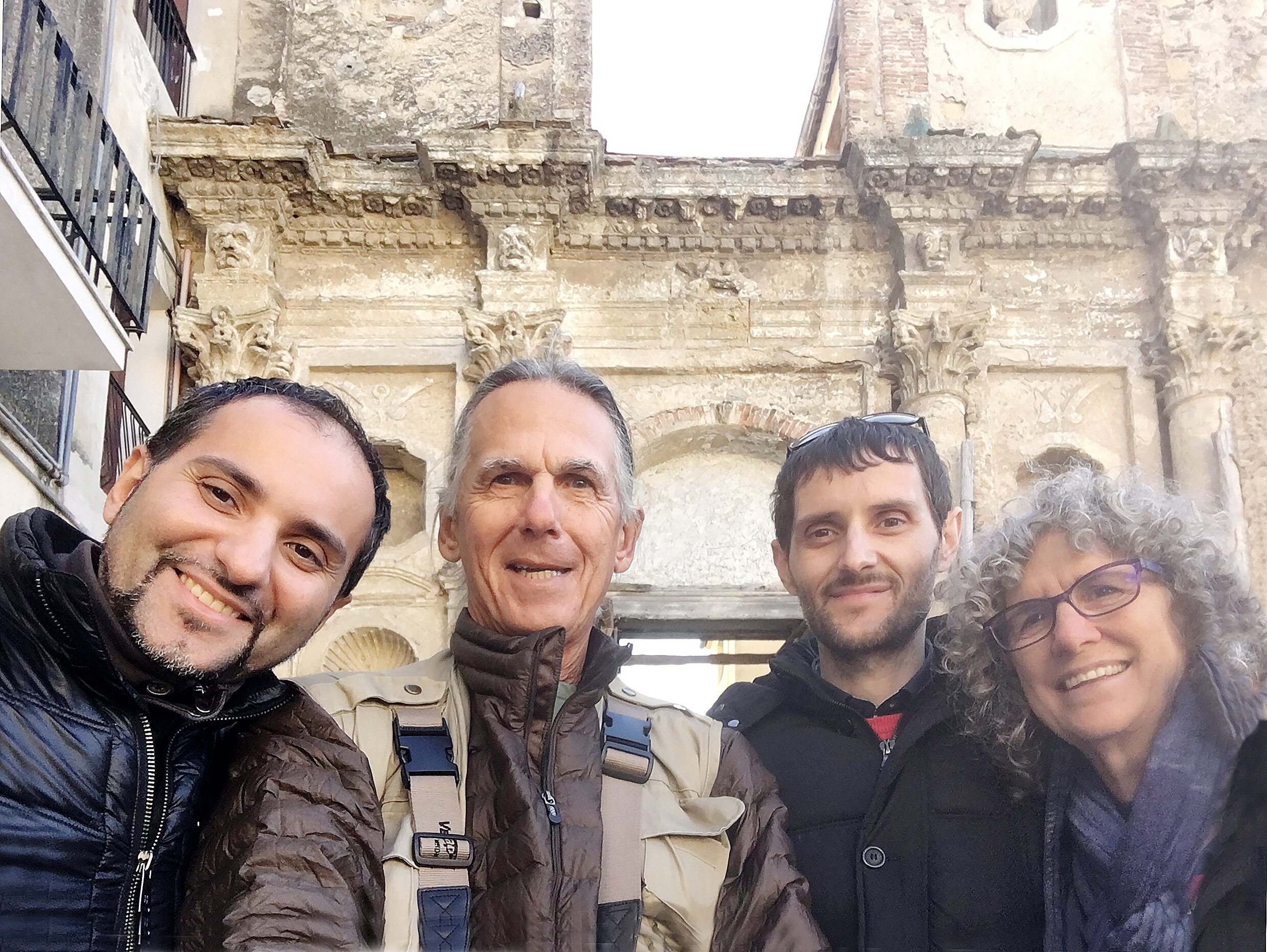
Massimiliano dropped us off at San Antonio Chiesa; he had called Luigi di Blasi (middle), the town church historian and Eugenio Antonio Noia (left), who spoke English to be the interpreter for Luigi.

The Church of San Anthonio was founded in 1542 by the Minor Observers with the title of Saint Mary of the Graces. Luigi took us inside and began discussing its beauty and history of the Church.
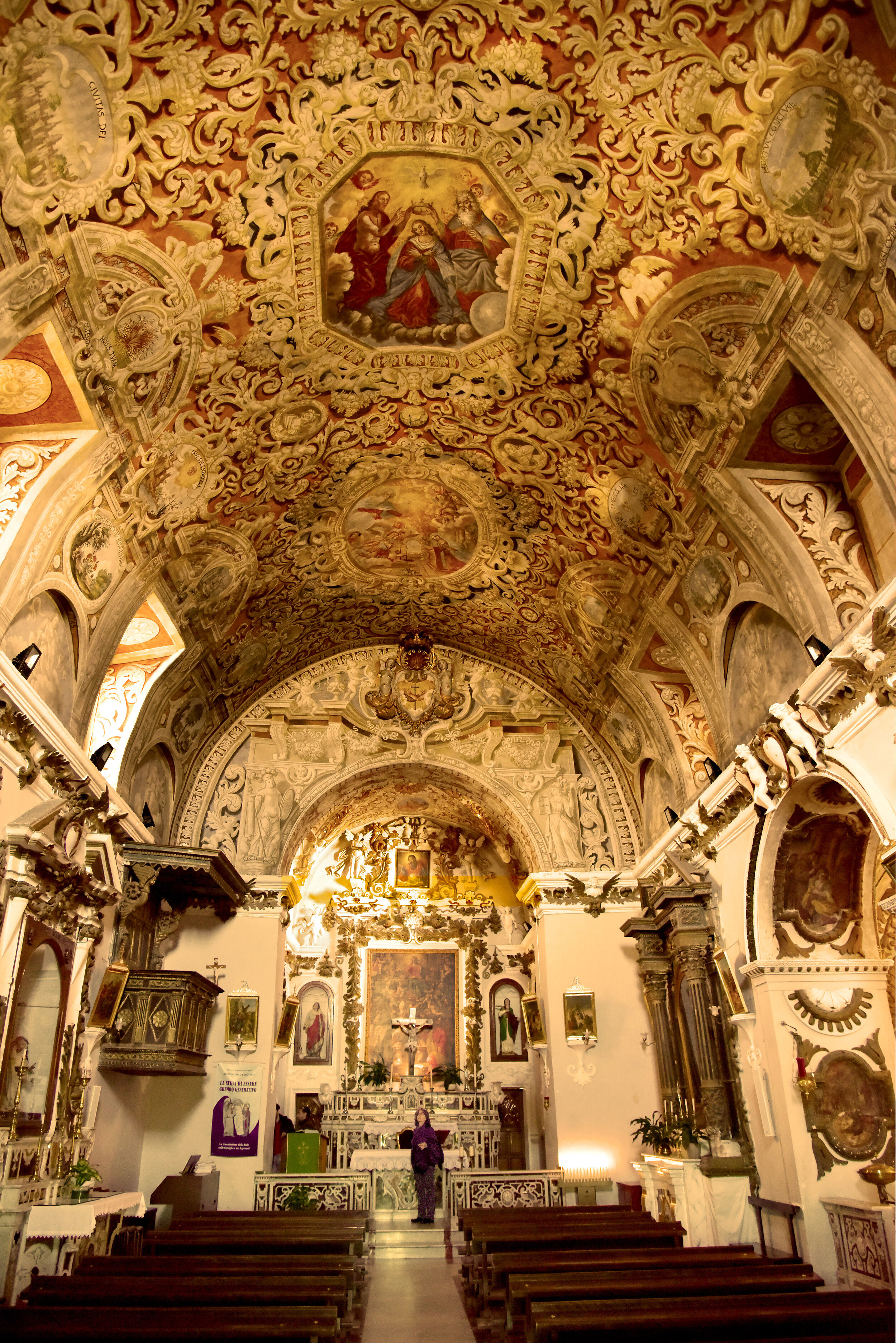
San Antonio Chiesa inside has a richly decorated vault, with flowery patterns and three frescoes on the ceiling: the Visit to Elizabeth, the Crowning of the Virgin (top) and the Annunciation.
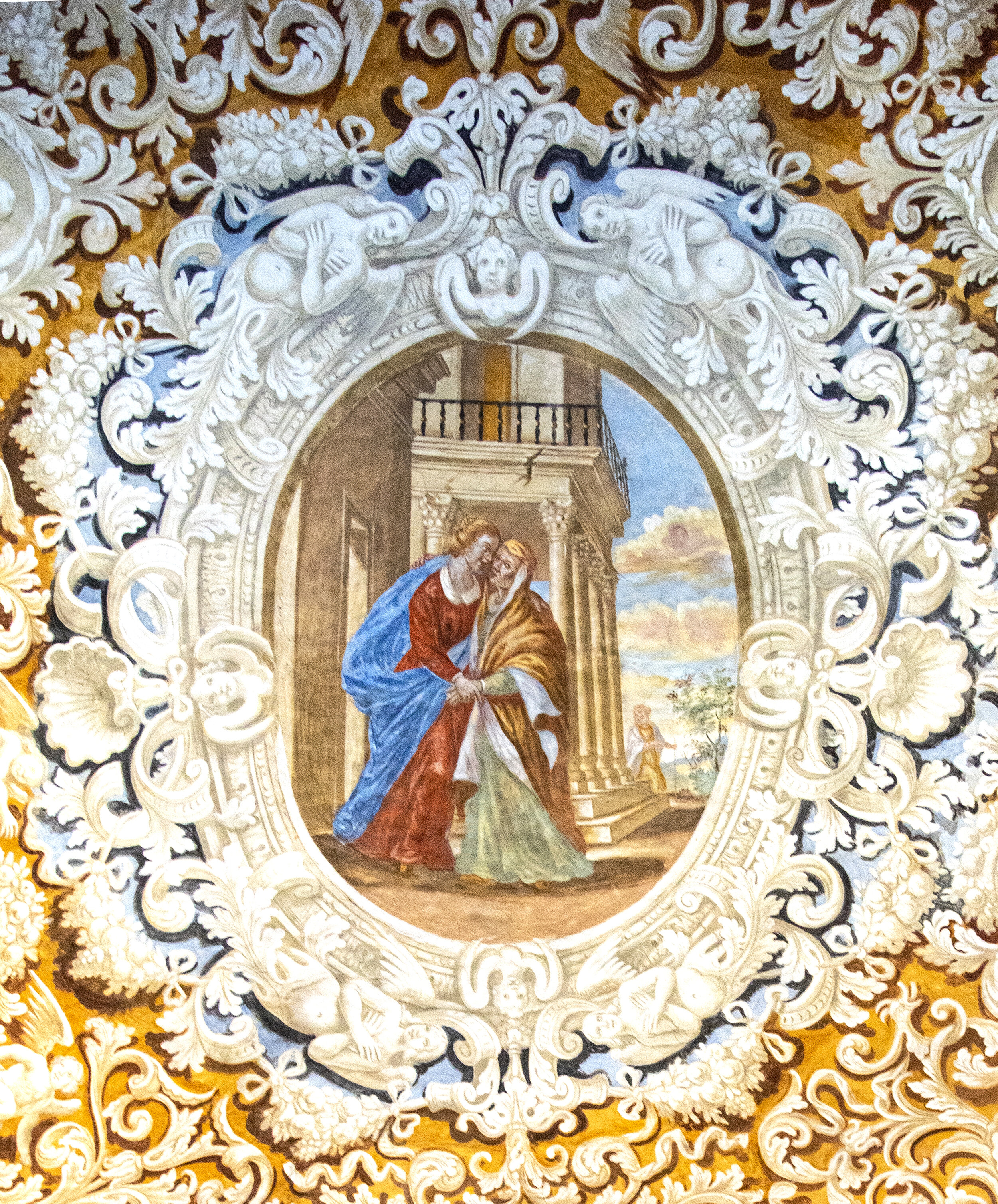
The "Visit to Elizabeth" depicts St. Mary, who was pregnant with Jesus, to St Elizabeth, who was pregnant with John the Baptist. (Gospel of Luke, Luke 1:39-56).
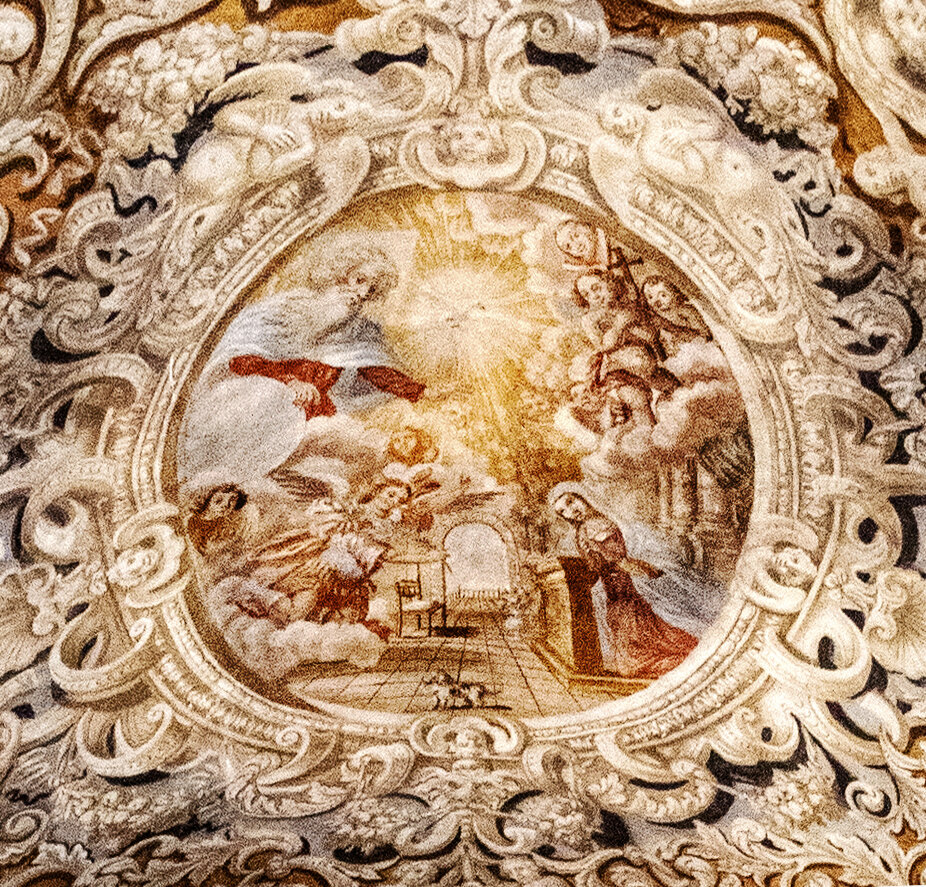
"The Annunciation" - the announcement by the angel Gabriel to the Virgin Mary that she would conceive a son by the power of the Holy Spirit to be called Jesus (Luke 1:26-38).
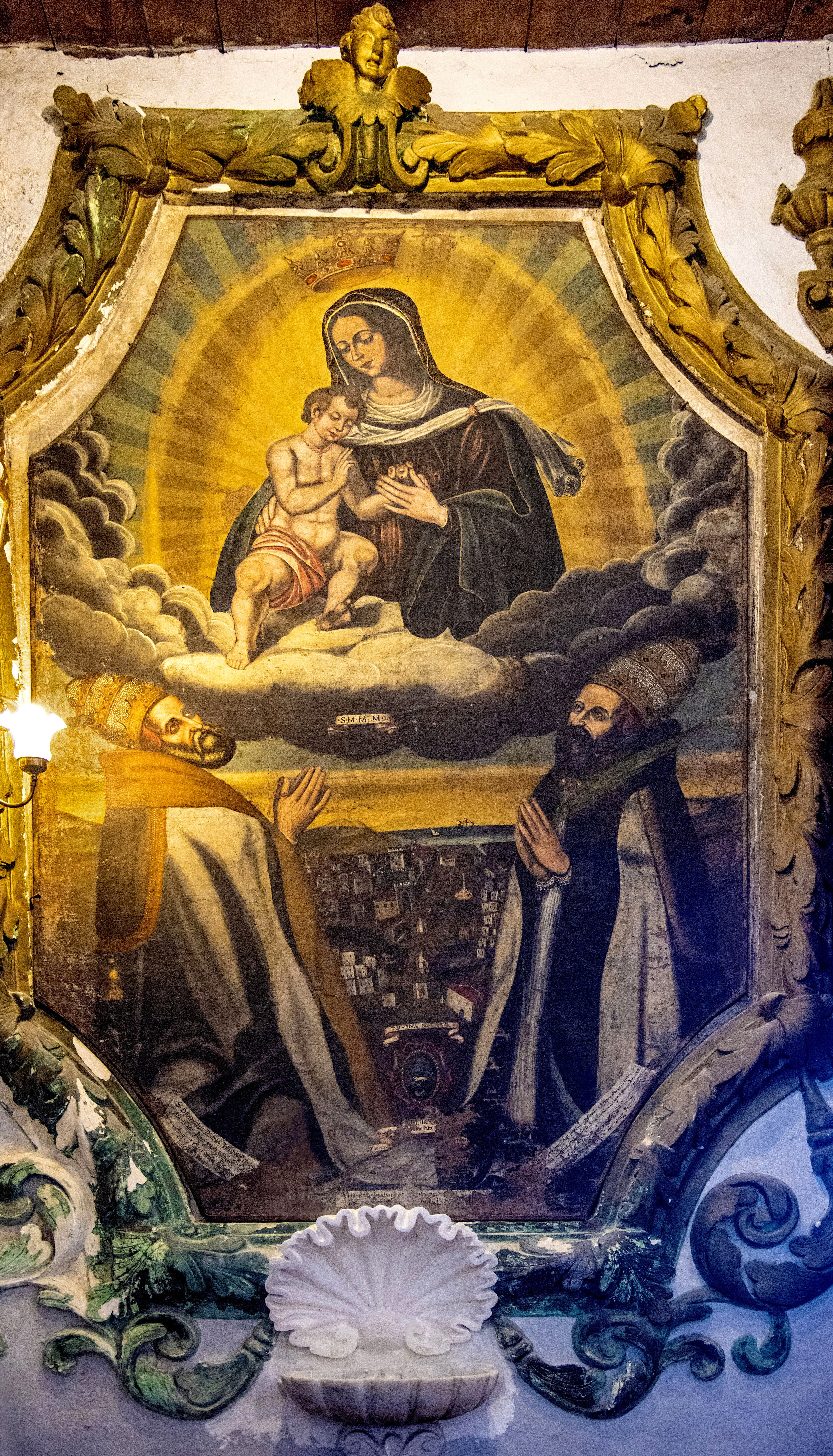
The entire picture shows the two popes from Terranova da Sibari, San Dionysius (left) and San Teleforo (right), kneeling before a crowned Mary and Jesus, thus telling the special history of the town.
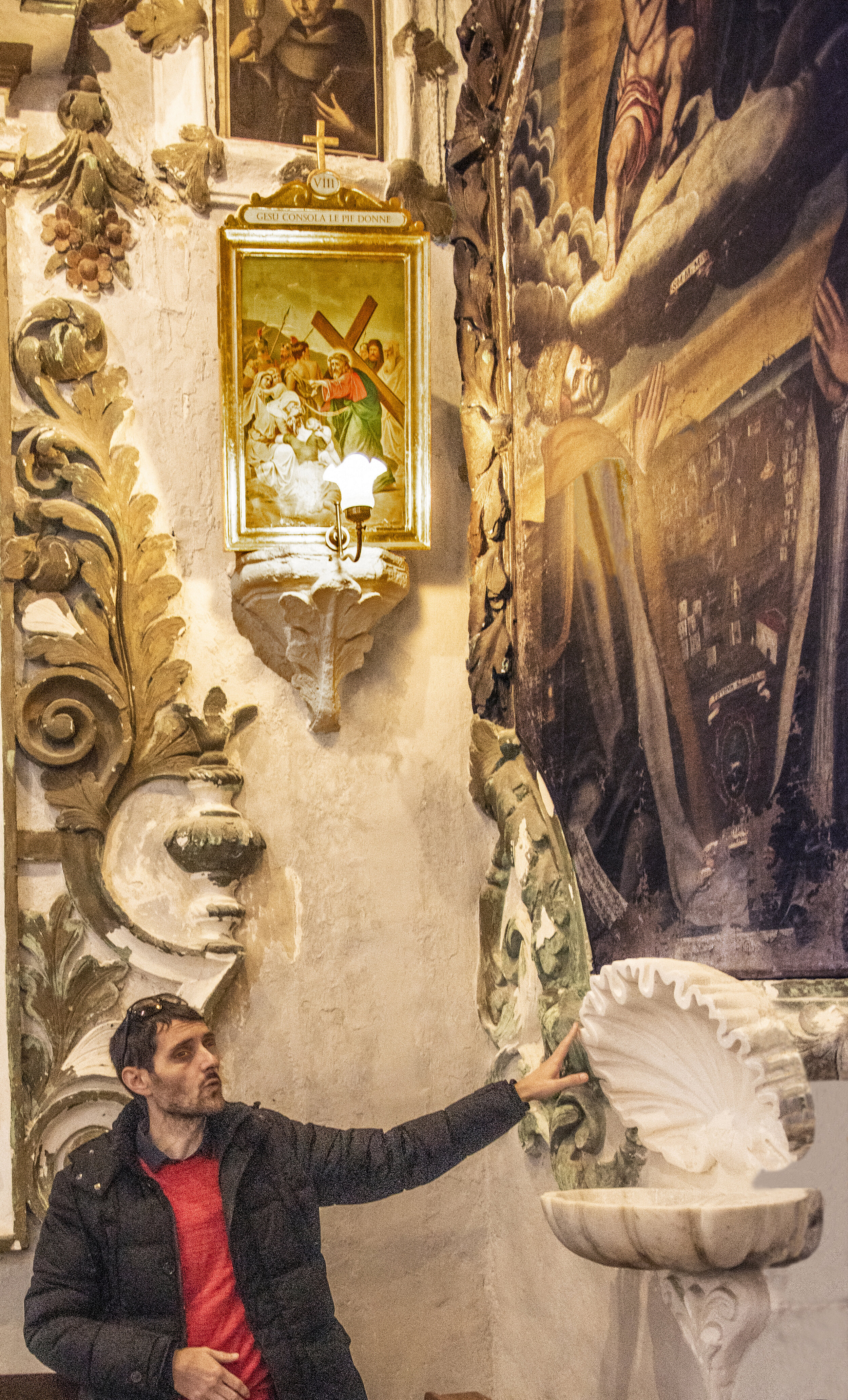
Luigi di Blasi explained the images in this painting with its references to Thurii, the city of Magna Graecia (Greater Greece), whose place was taken by Sybaris, and then by Terranova..
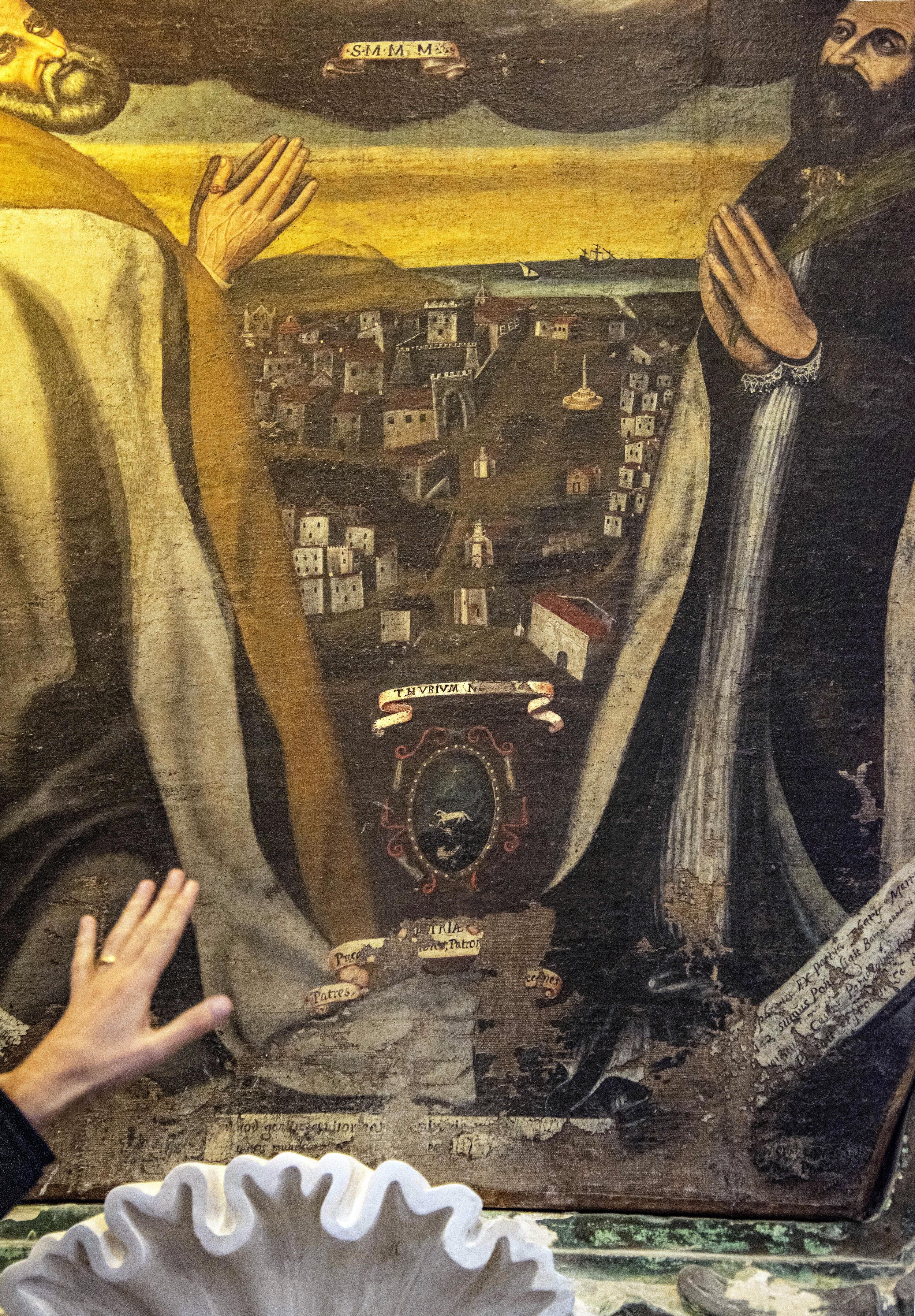
The banner labels the town Thurium (Latin for the Greek Thurii), possibly Nova Thurium, with the rendering of what Terranova da Sibari looked like during the 16th century.

The chapel of Saint Anthony of Padua. He is often shown with Christ balanced on a book, symbolizing his intimacy with God and his knowledge and preaching; the lily symbolizes his purity.
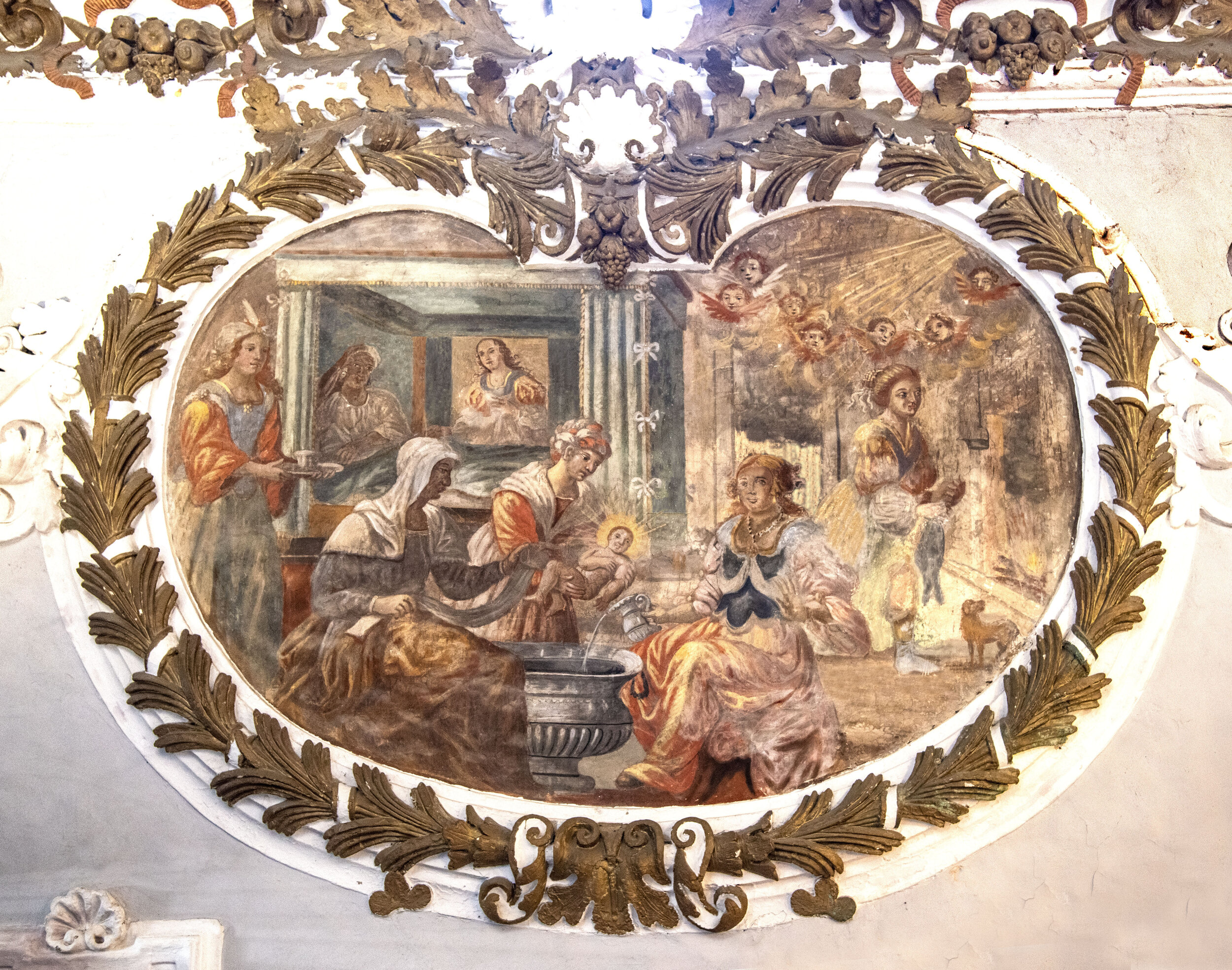
In addition to the heavenly images, the church had pictures such as this that gives insight into the everyday-life activities, such as in bathing a baby Jesus.
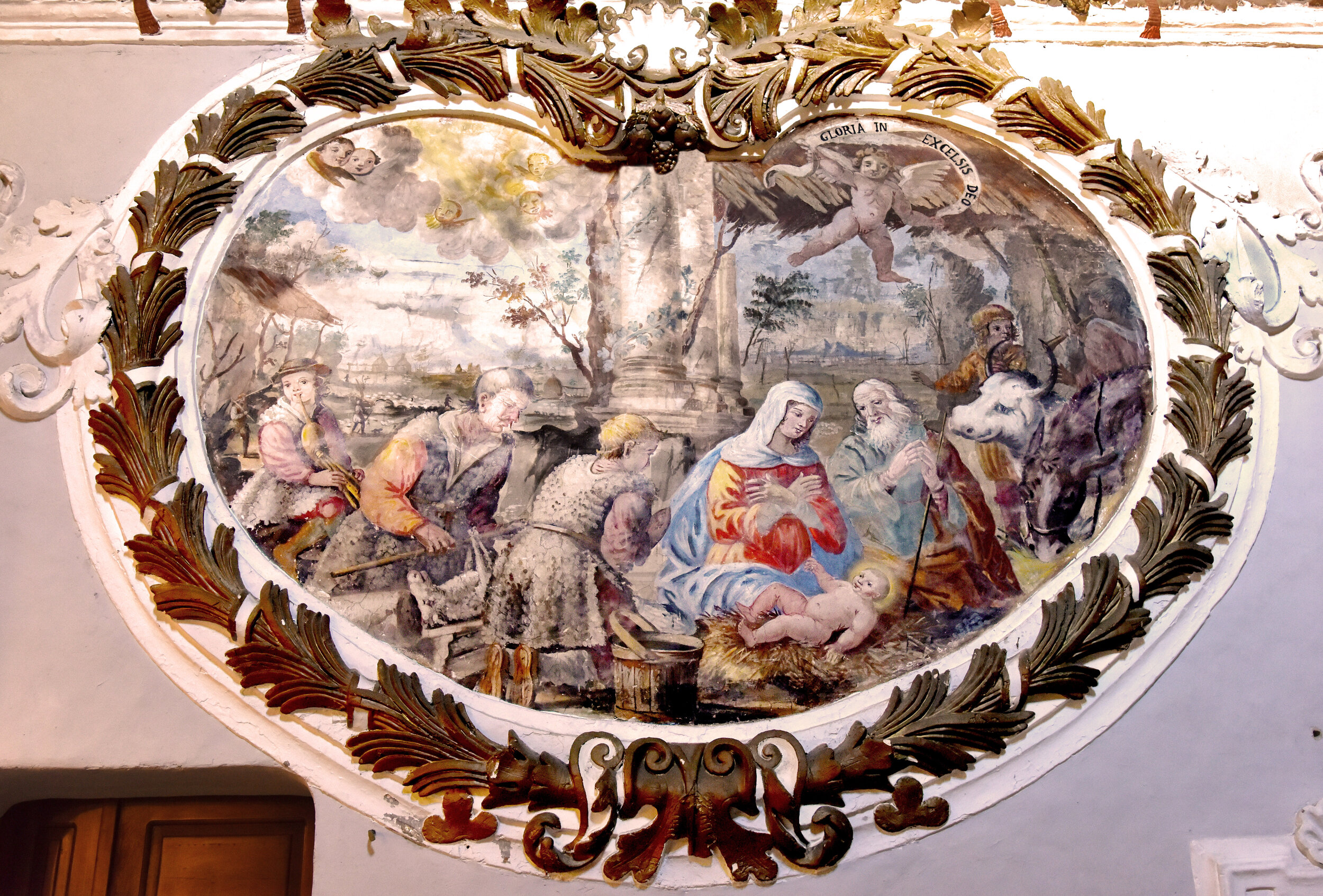
I especially liked this image where instead of three kings around the manger we have peasants kneeling and a bagpipe player providing the music for the birth of Christ.

In the courtyard of the convent of San Antonio church at the well with Eugenio, Louise, and Luigi. The frescoes in the arches in the walkway of the courtyard showed events of San Francesco's lif.
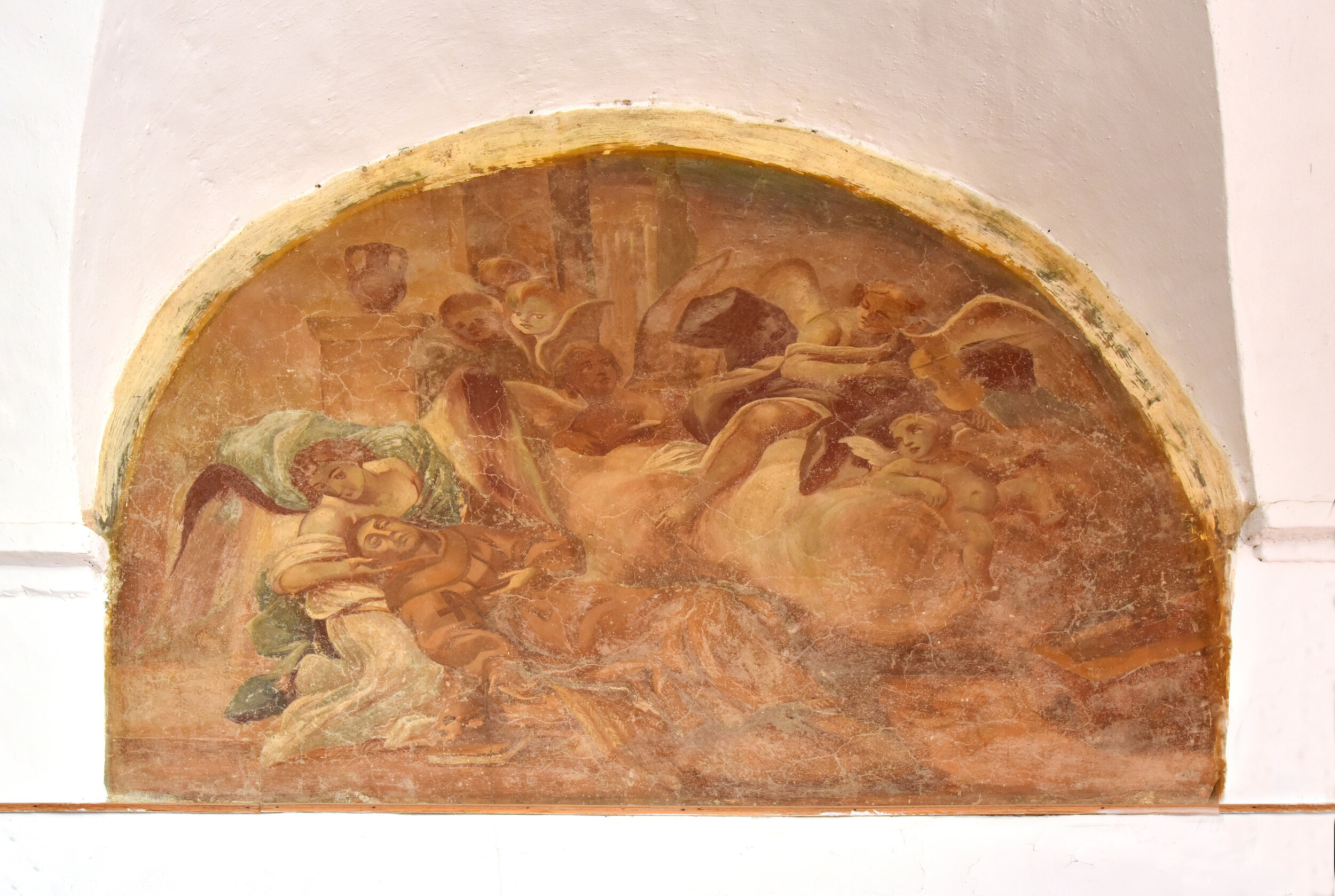
"Transition of San Francesco" in the year 1226 painted by Francesco Severio Ricci, a Terranova artist in the early years of the 17th century (located in an arch in the walkway of the courtyard).
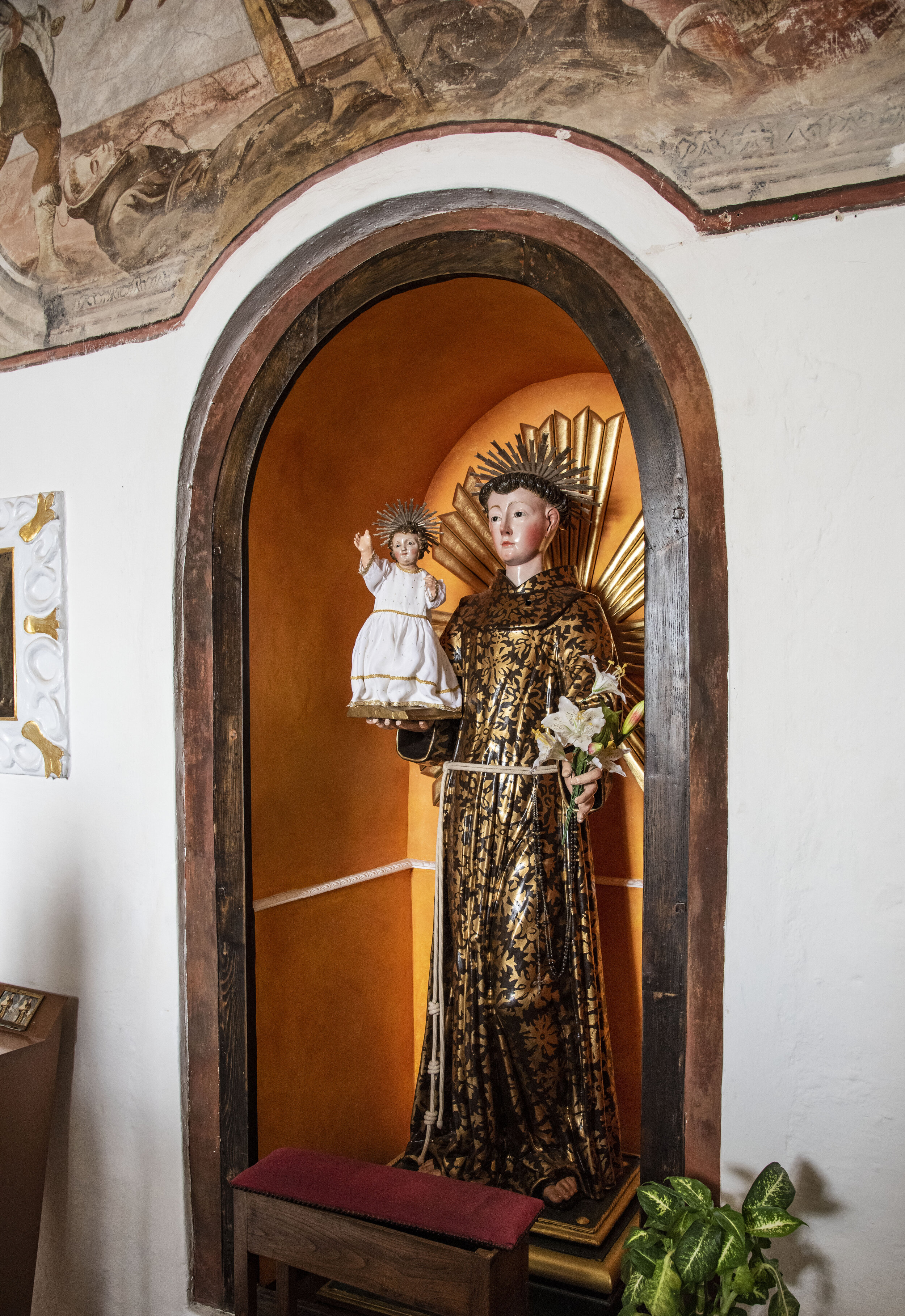
In the sacristy of San Antonio another image of San Antonio of Padua with Christ on a book and the lily in his left hand. St. Anthony became a Franciscan due to the acts of St. Francis.
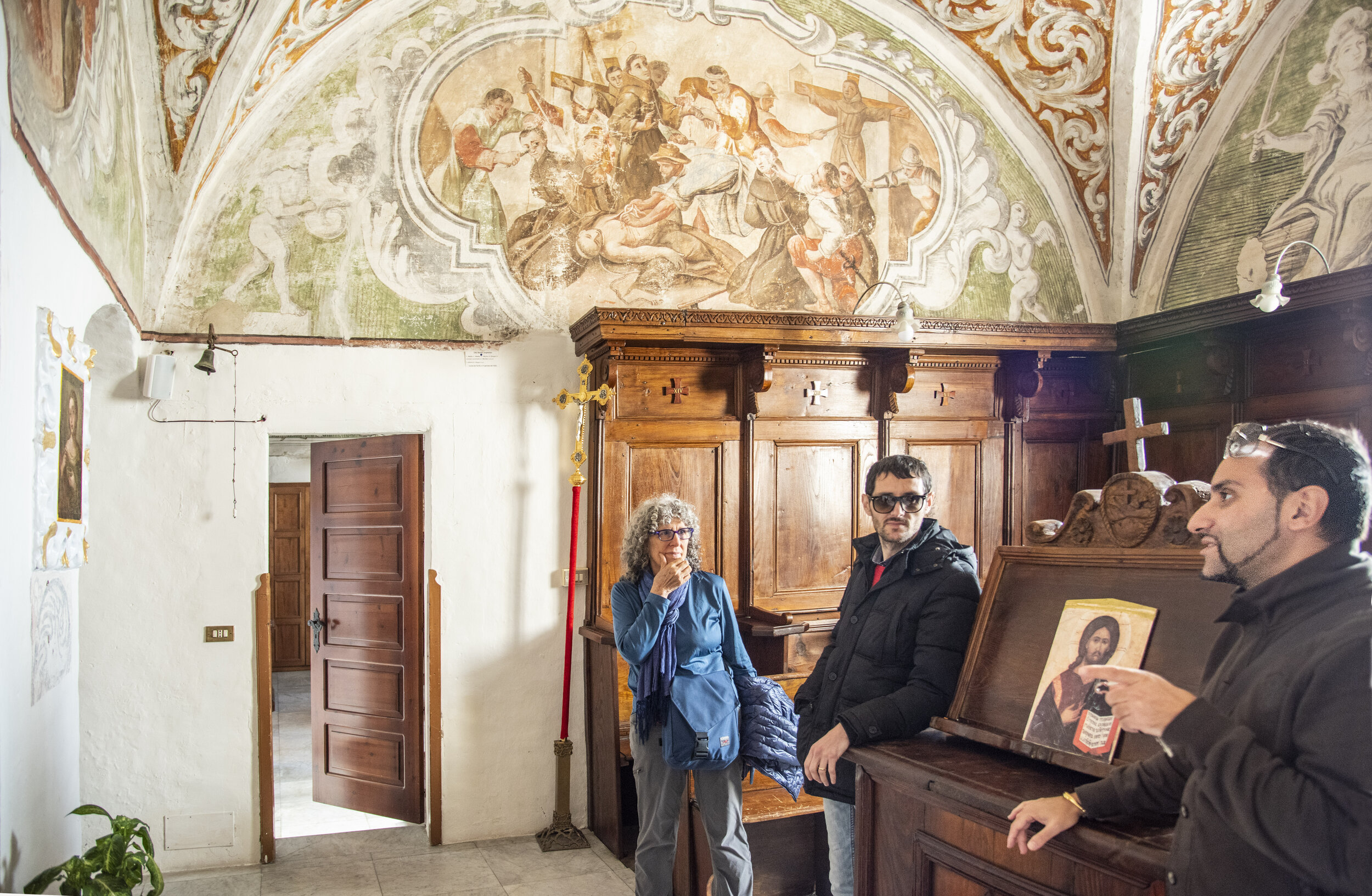
Eugenio interprets Luigi's comments on the life of St. Anthony of Padua.
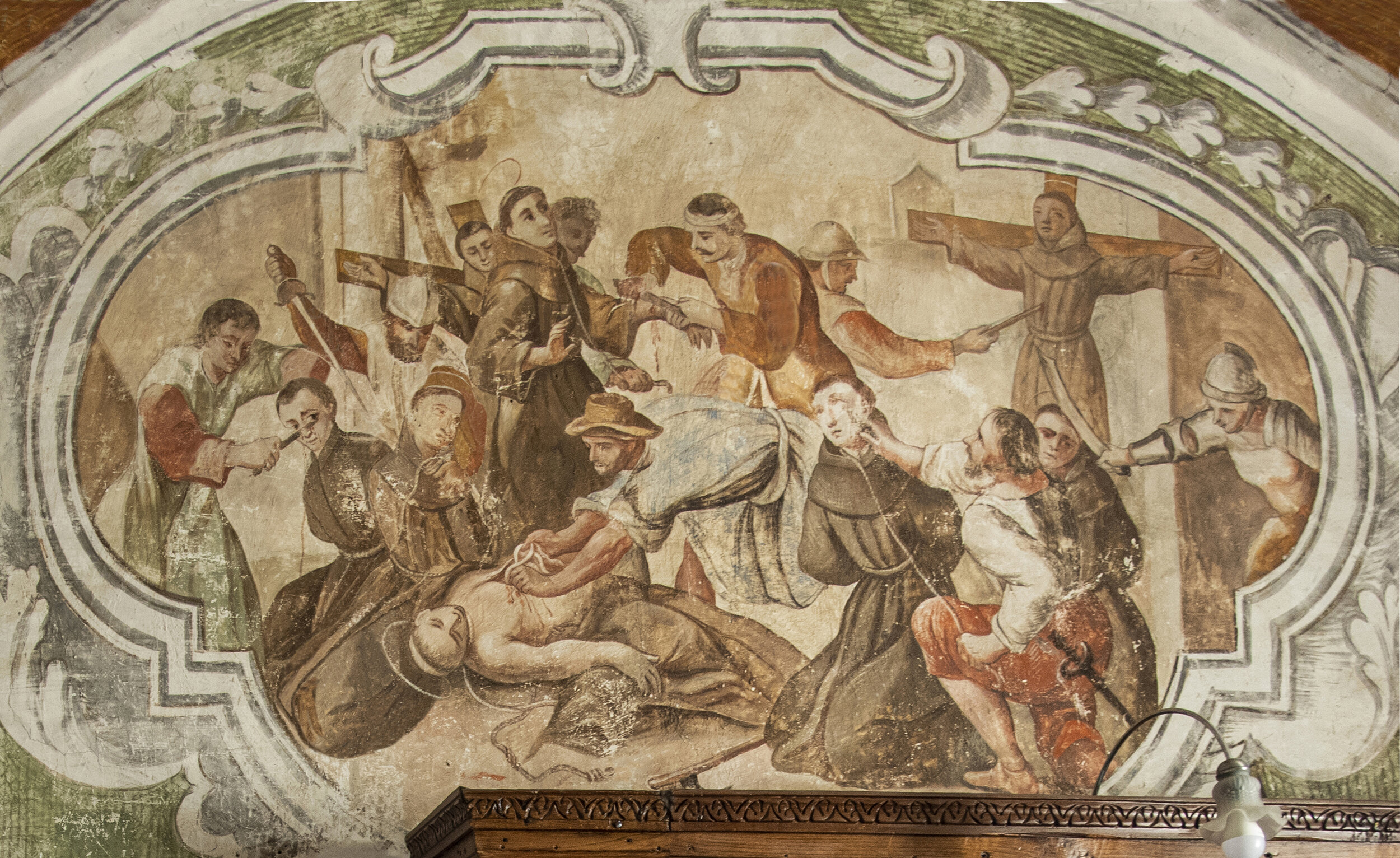
Fresco painted on the sacristy wall in the first years of the 18th century by Francesco Savero Ricci from Terranova shows Franciscans in Hungary as martyrs at the hands of Turks in the year 1532..
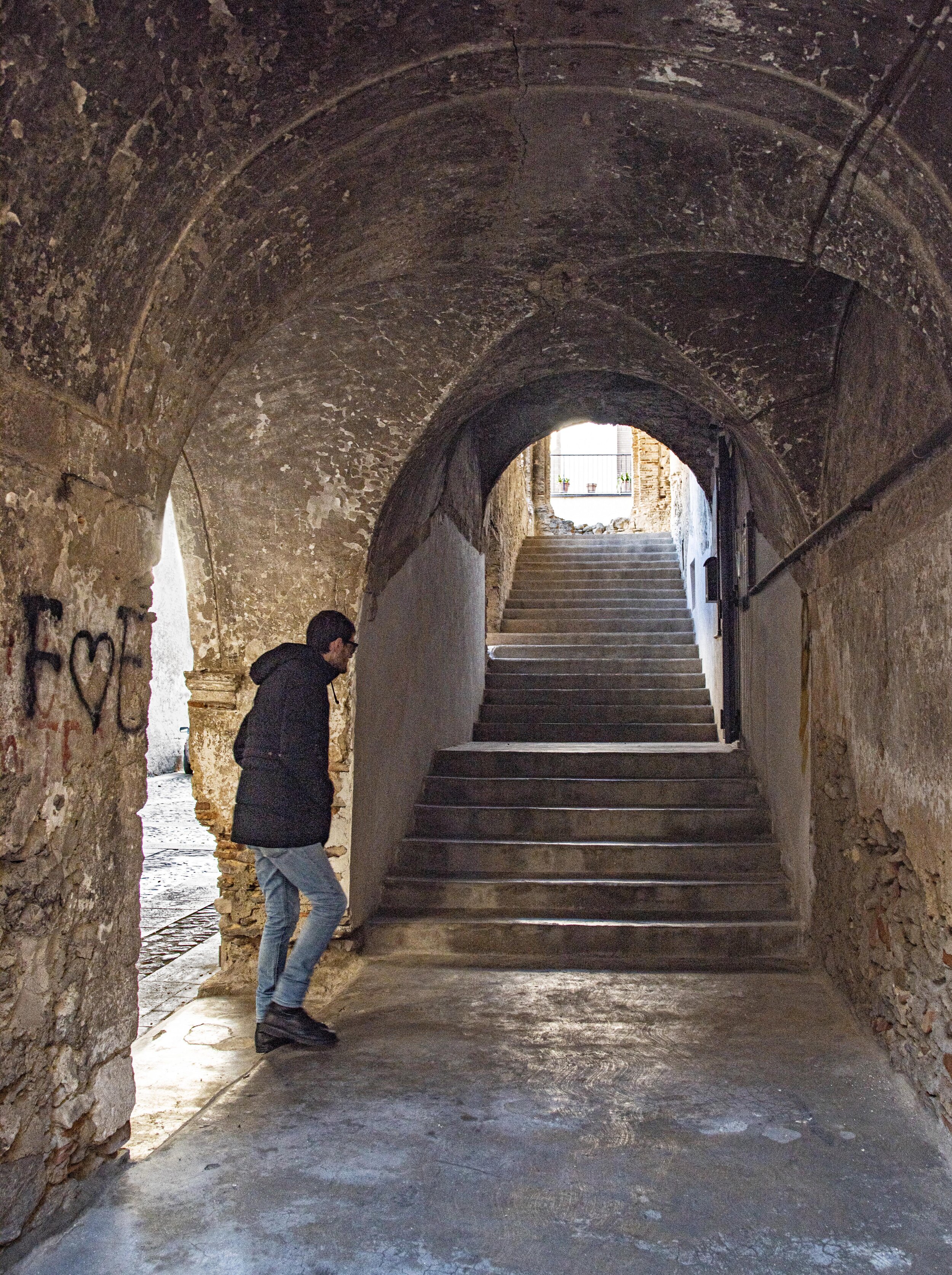
Walking around the outer walls of San Antonio convent area takes one back to the 1540s when the church and convent were built.
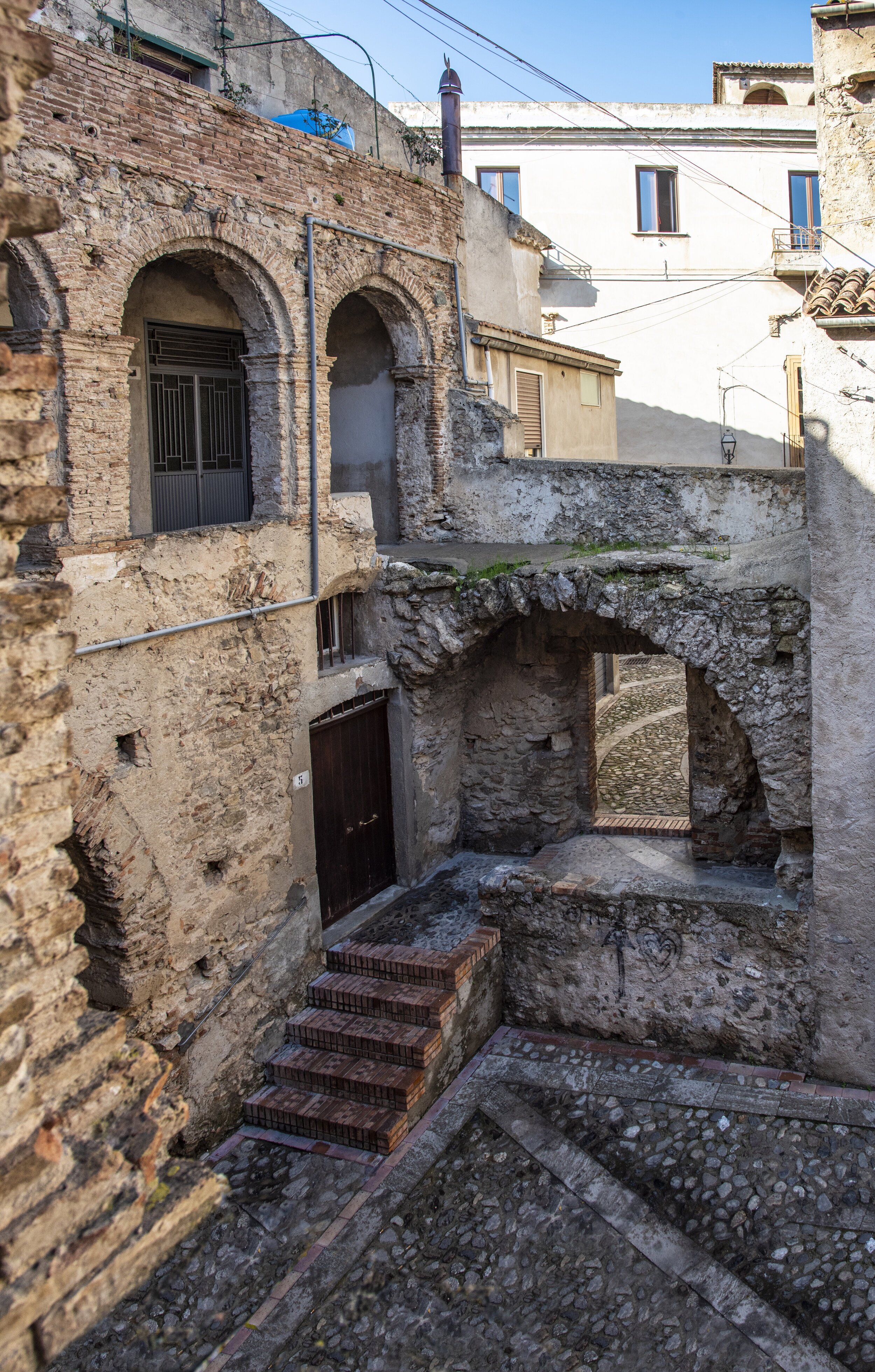
In 1542 nuns and priests walked these areas attending to the spiritual needs of the people of Terranova. In the same year Hernando de Soto died while searching for gold near the Mississippi River!
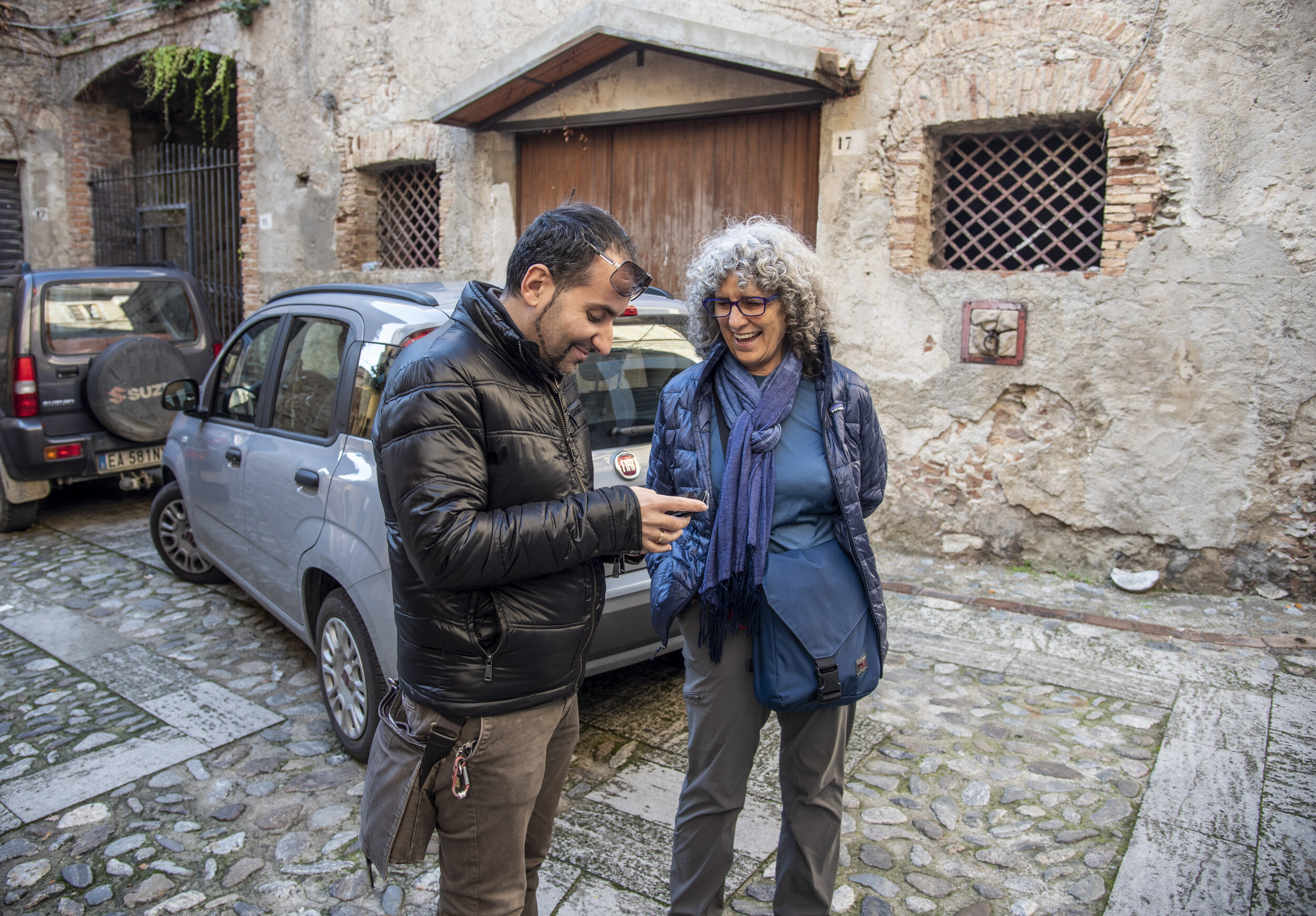
With the tour of San Antonio finished, Luigi departed and Eugenio decided he would take us on a tour of the old city.
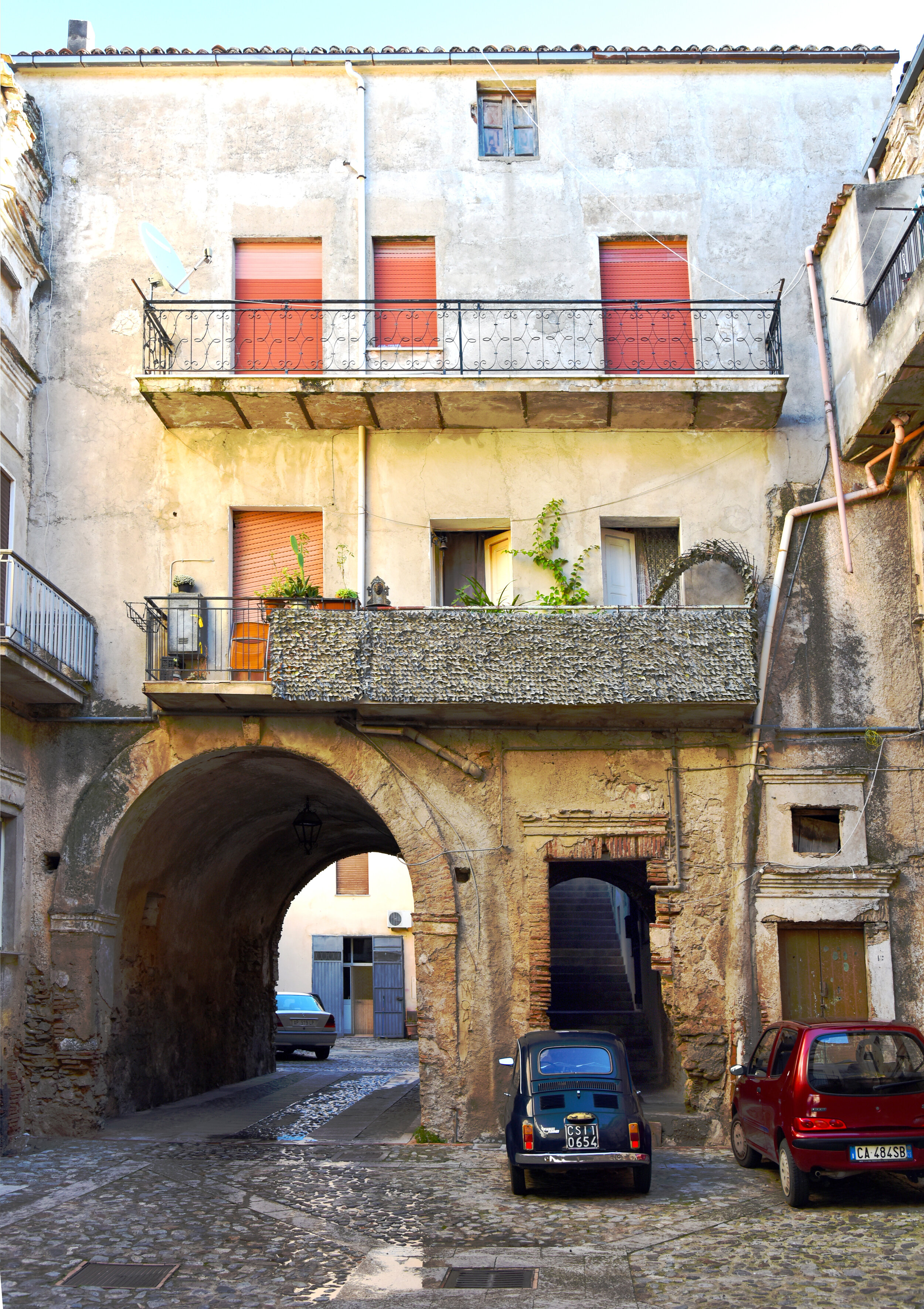
We went through the arch of the wall remains from the old feudal castle that has been integrated into the modern life of Terranova.

The feudal castle, shown earlier in the painting with the two popes, was originally built by the Normans in the 11th century.
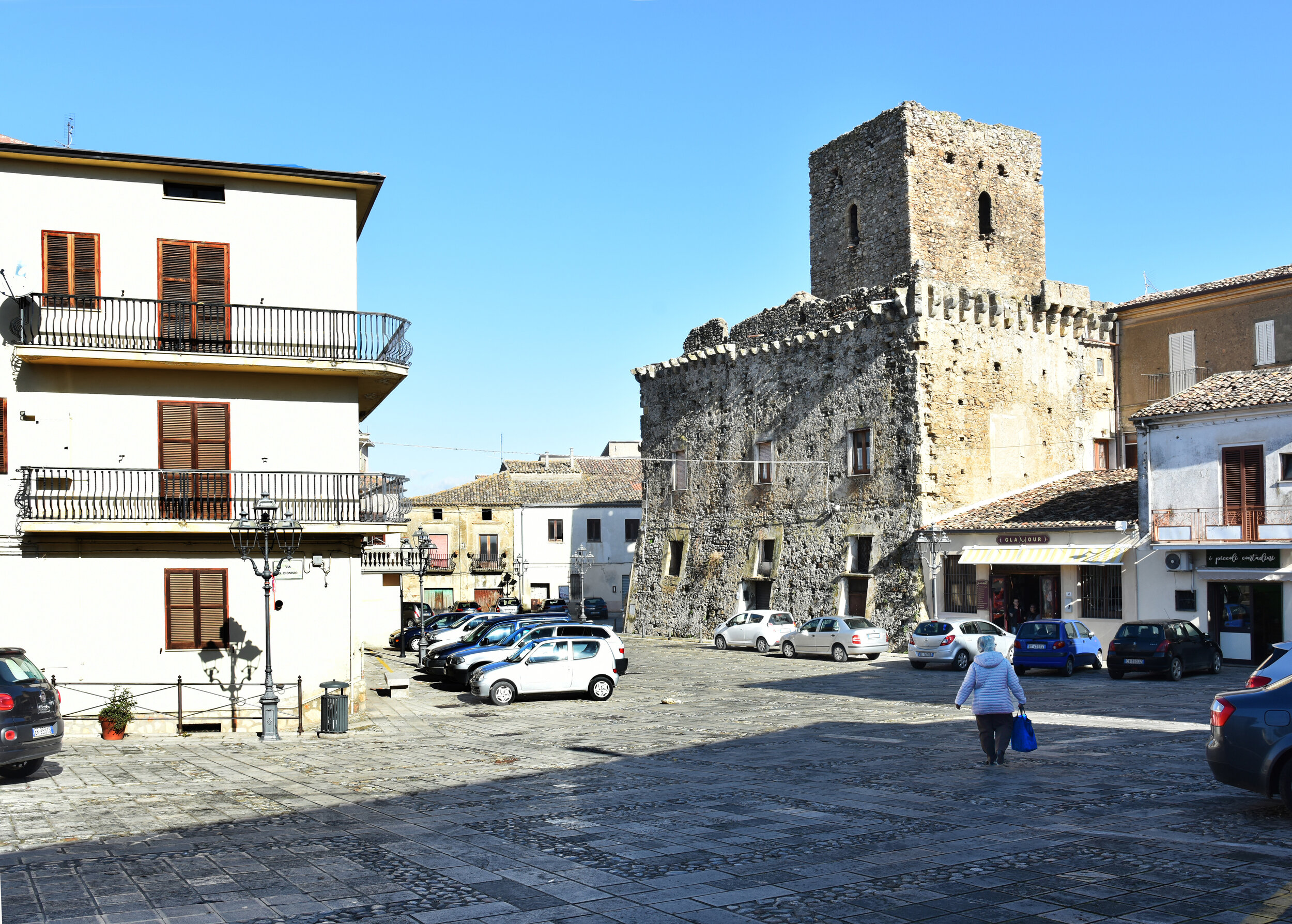
The village of Terranova da Sibari was built around the castle in the 15th century.
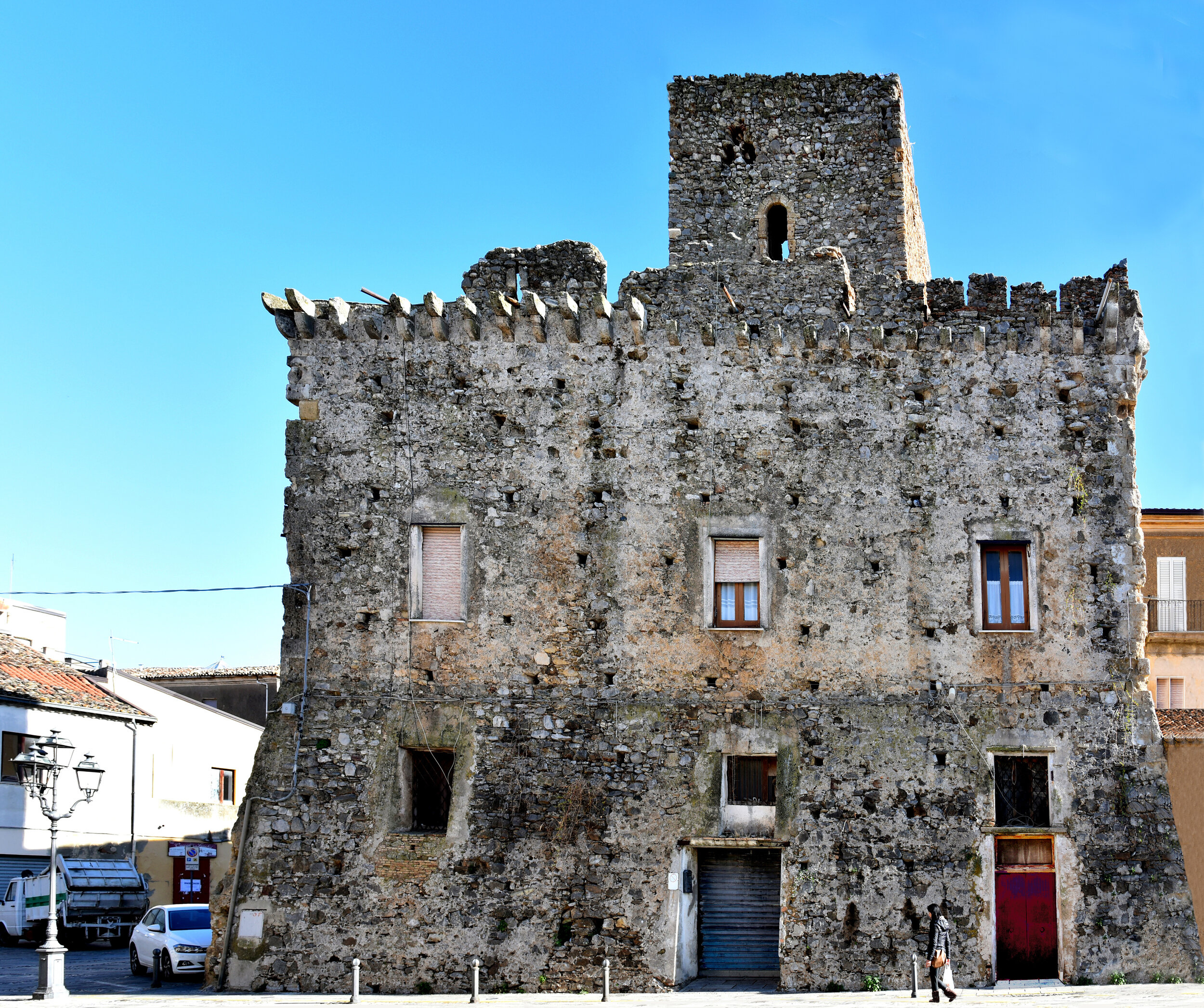
A part of everyday life - this young woman walks under the castle's donjon, the heavily fortified central tower or keep, built after the 15th century.
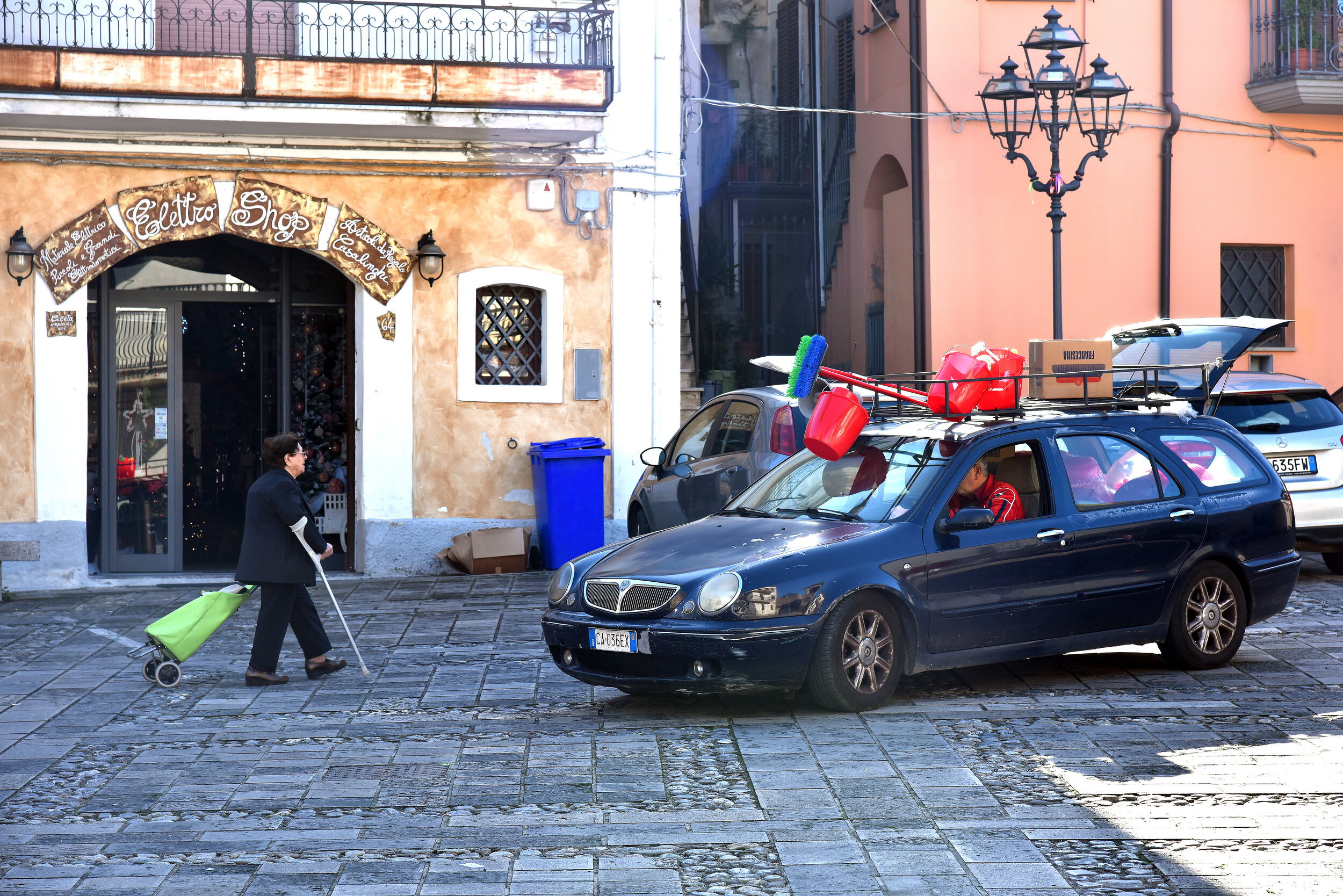
Mobile sales in the hill town Terranova translates to a merchant driving through the narrow streets of town selling a variety of household goods.
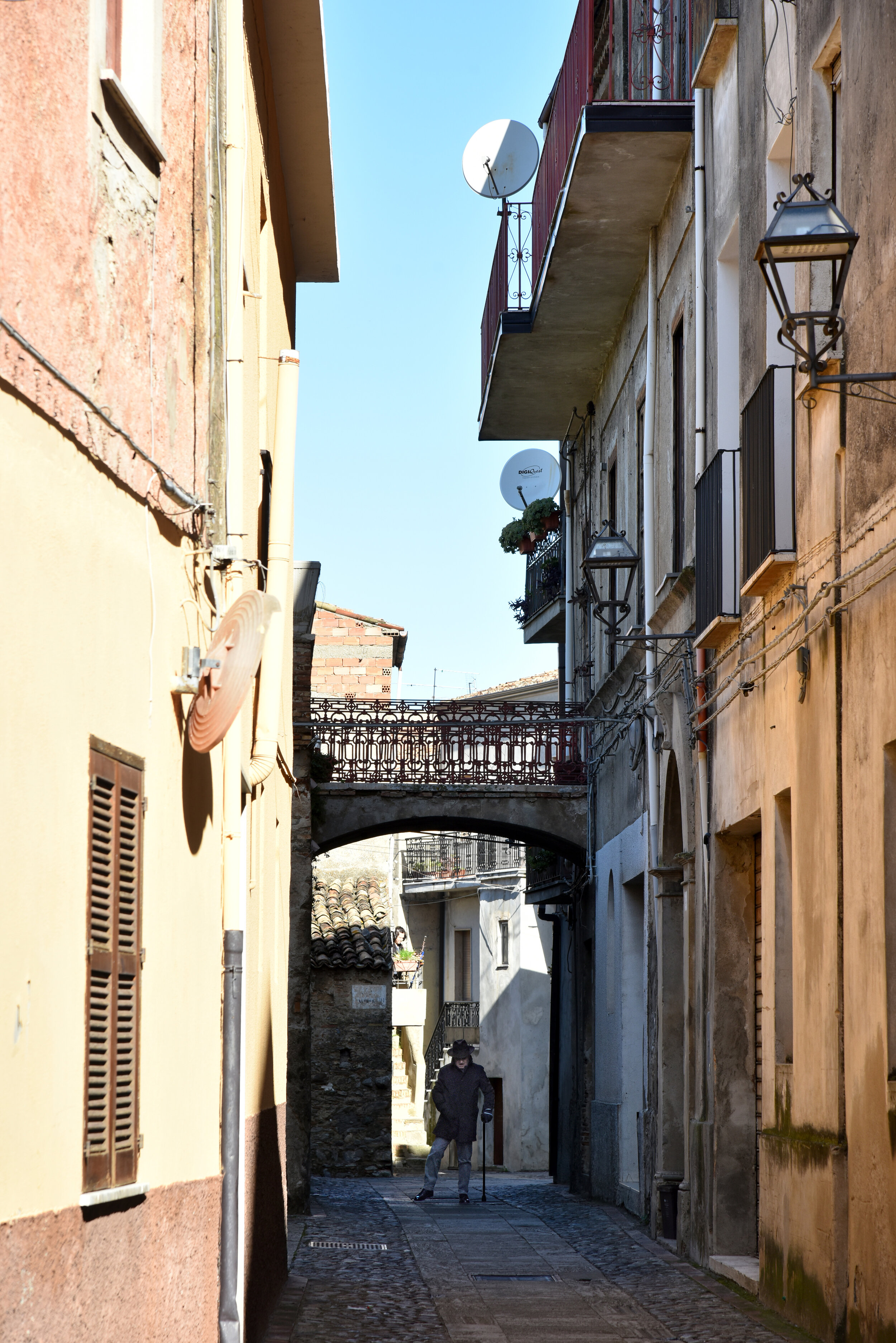
An early morning walk by a Terranova elder in the old part of town.

Walking in old town Terranova da Sibari toward Saint Peter's Church.
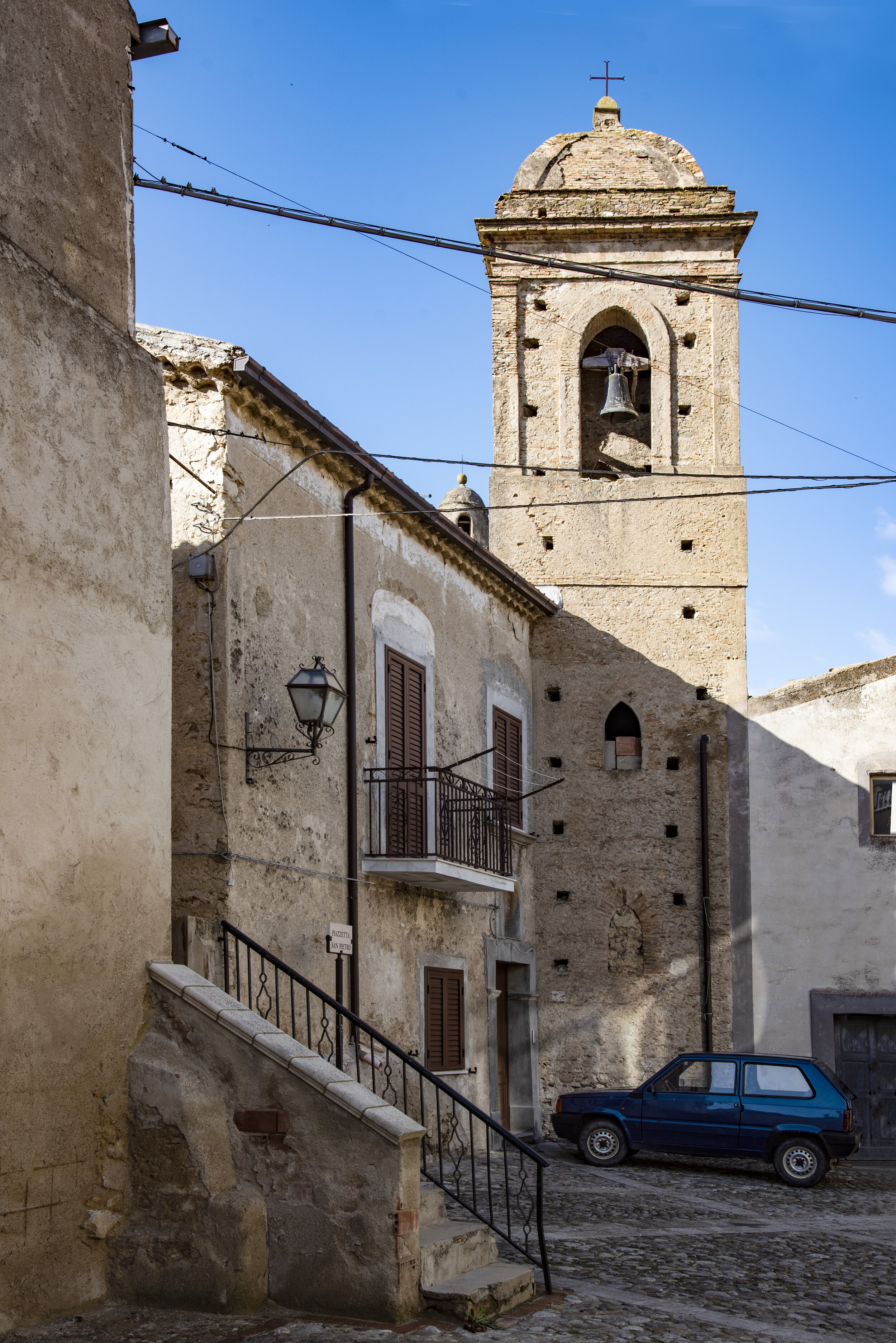
Piazzetta San Pietro and Saint Peter's Church in old part of Terranova da Sibari.
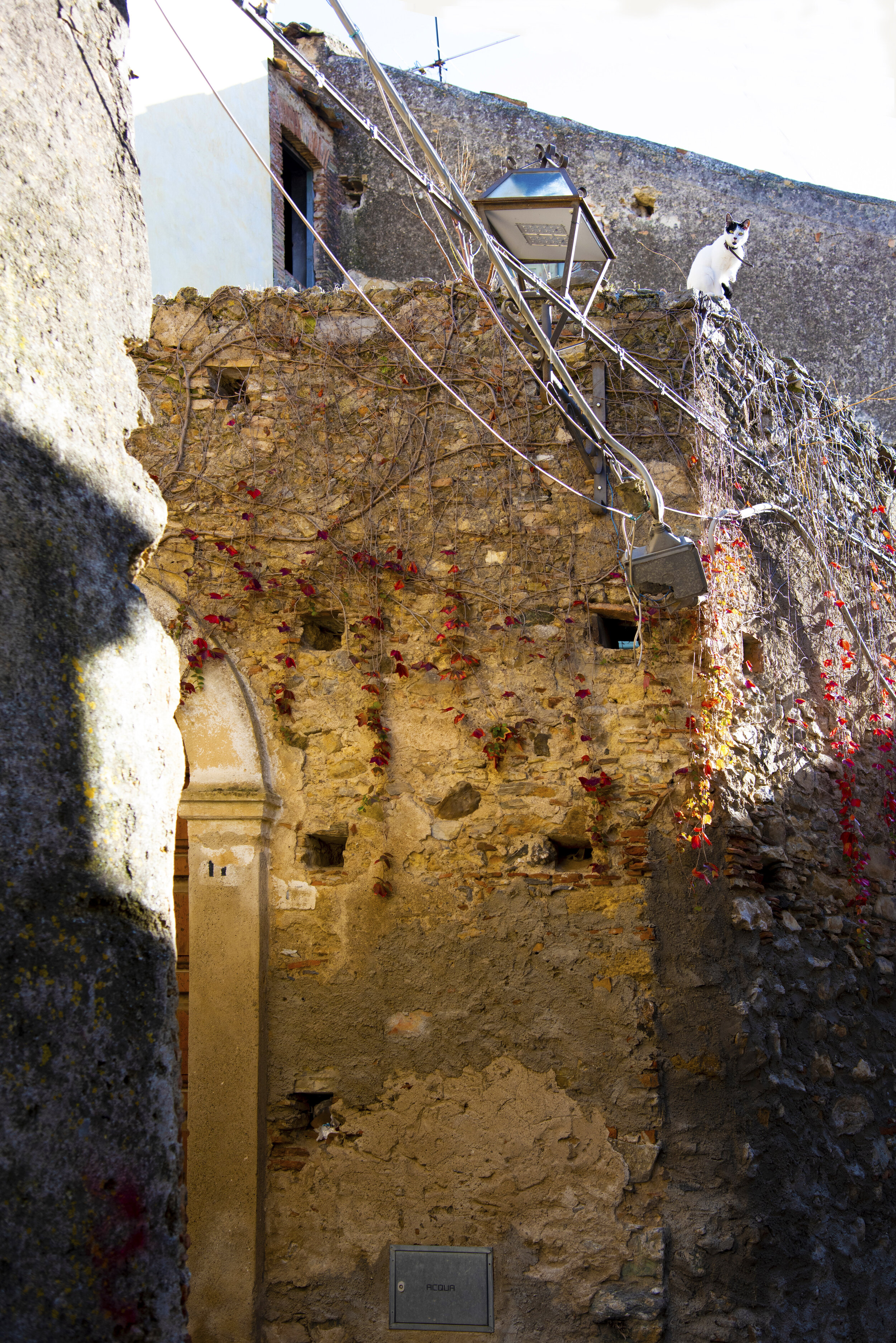
Leaving the old part of town we continued to be observed, this time by the town's cats.
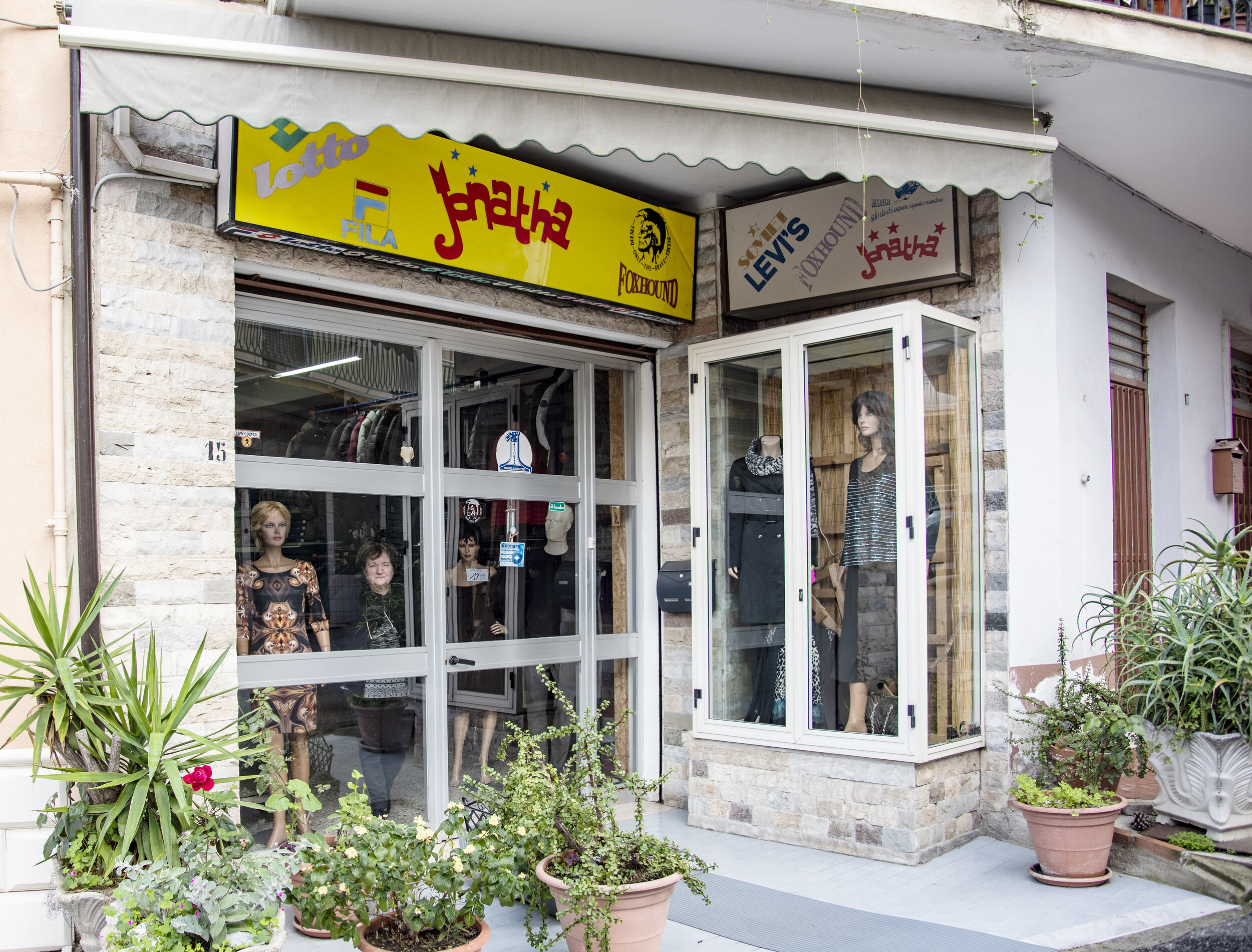
After a great tour I offered to take Eugenio to lunch; but there were no restaurants open. So, he took us to his store/house where we were served lunch by his mother, a classic Italian mother.
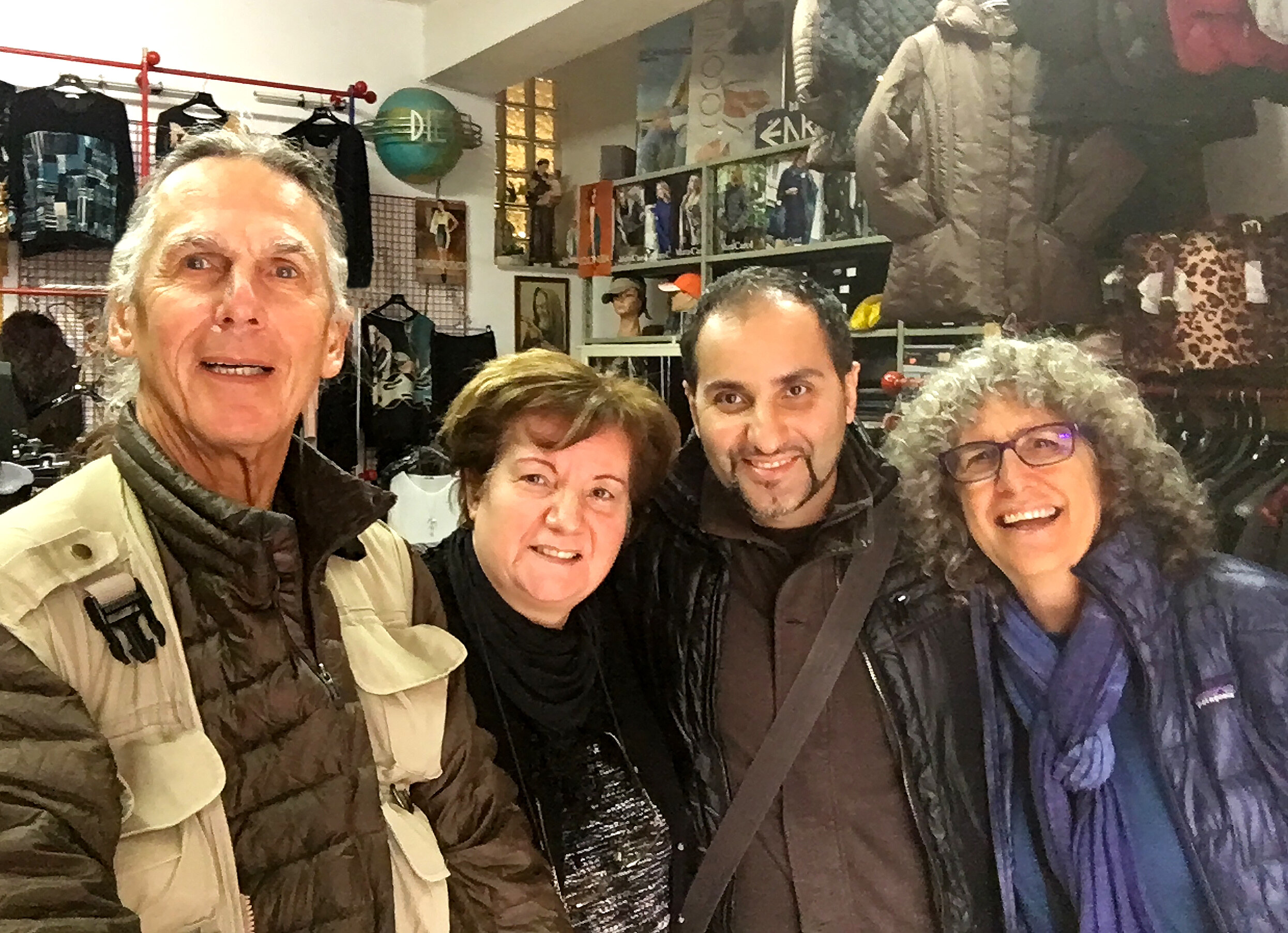
Inside Eugenio's clothing store with his mom. The first thing she did when we sat down in the kitchen was to place the provolone and salami on the table. Familiar?

We left Terranova da Sibari feeling the warmth of the people of Cosenza, Calabria, Italy. They took us into their hearts and made two strangers feel like family.
PrevNext